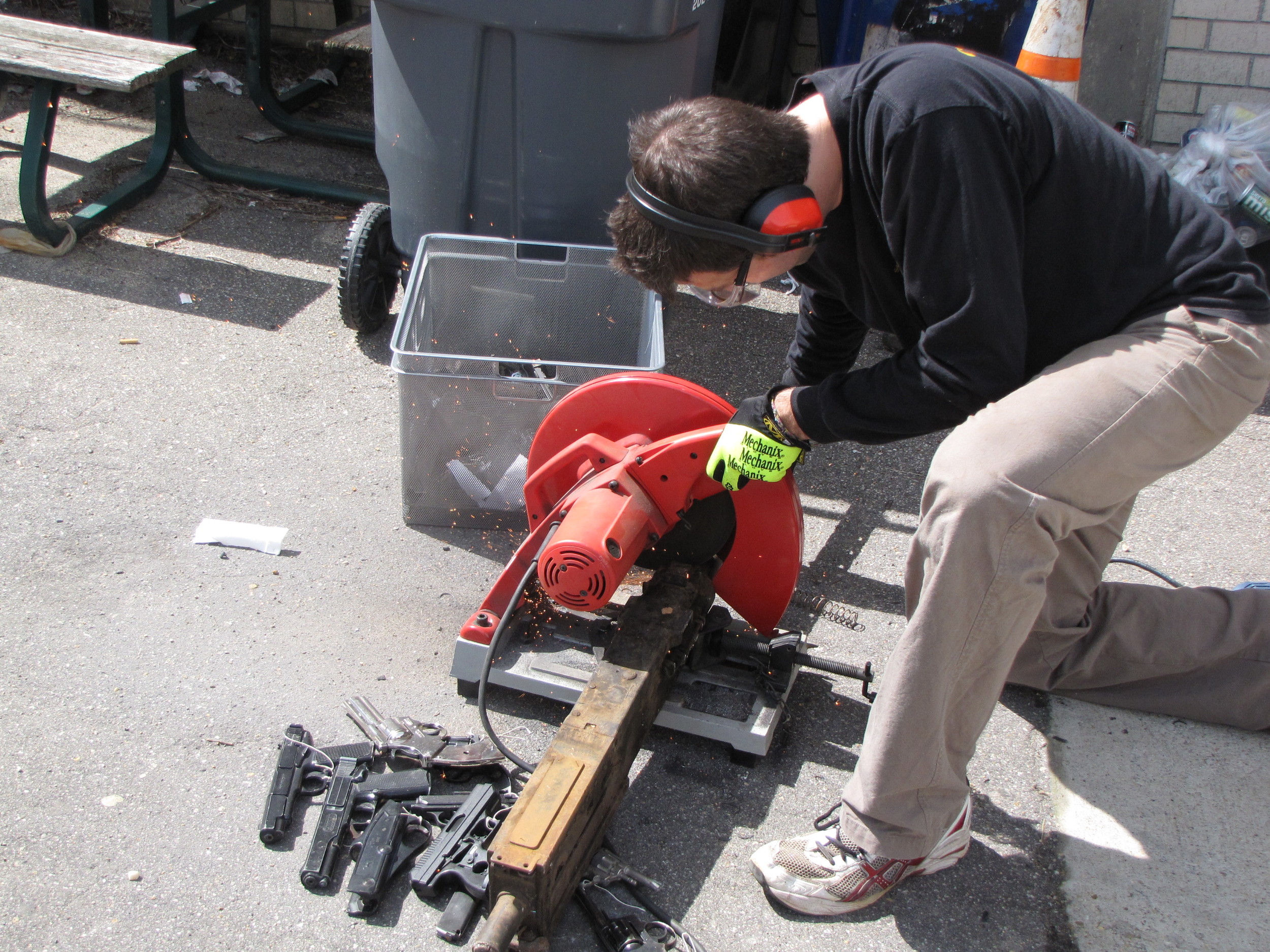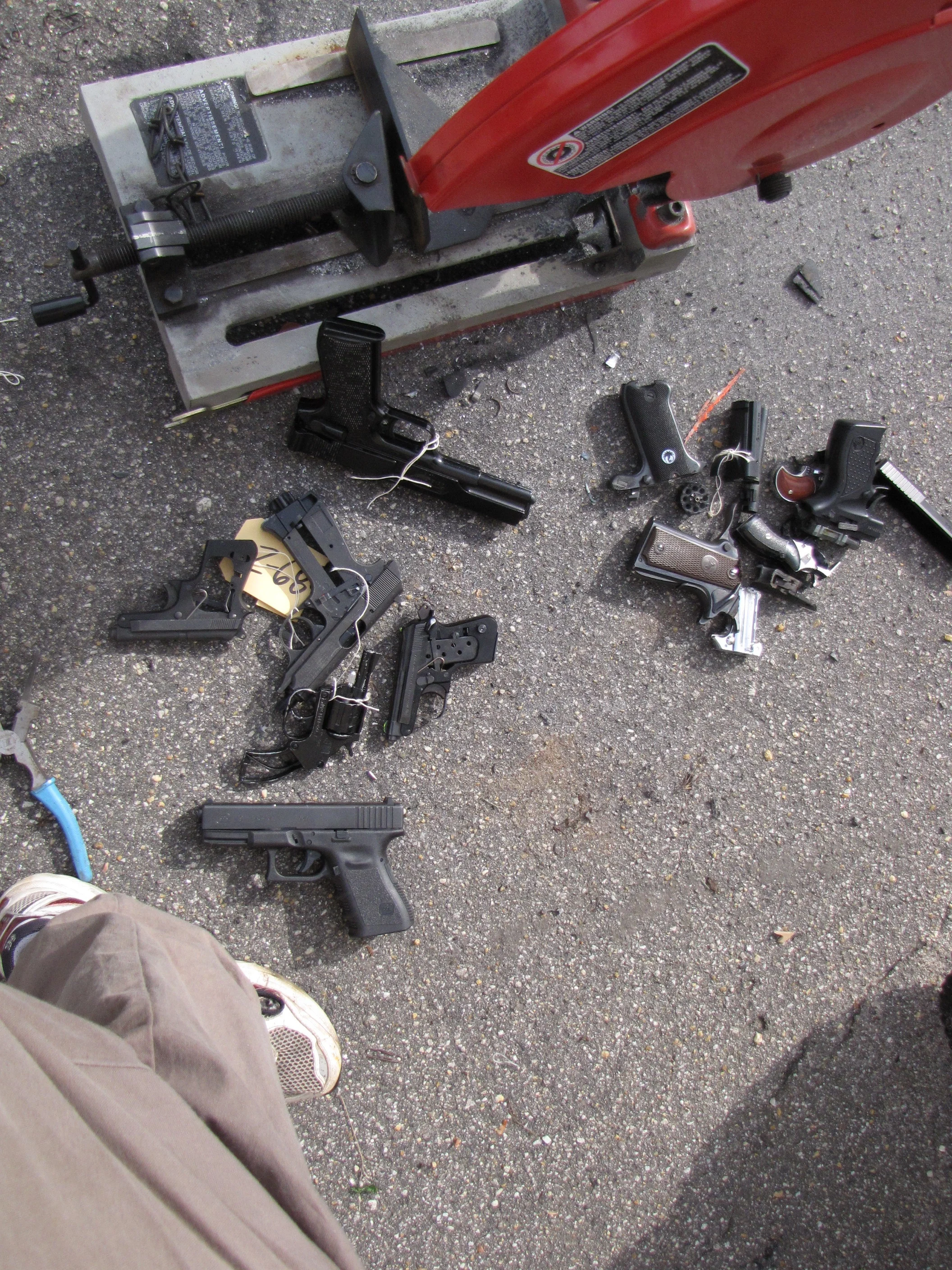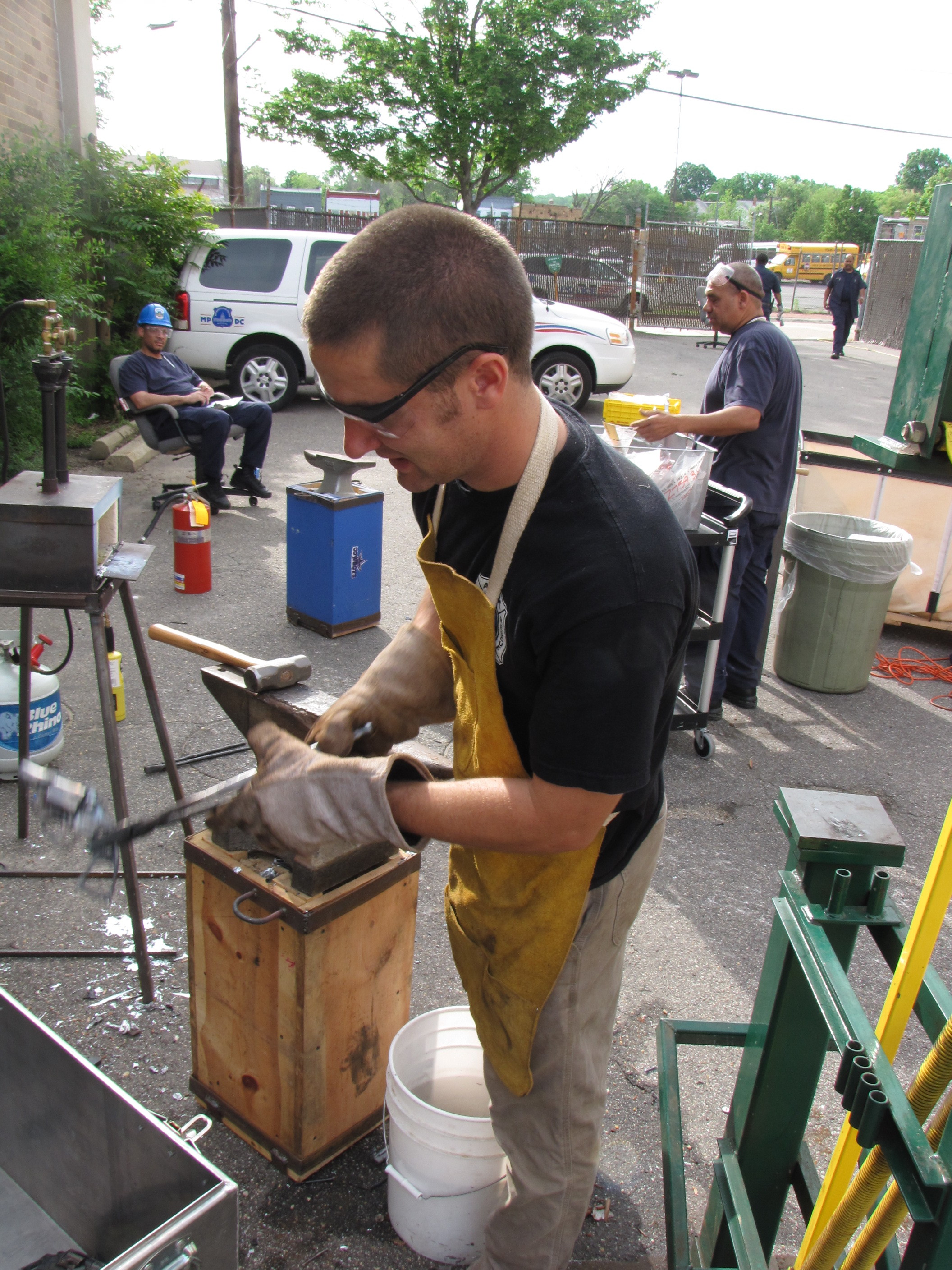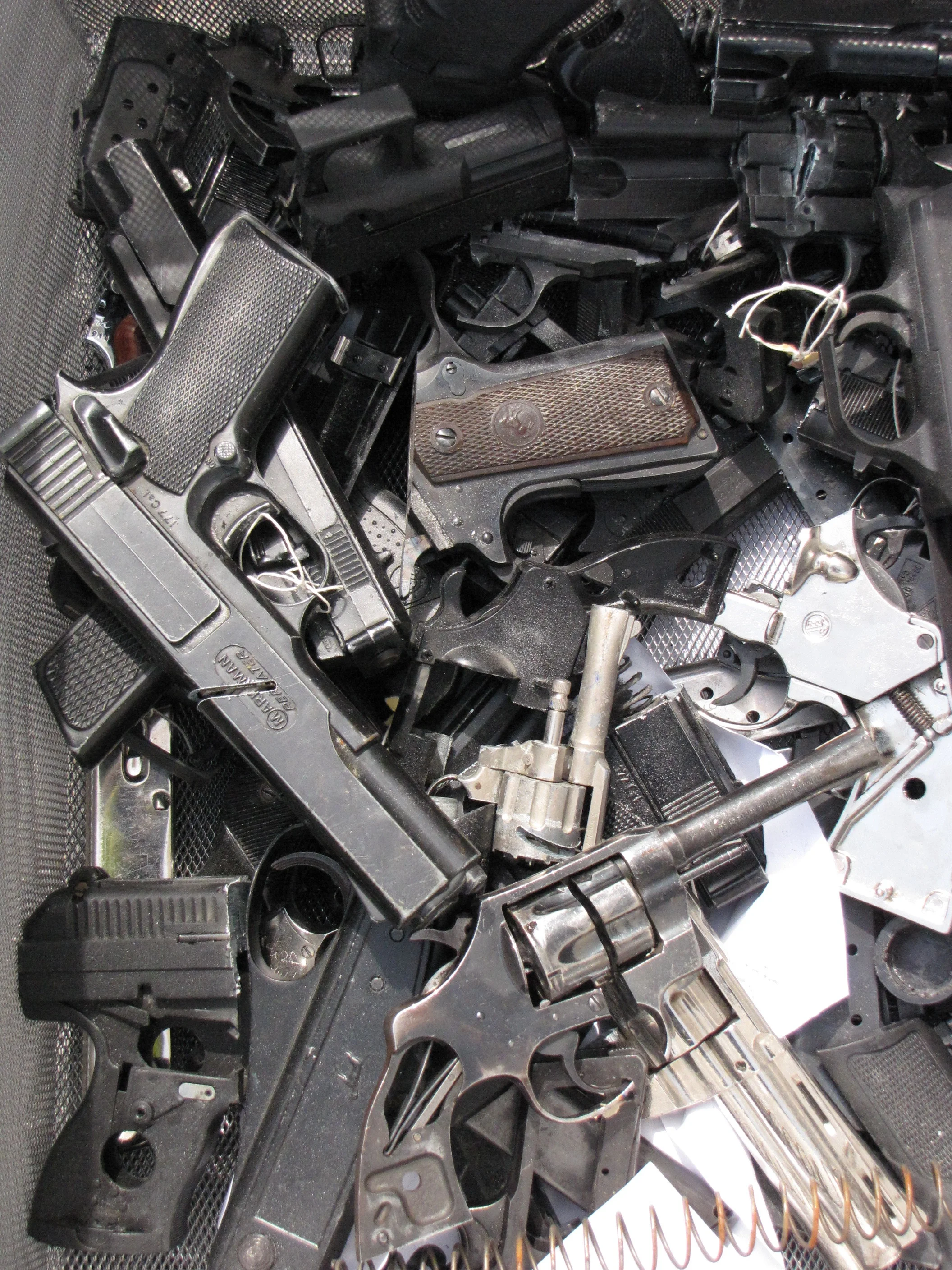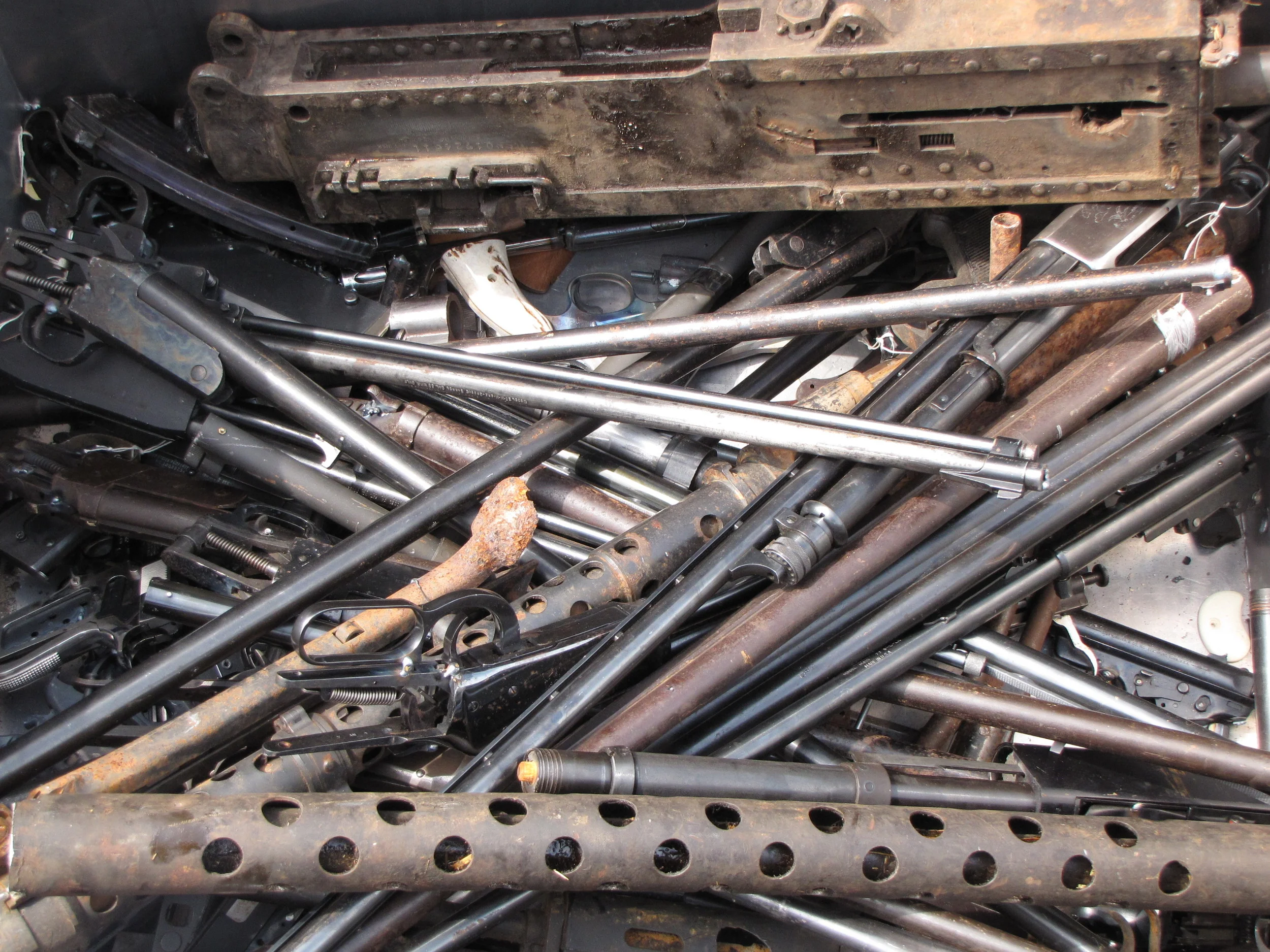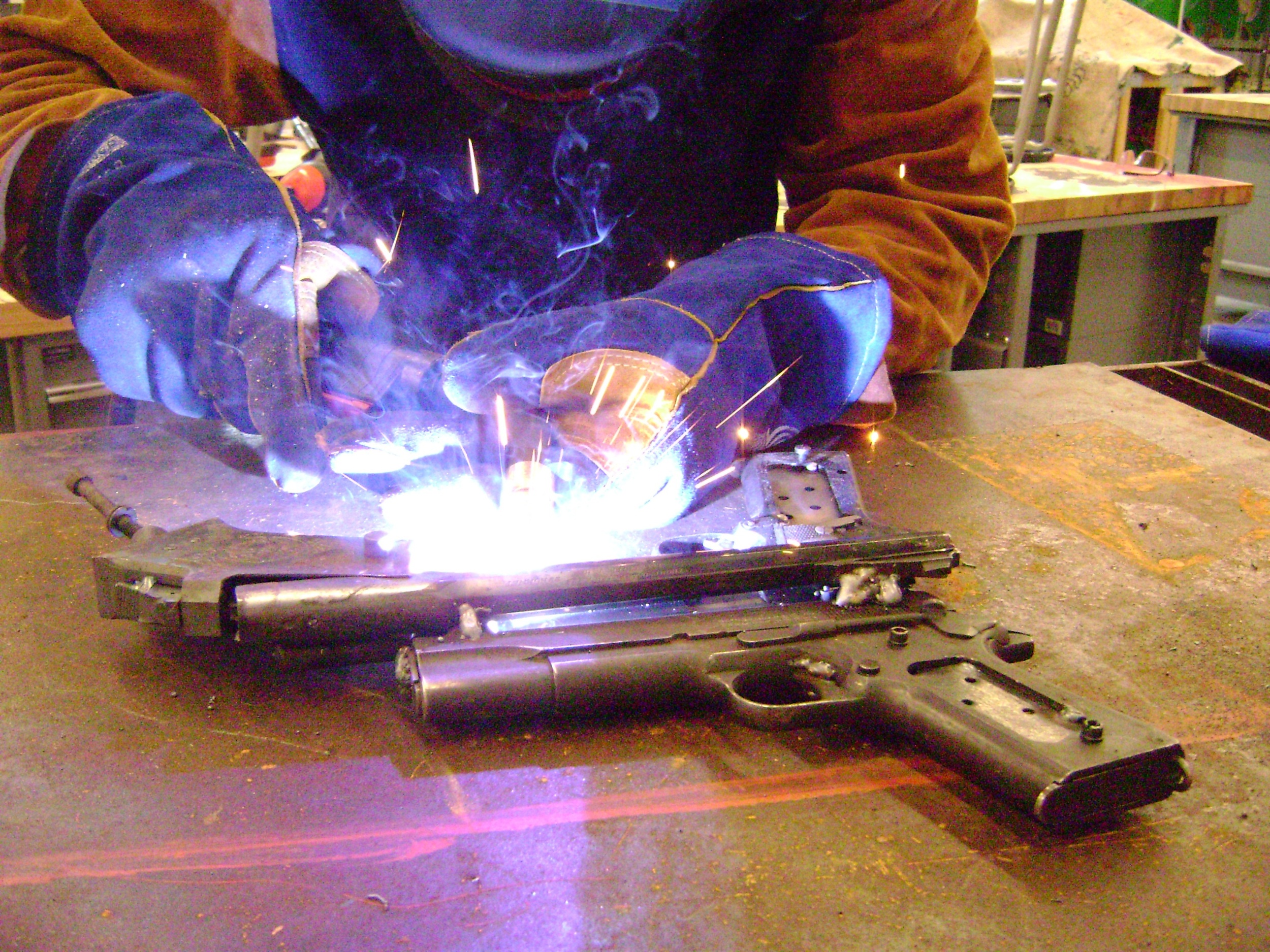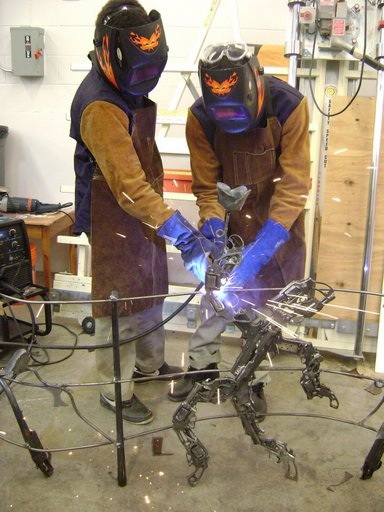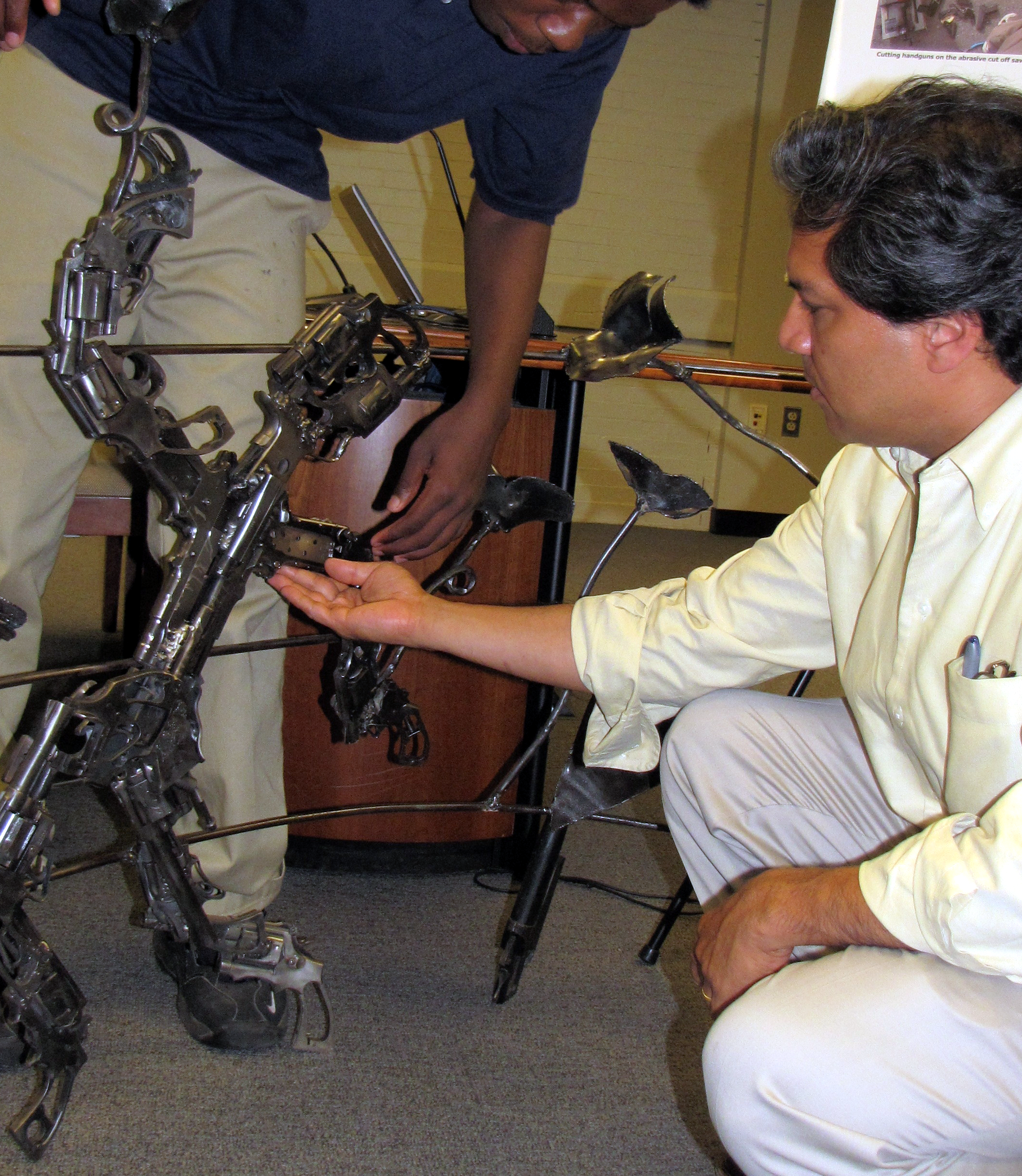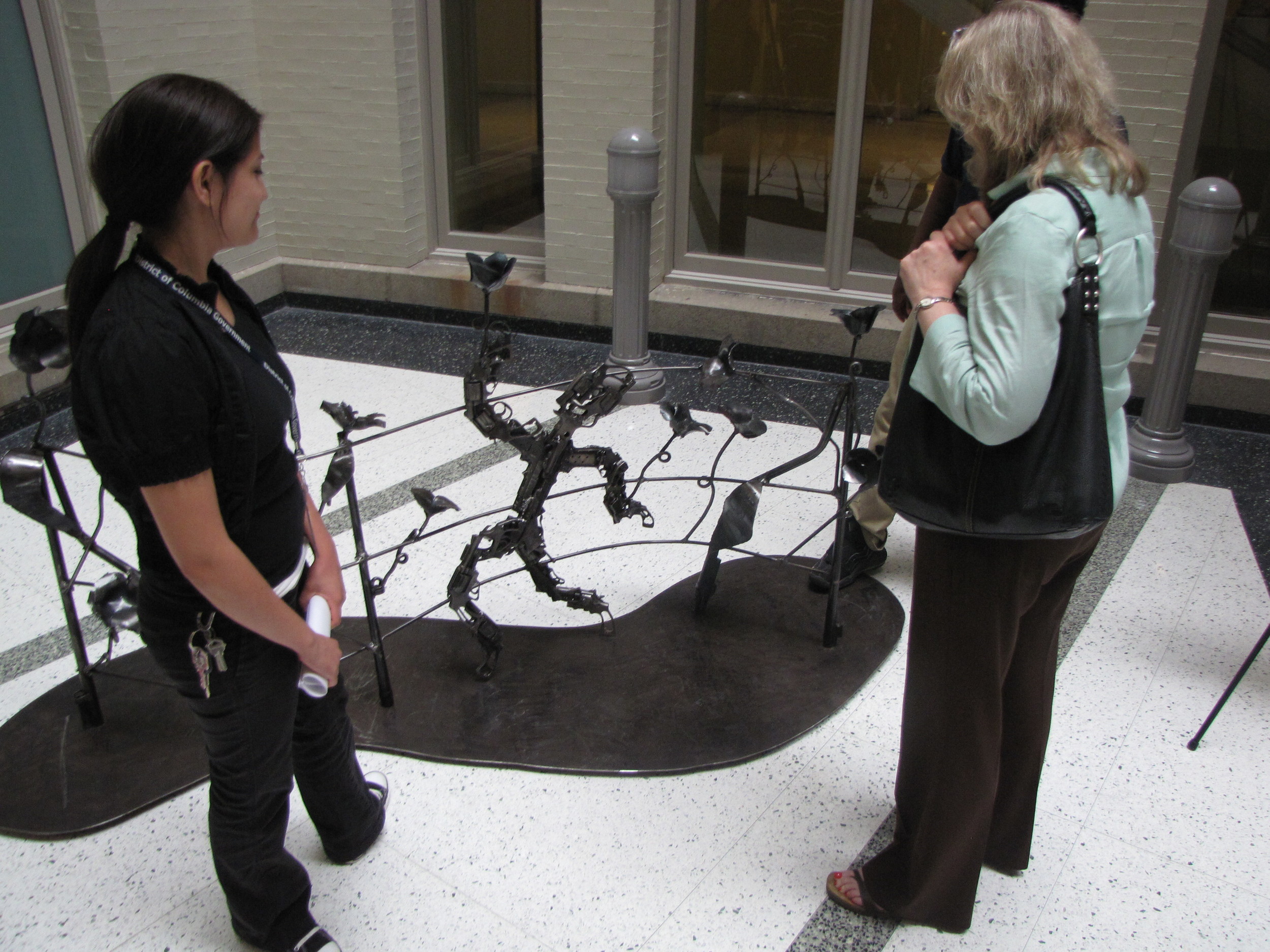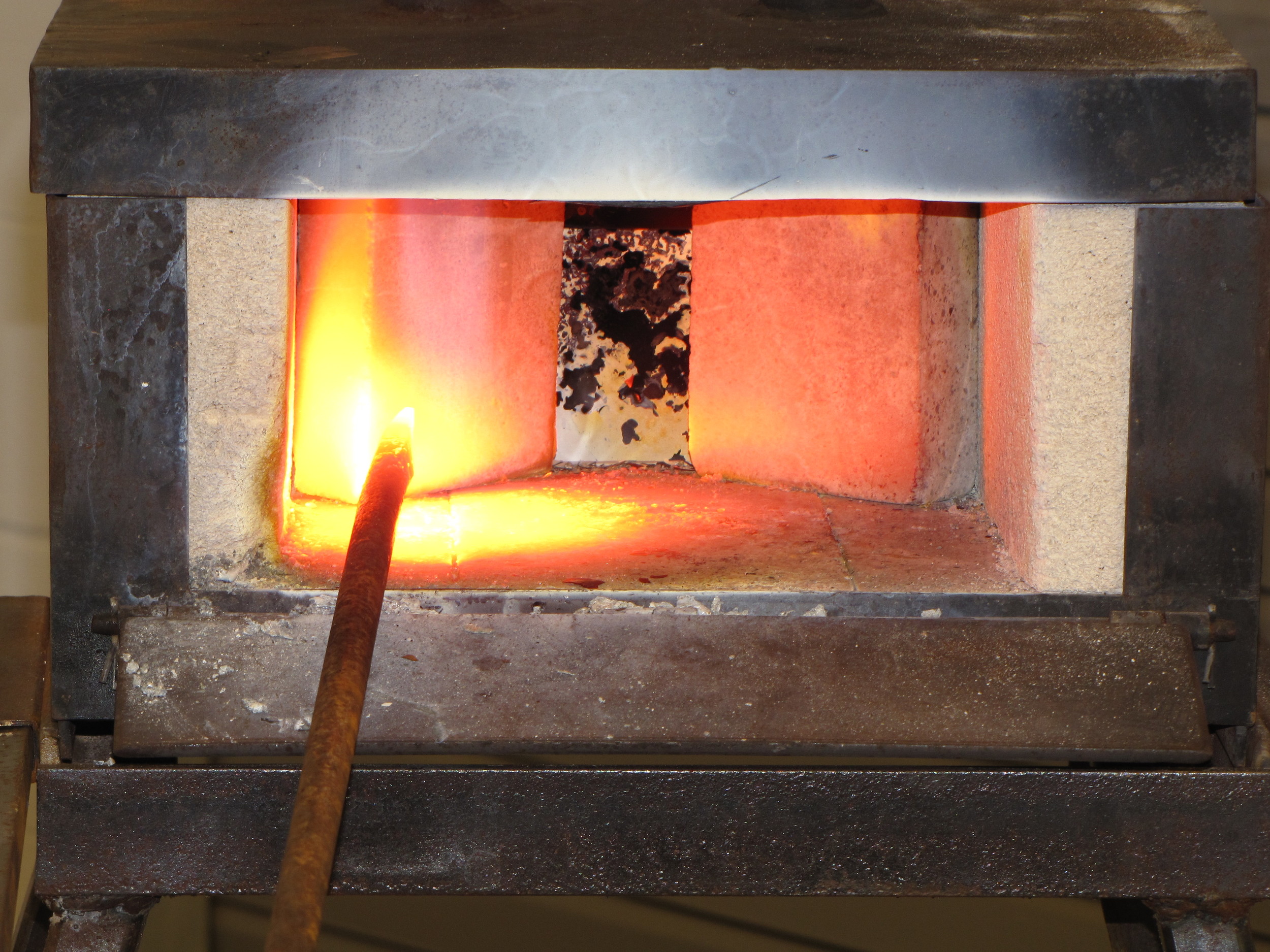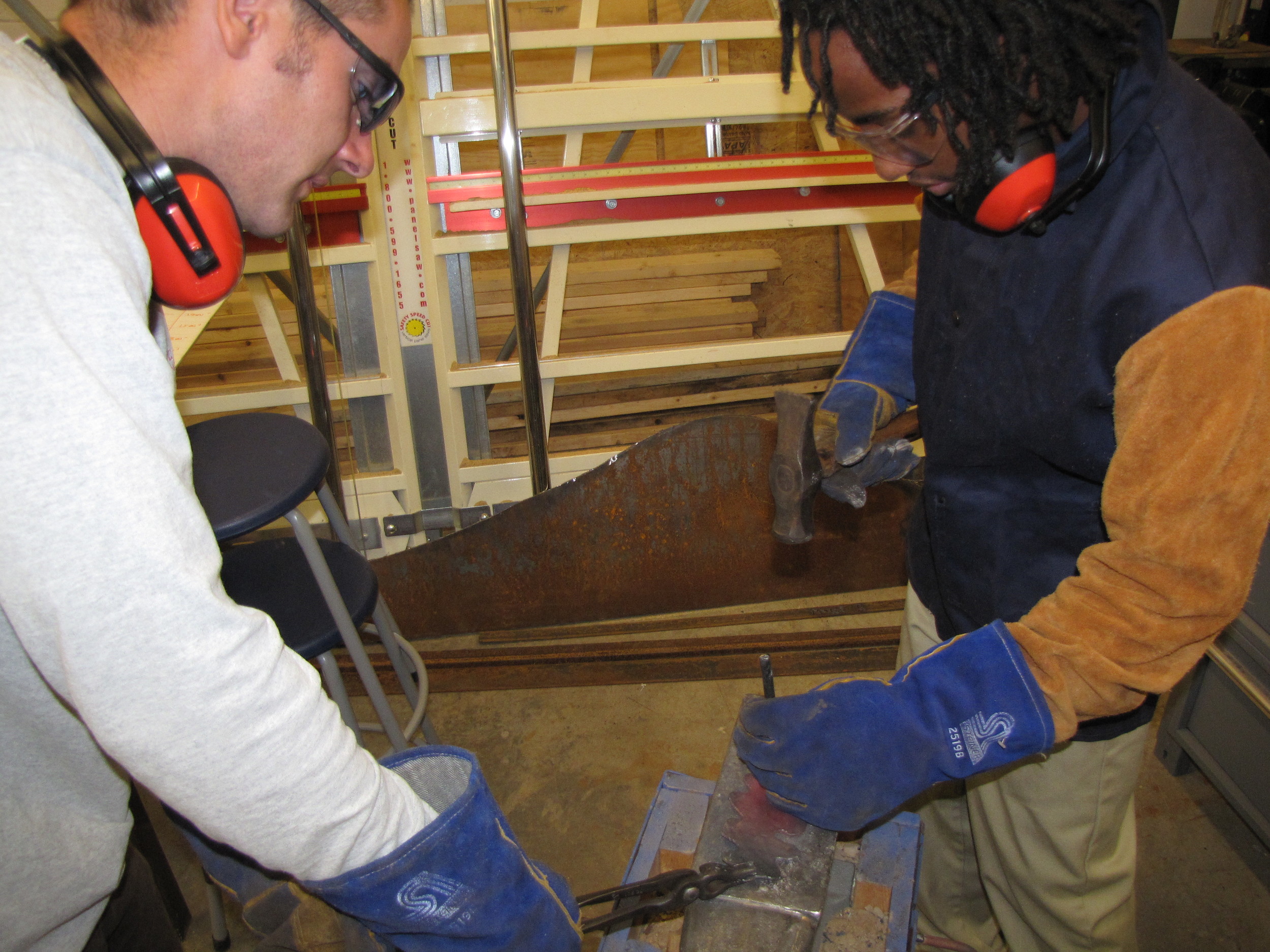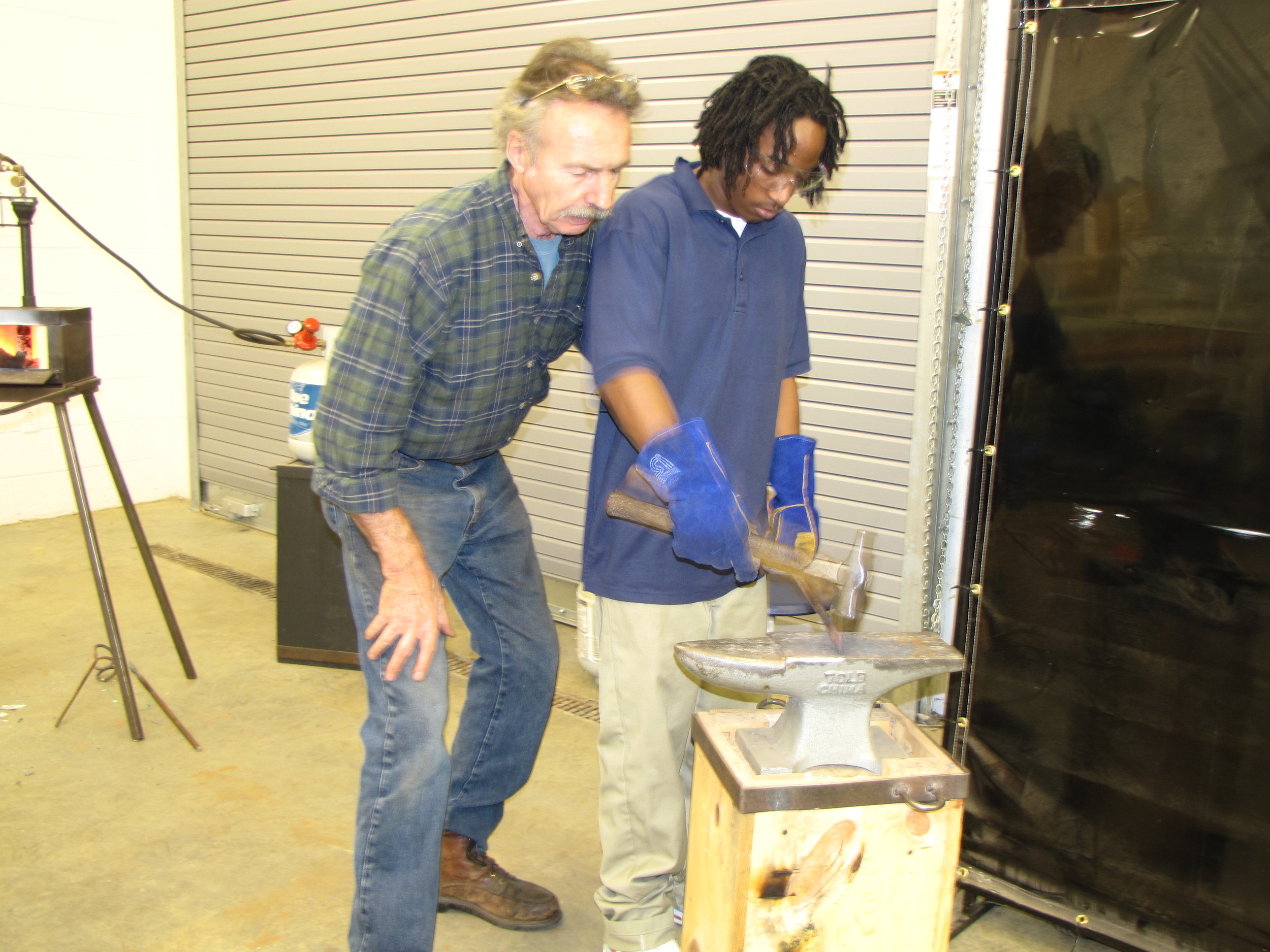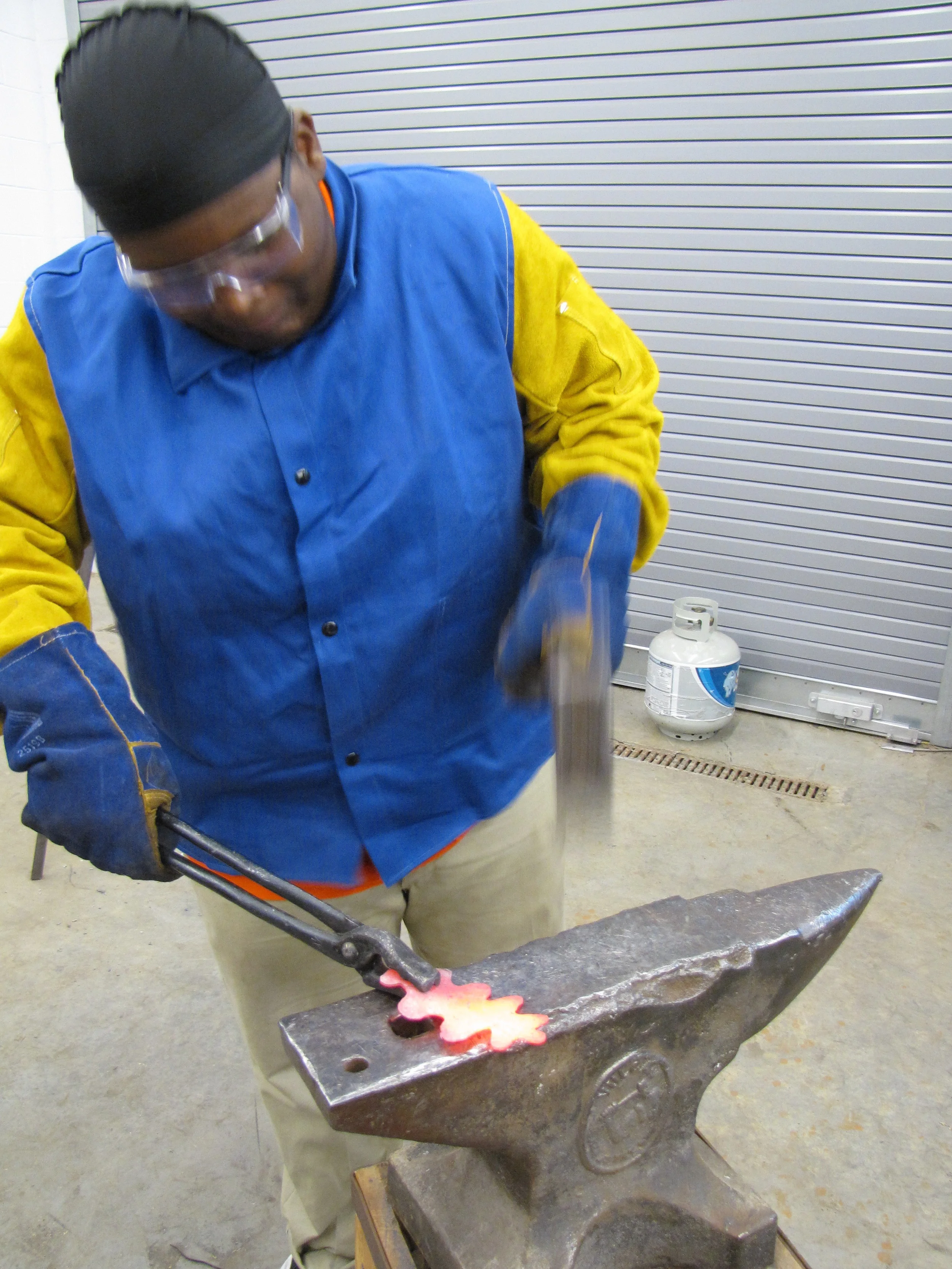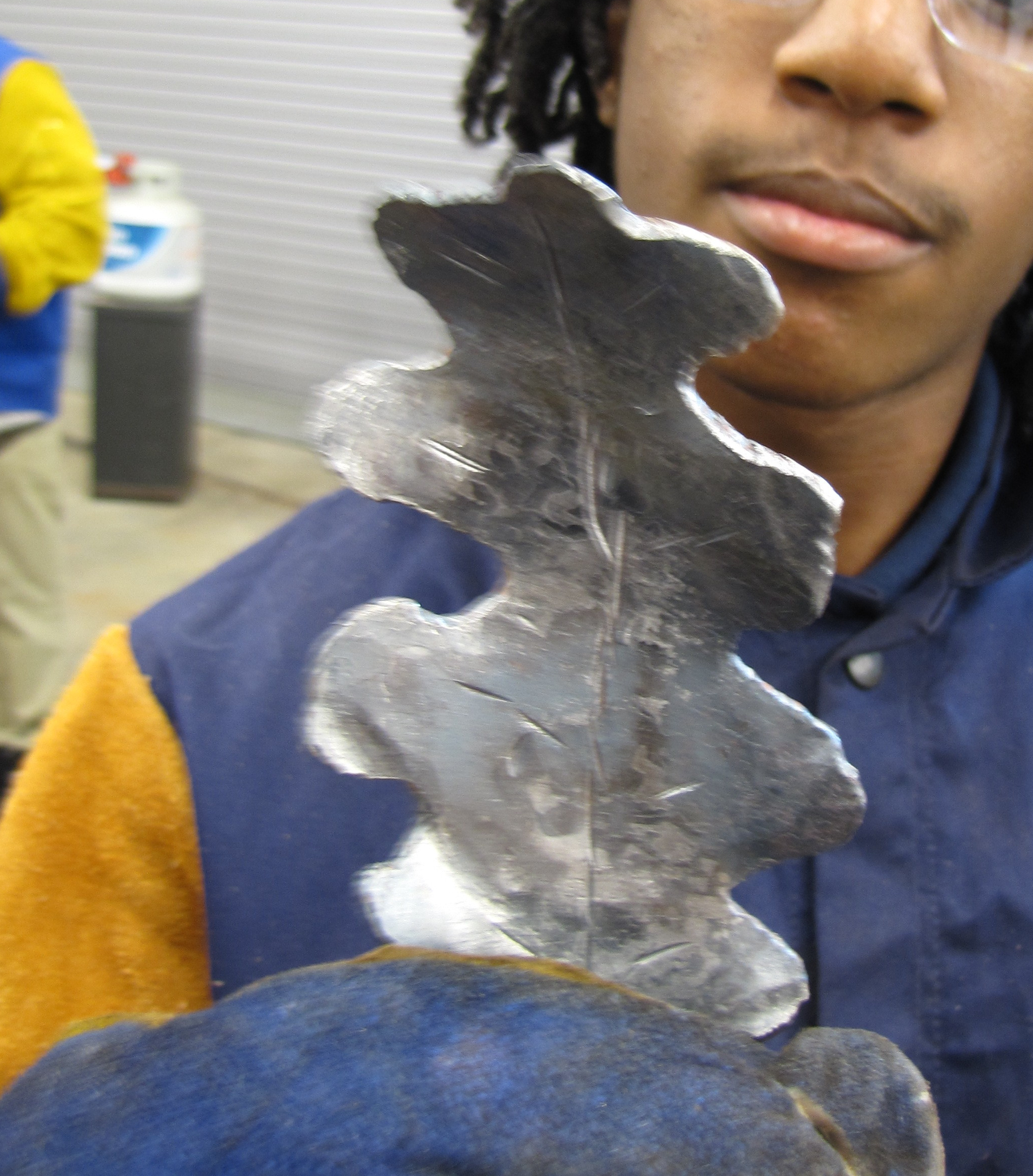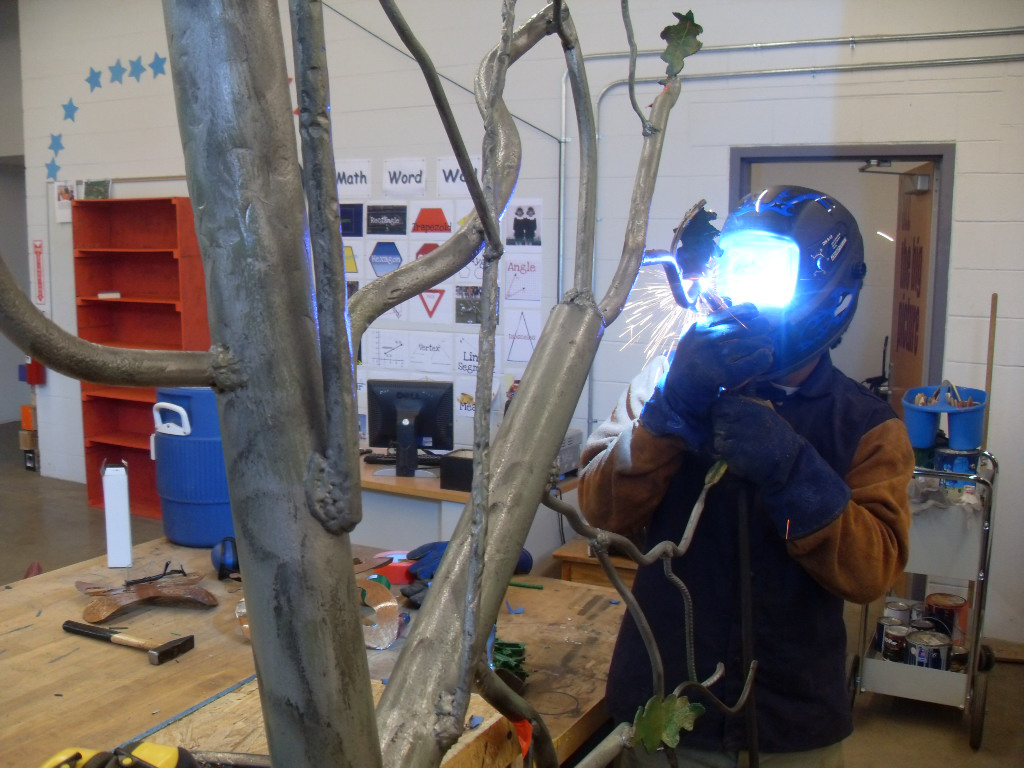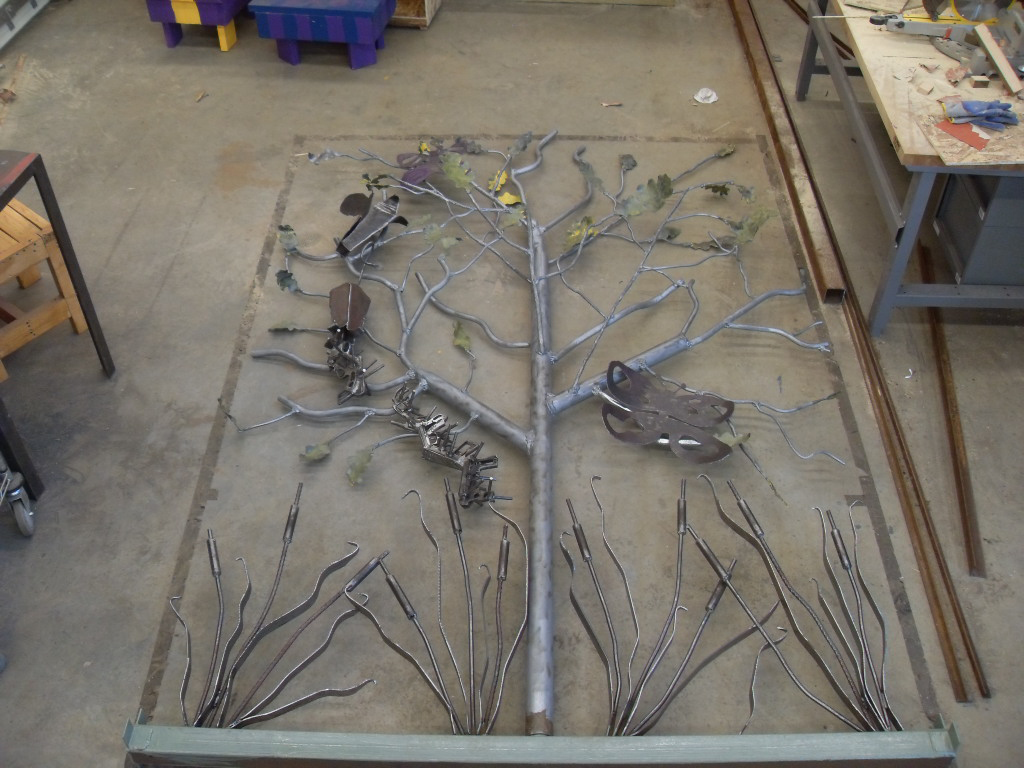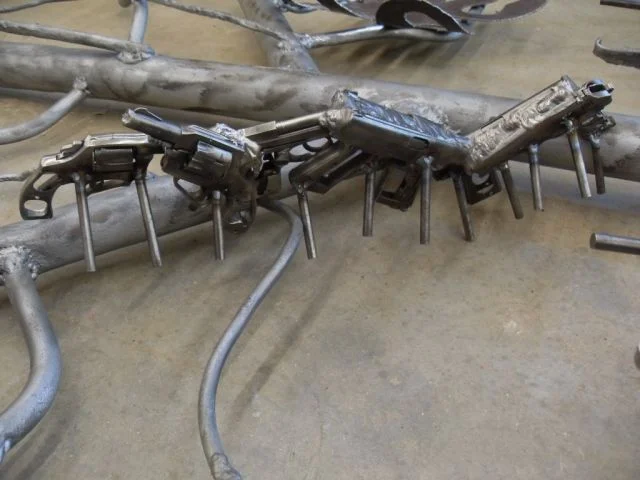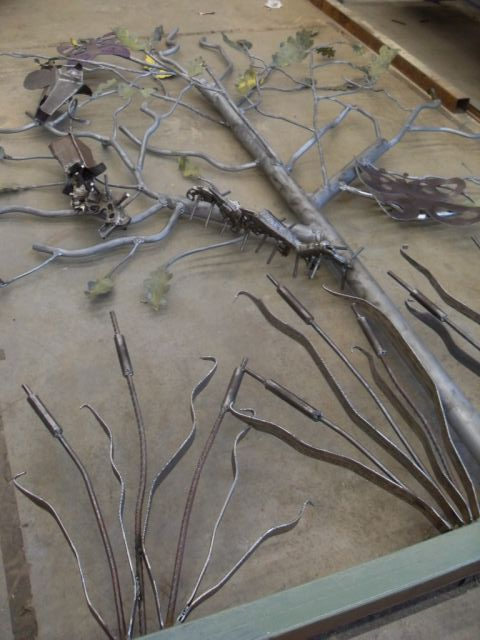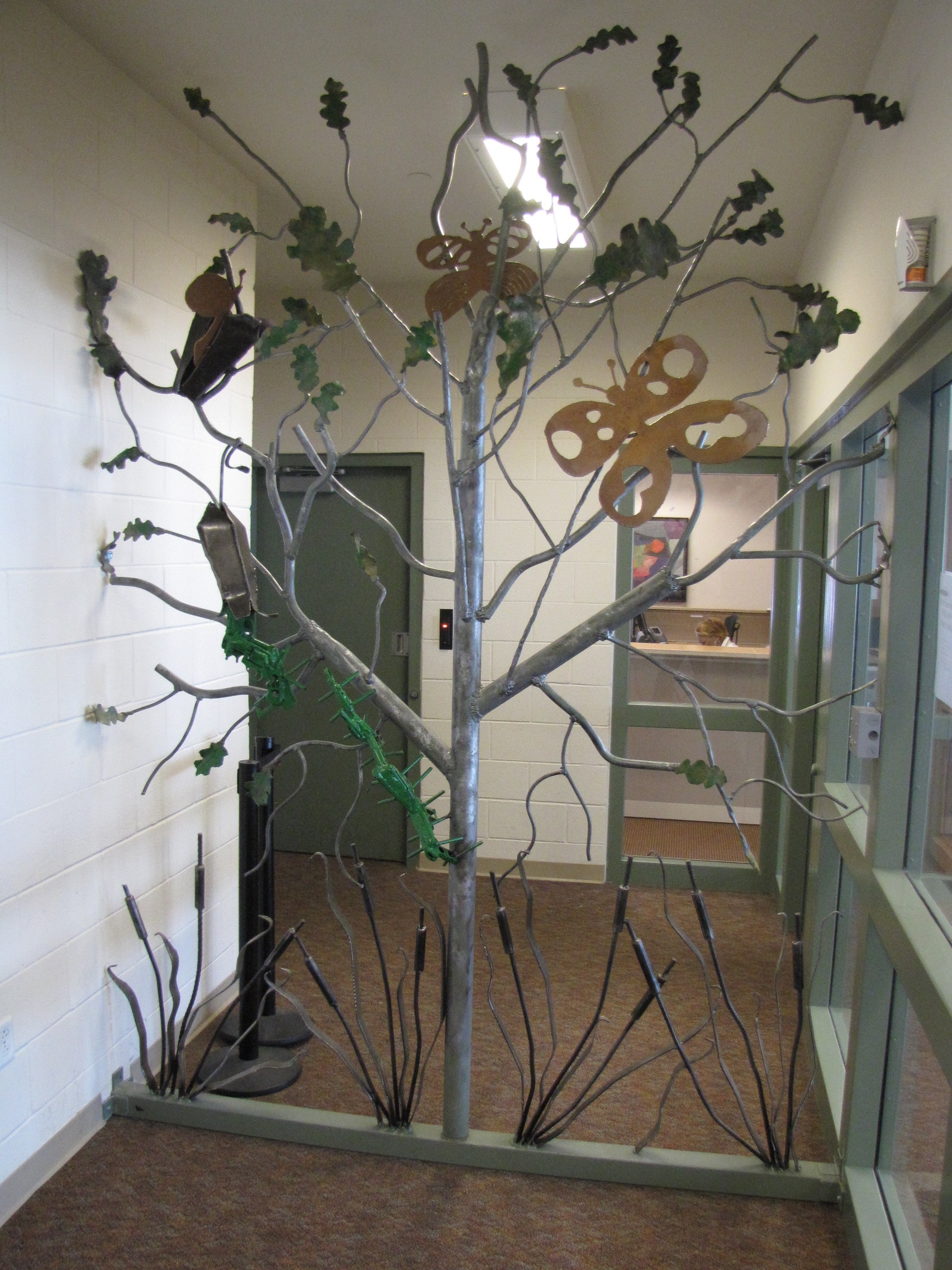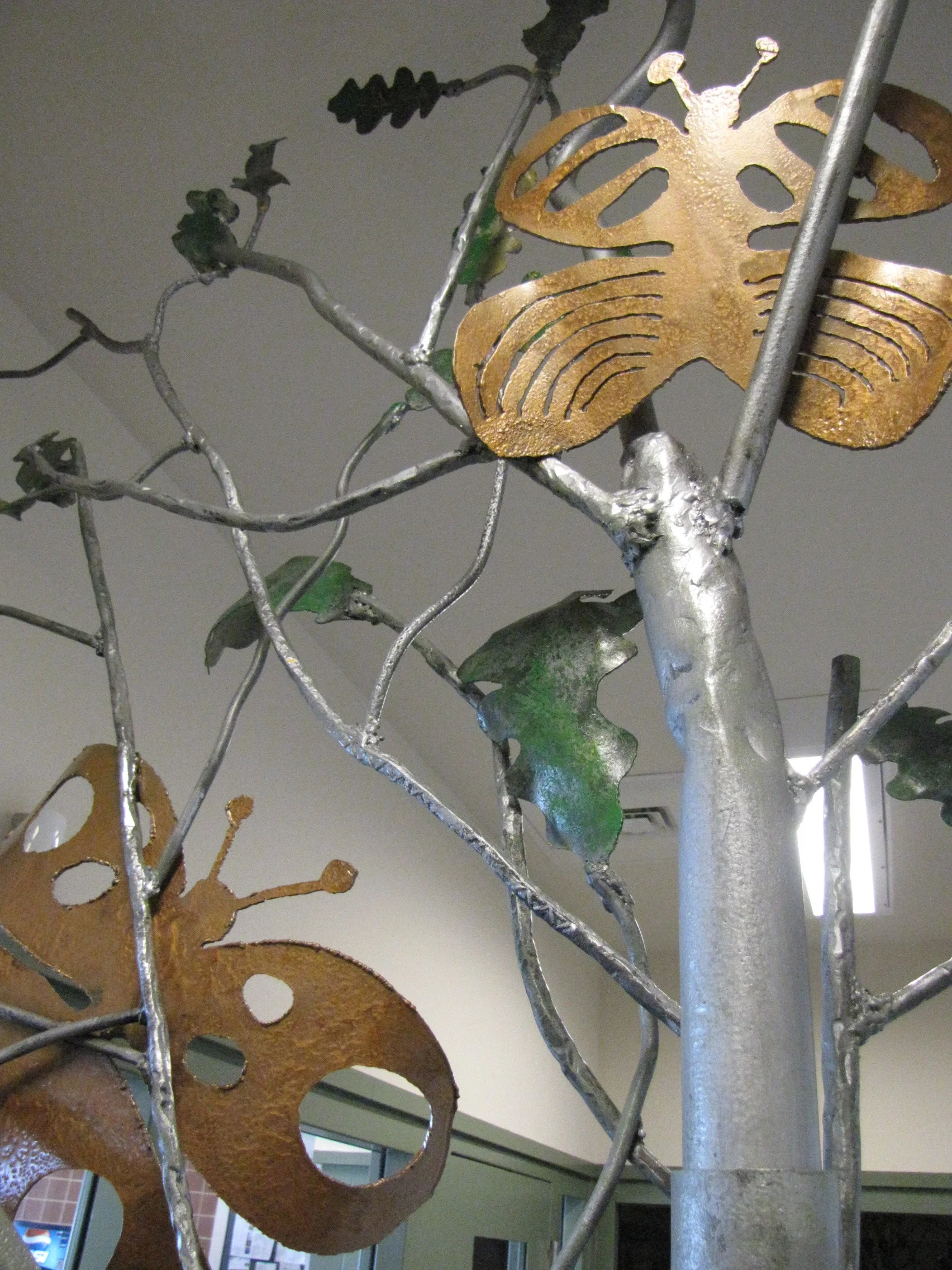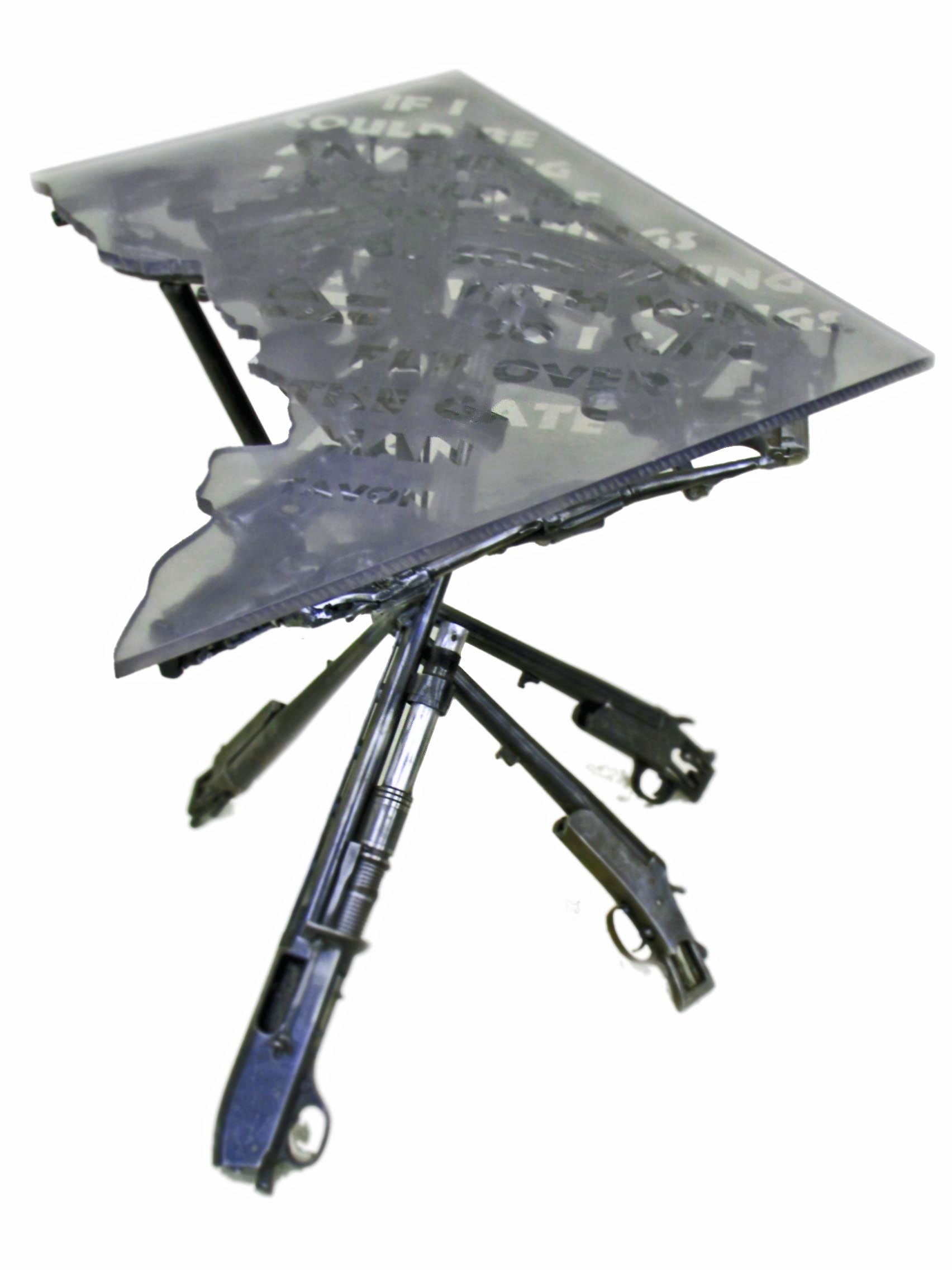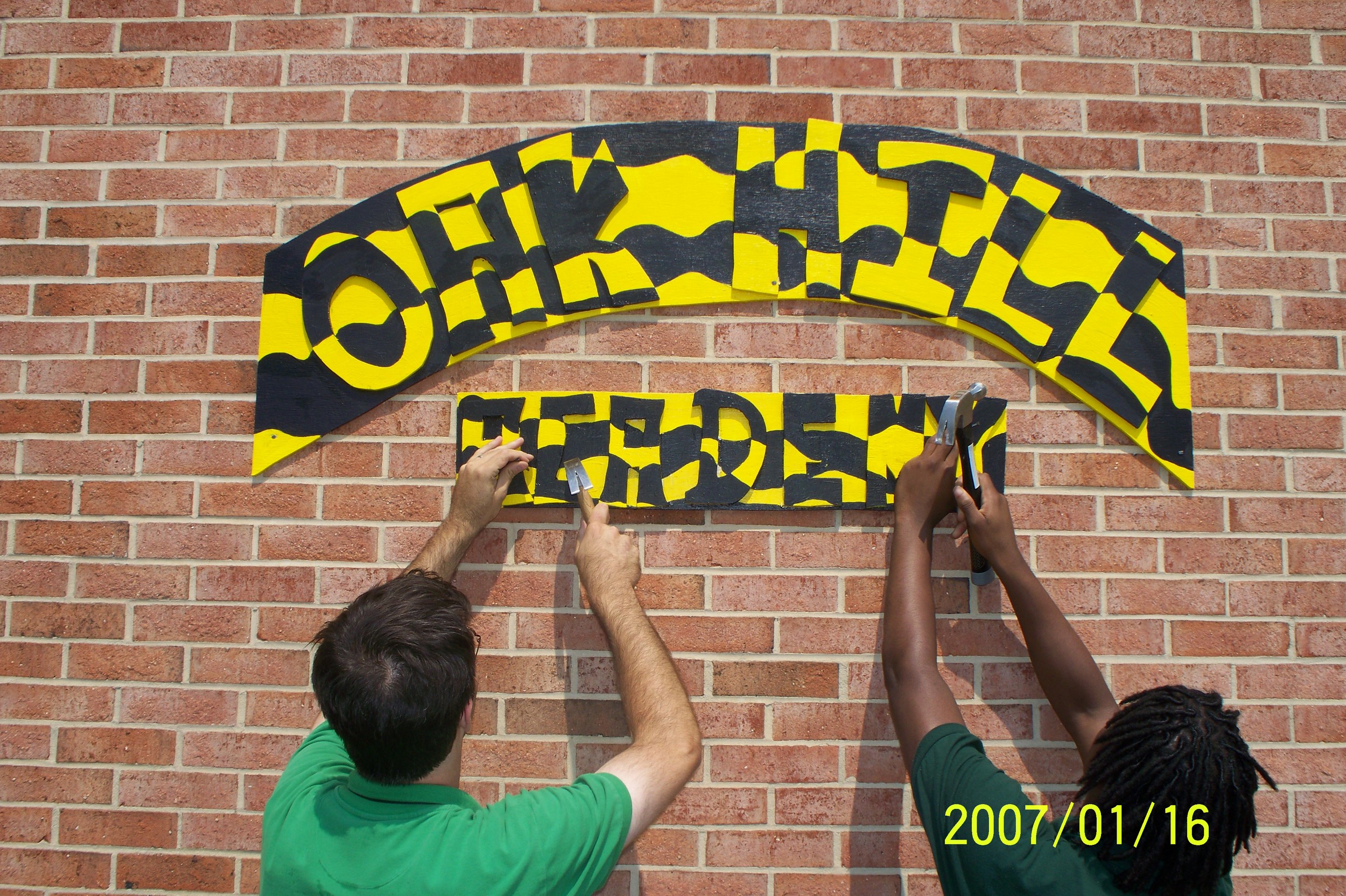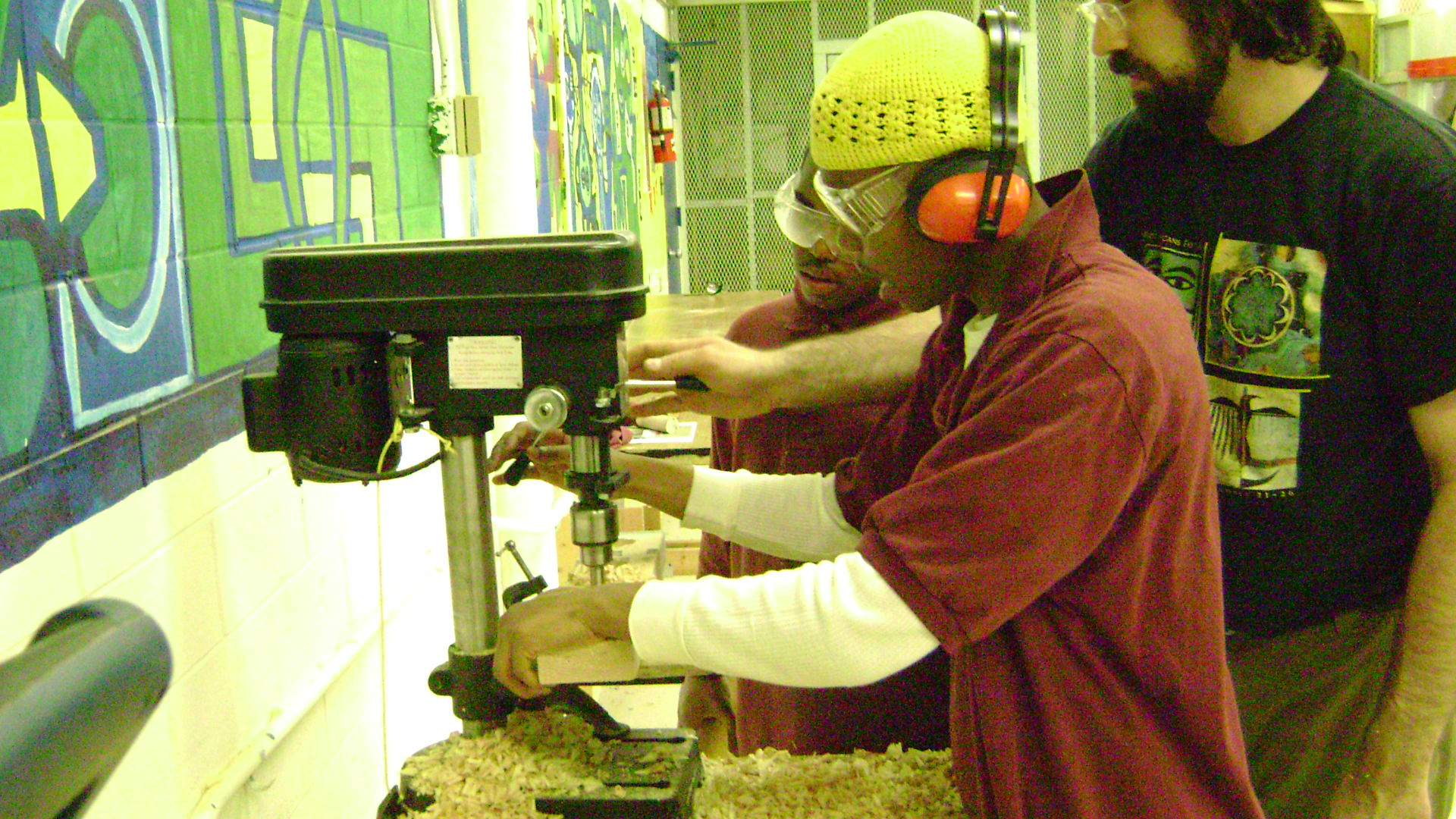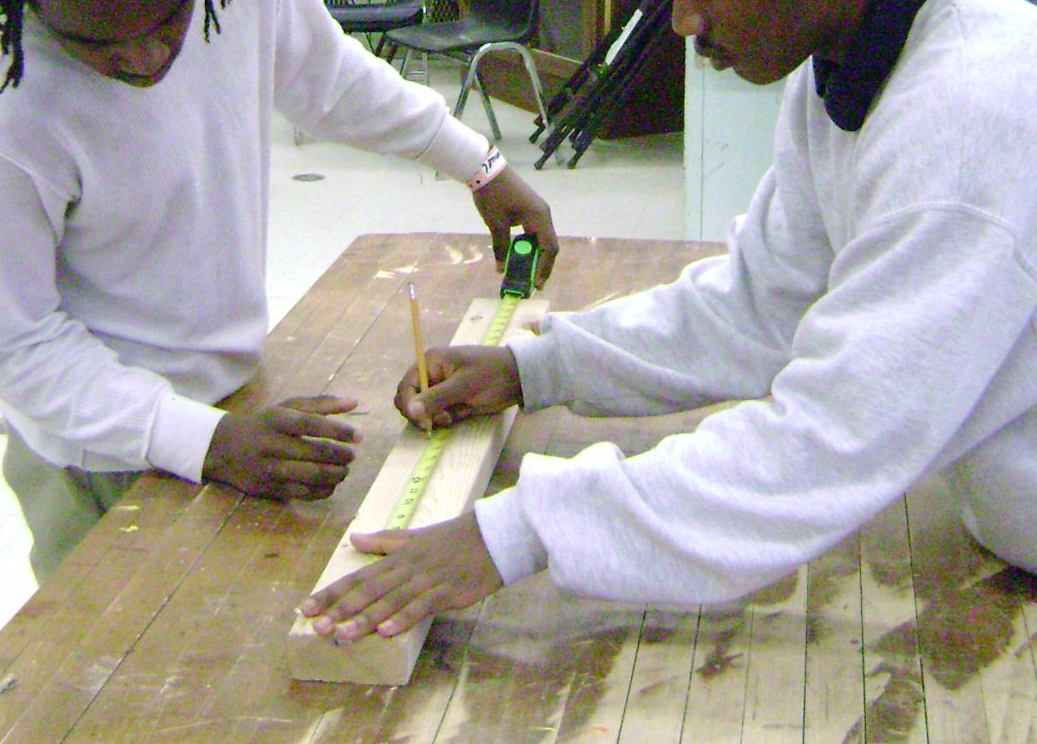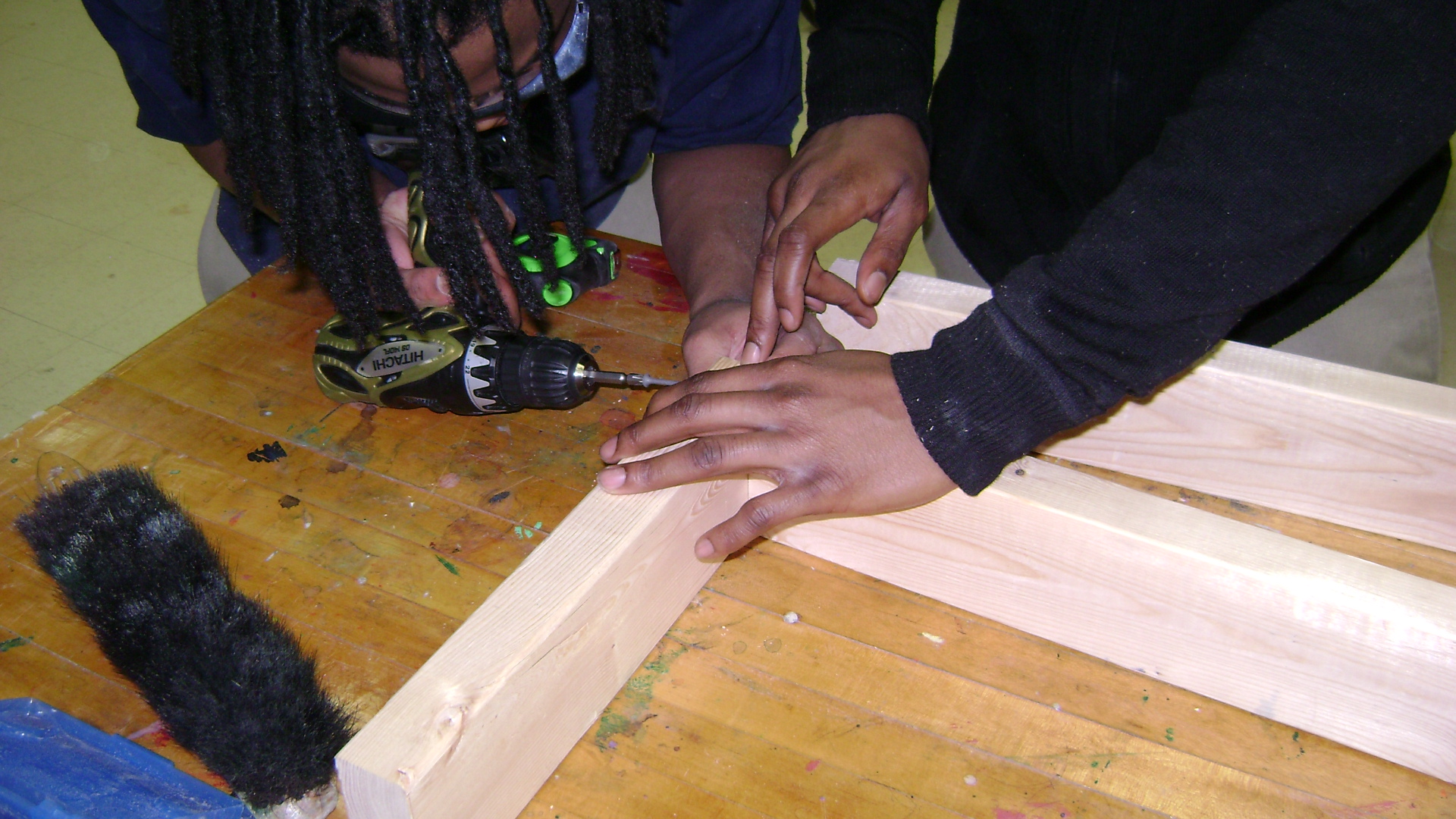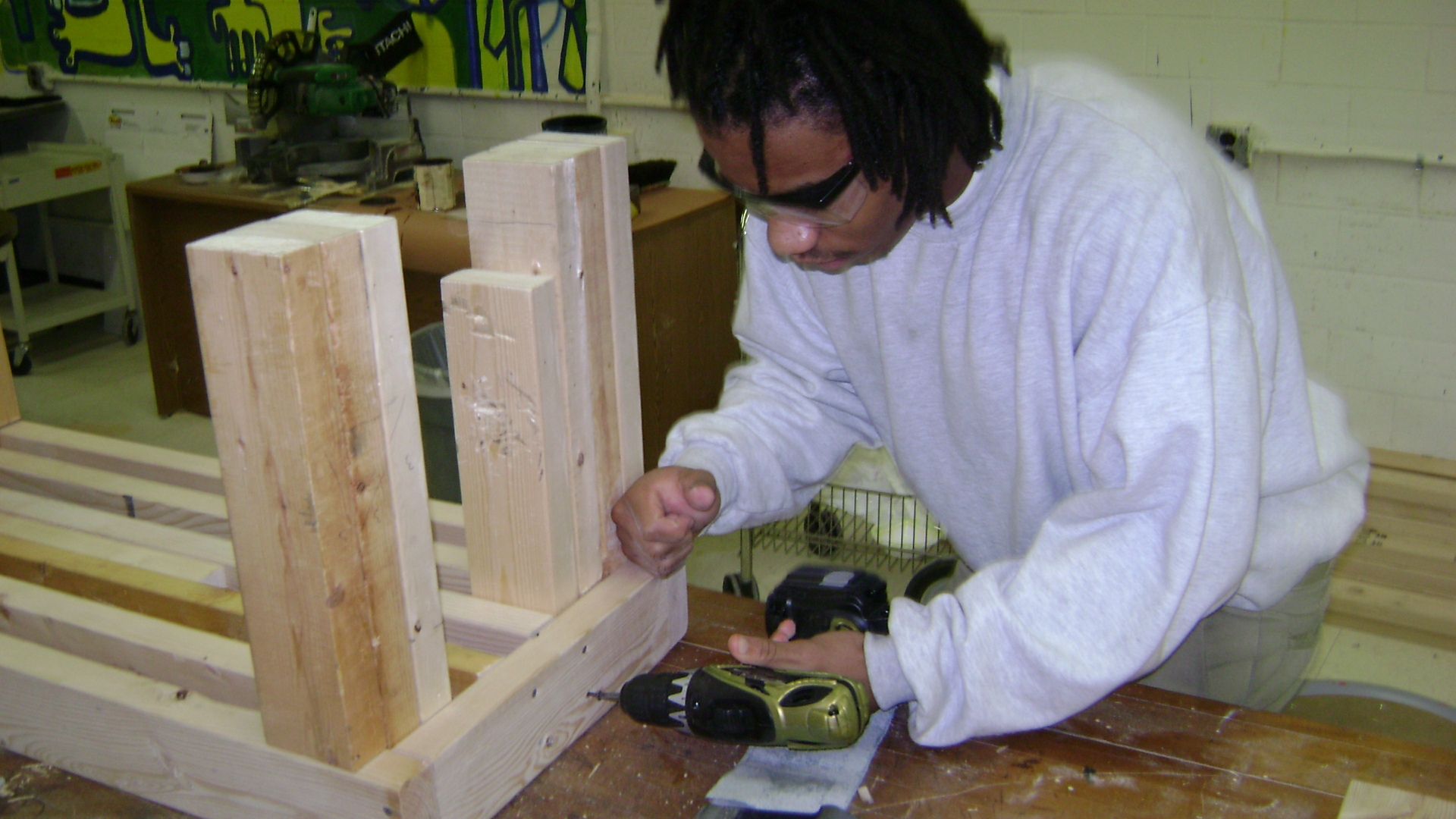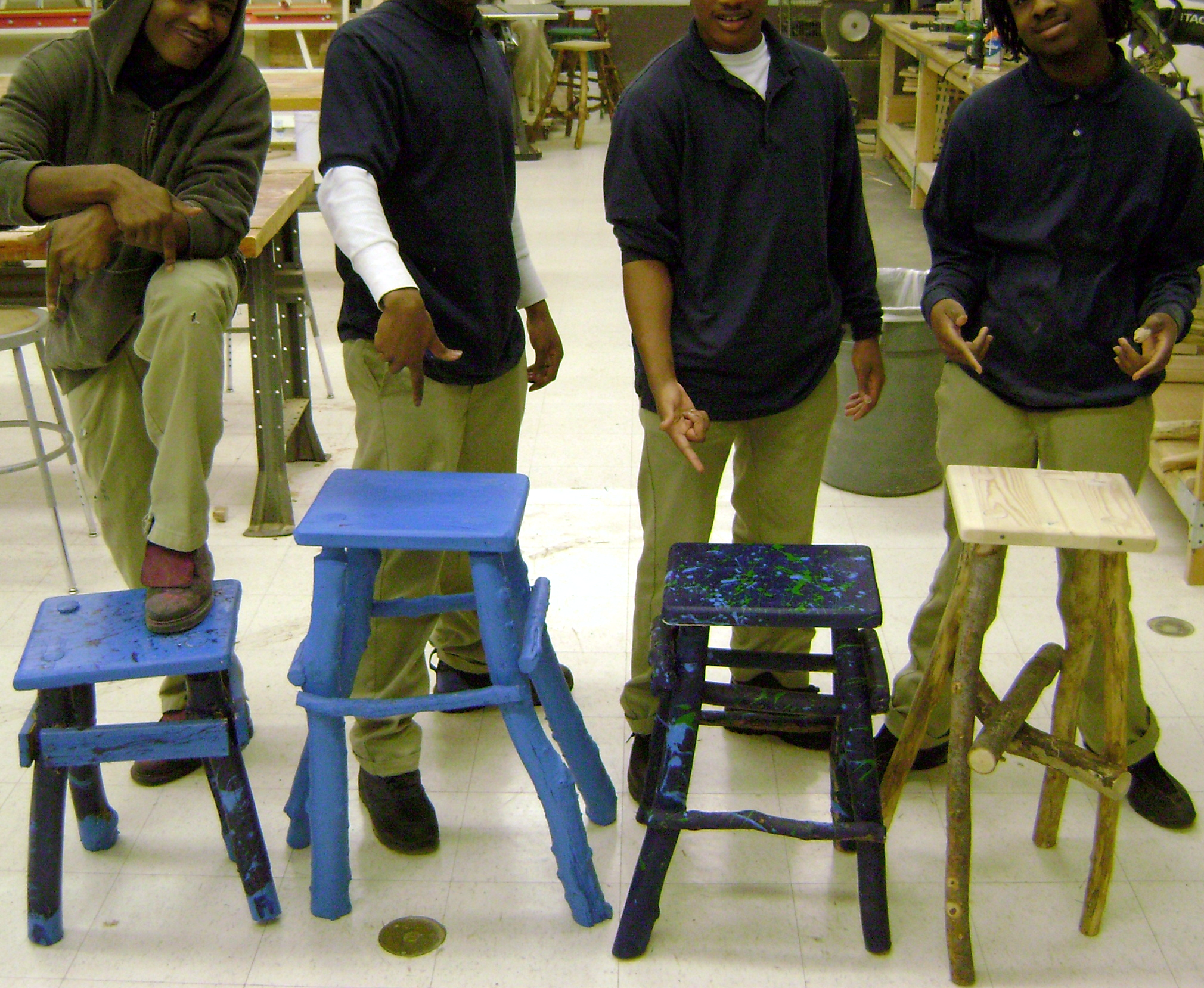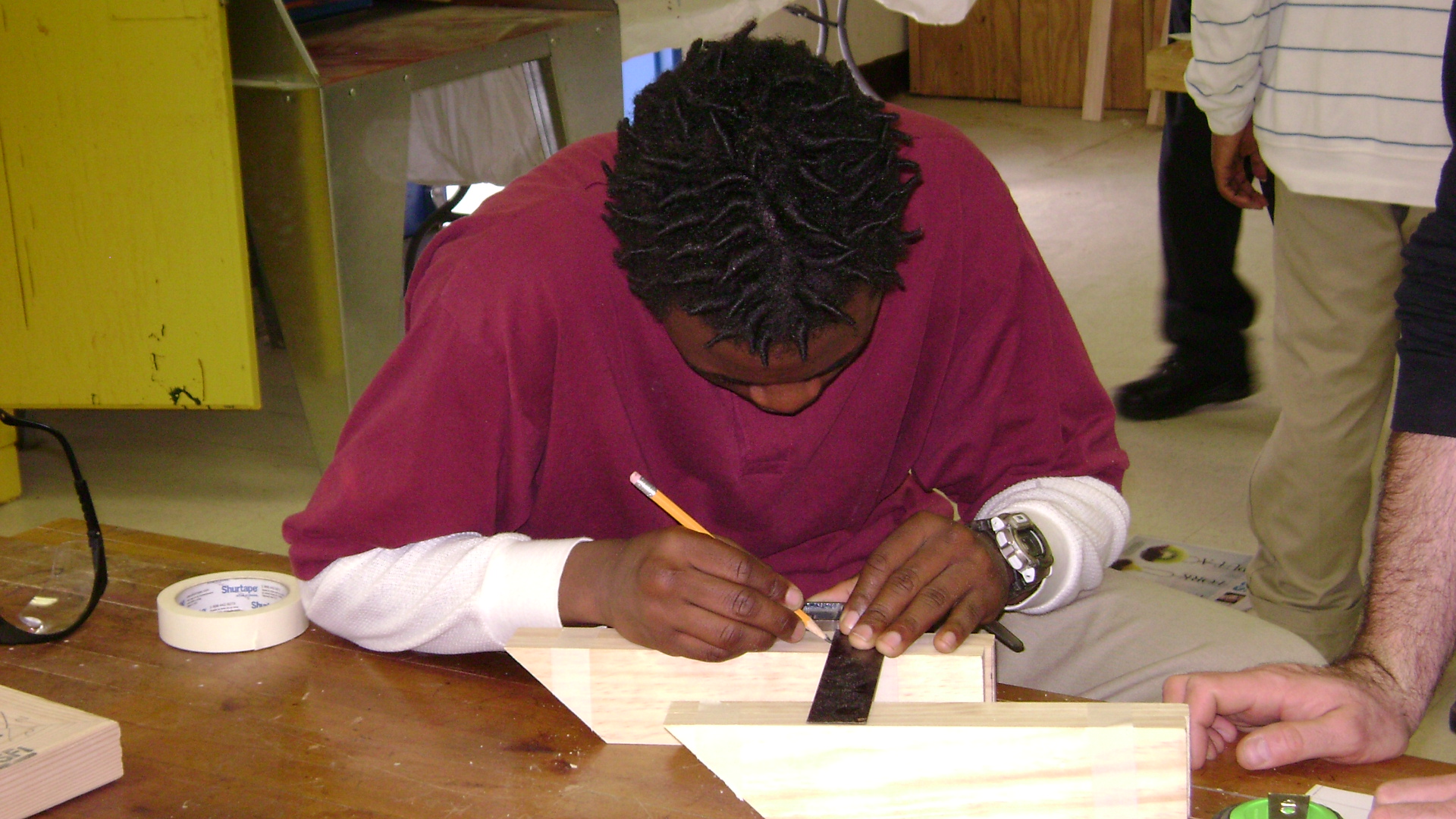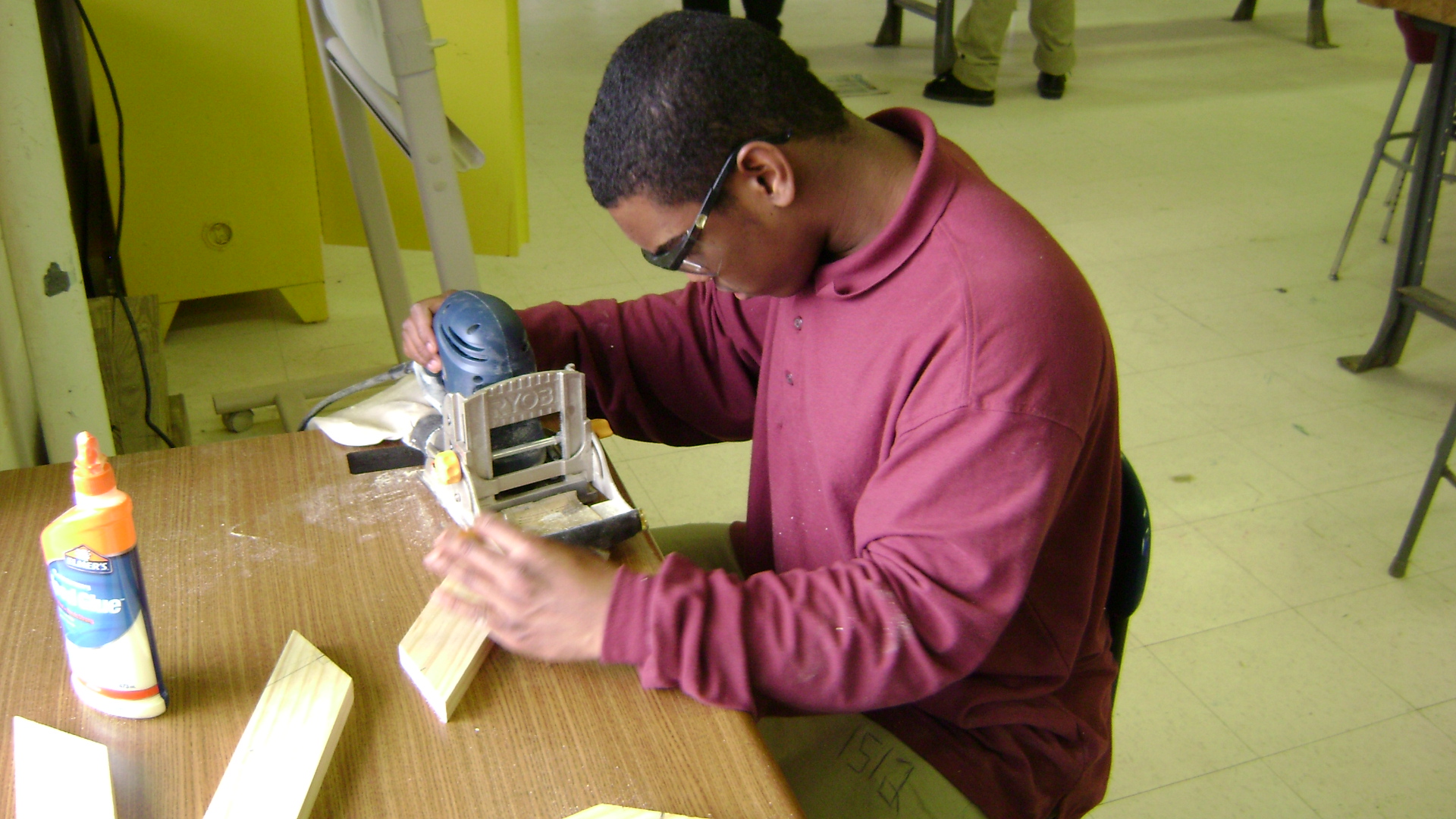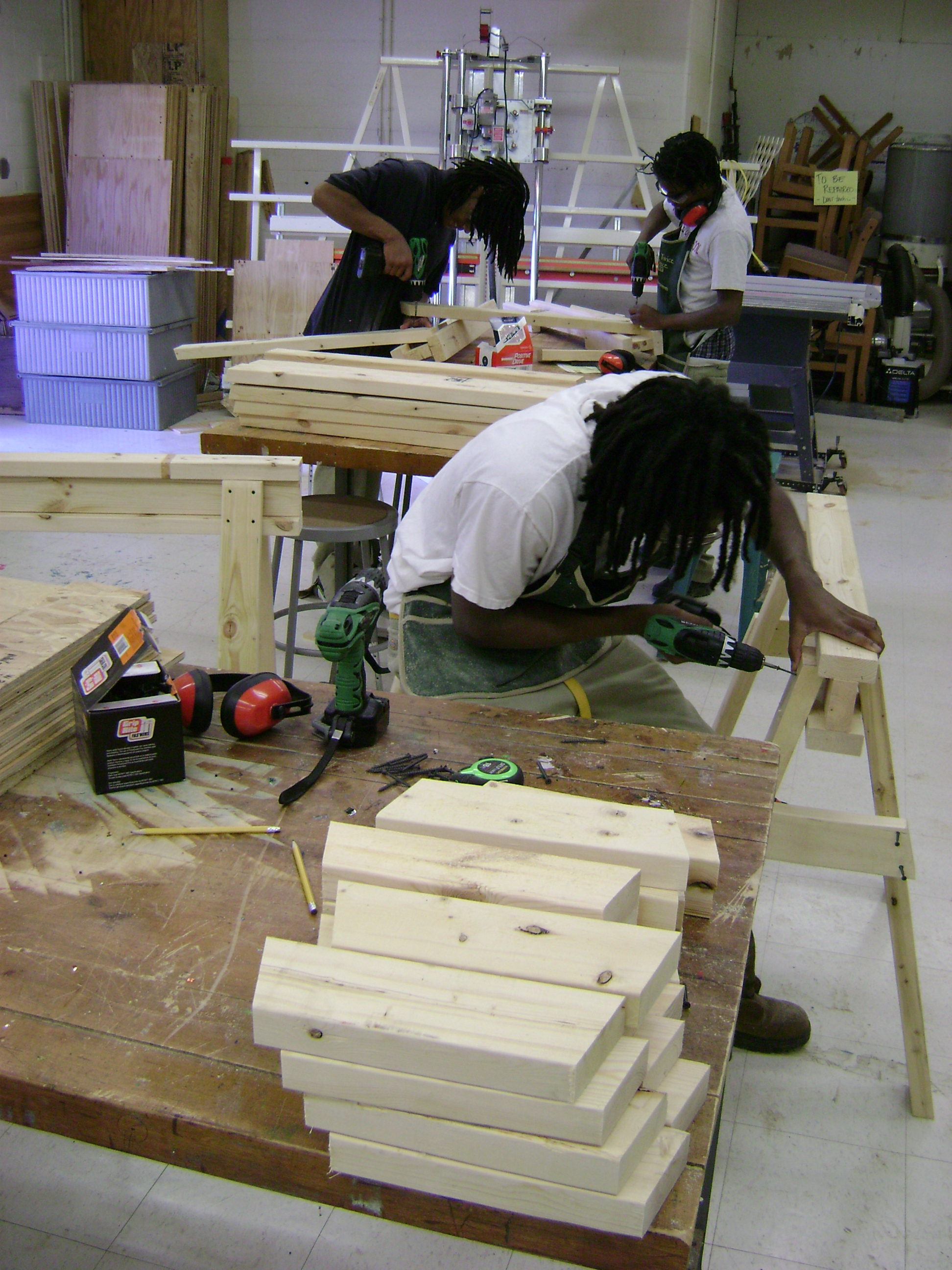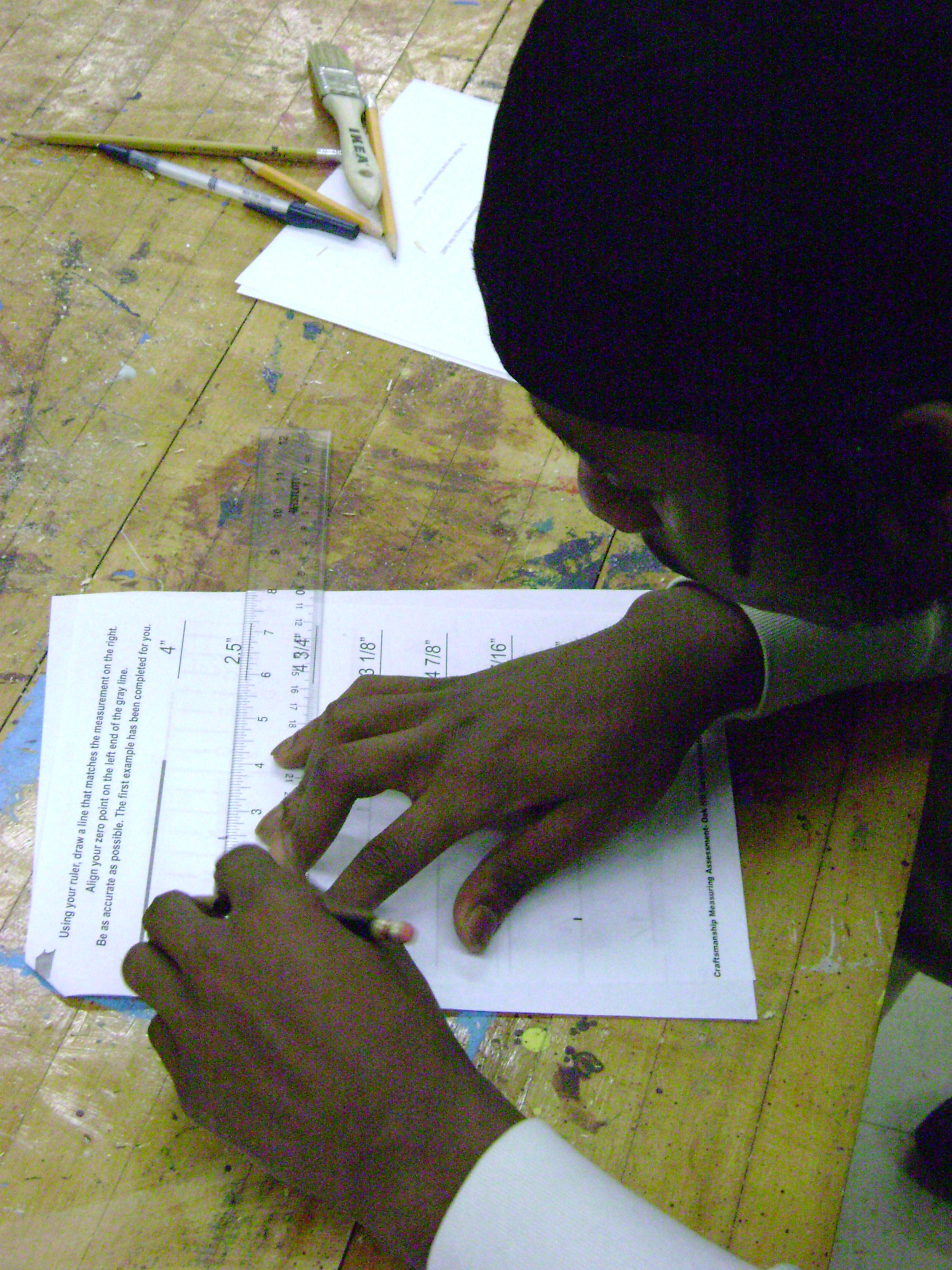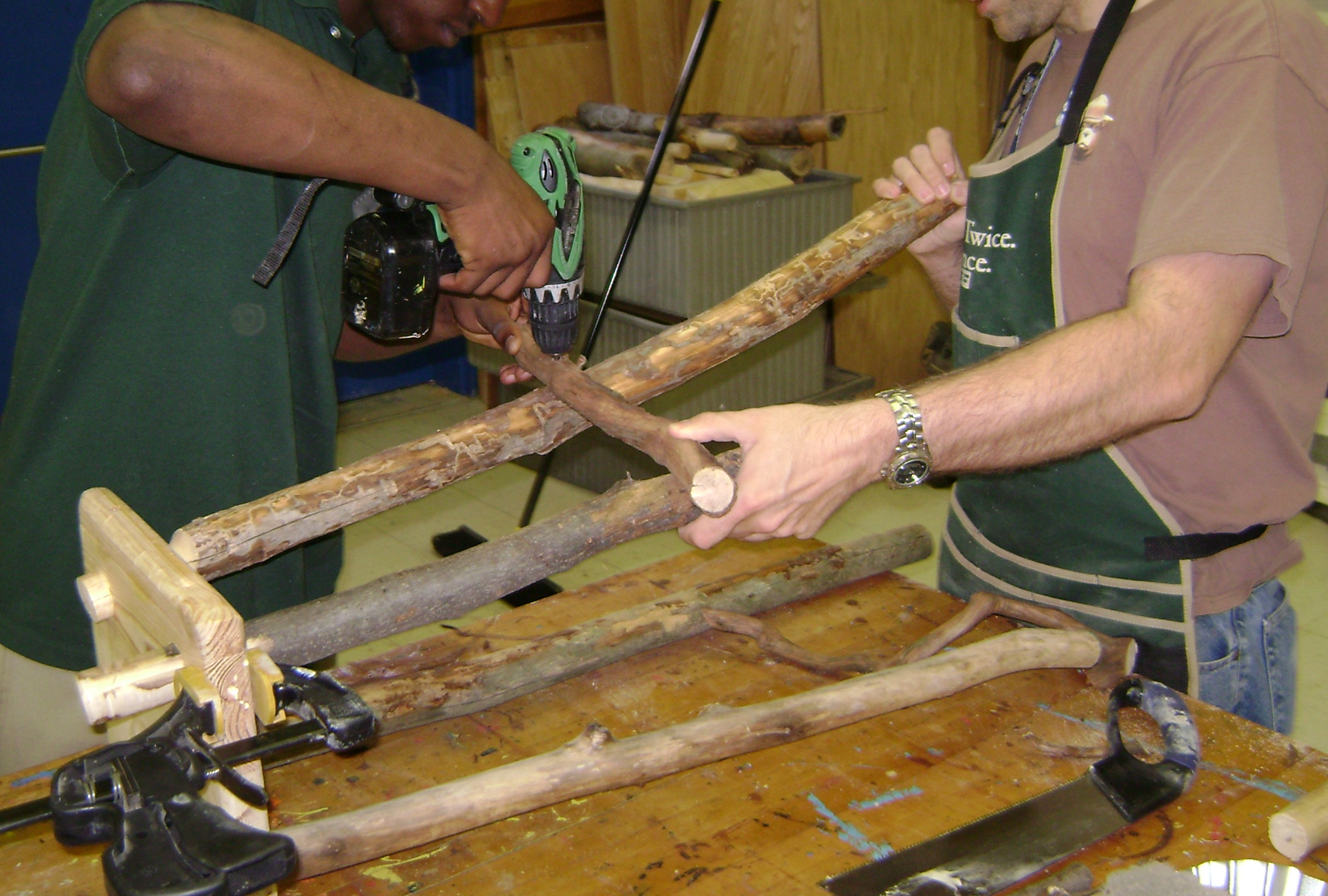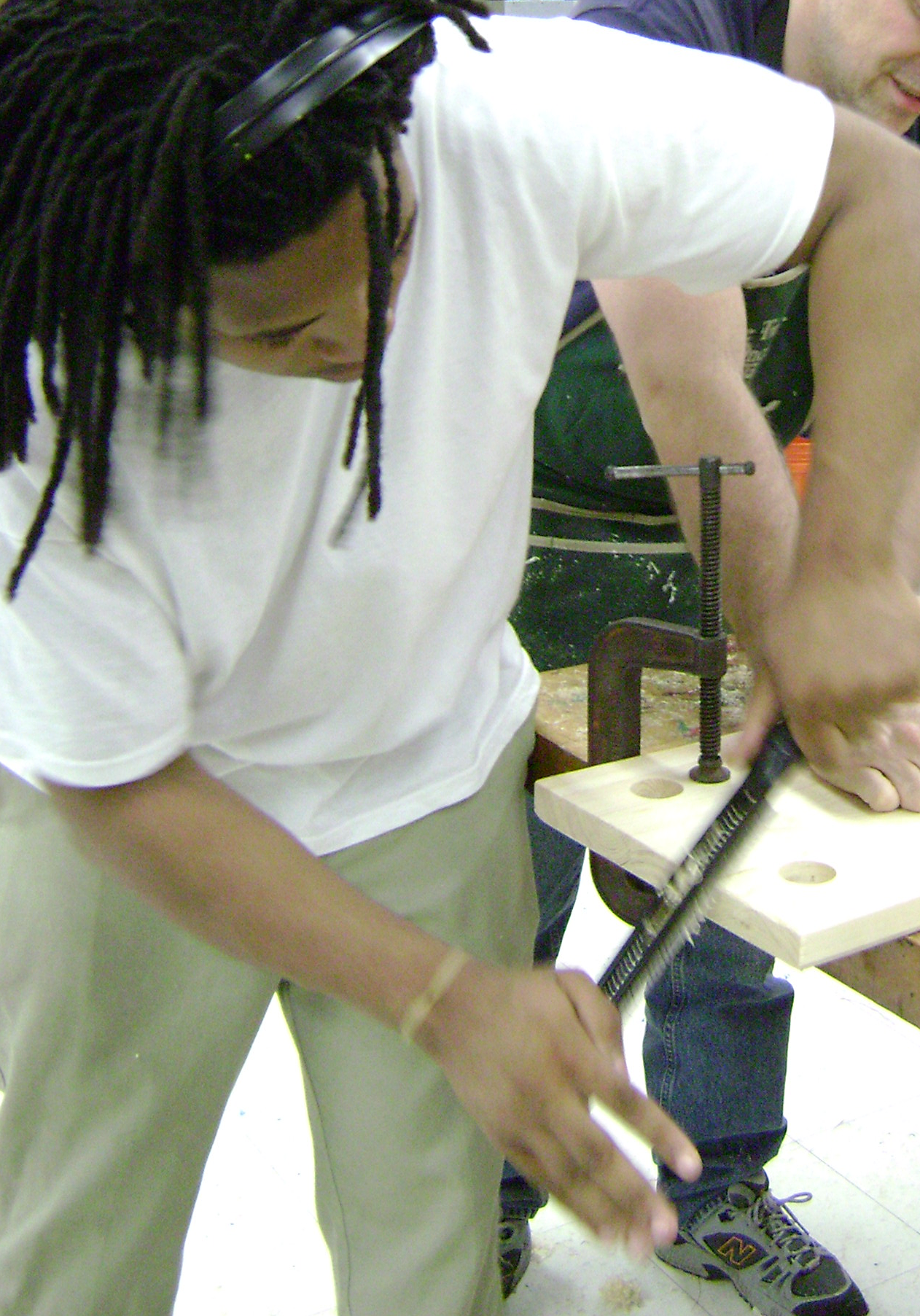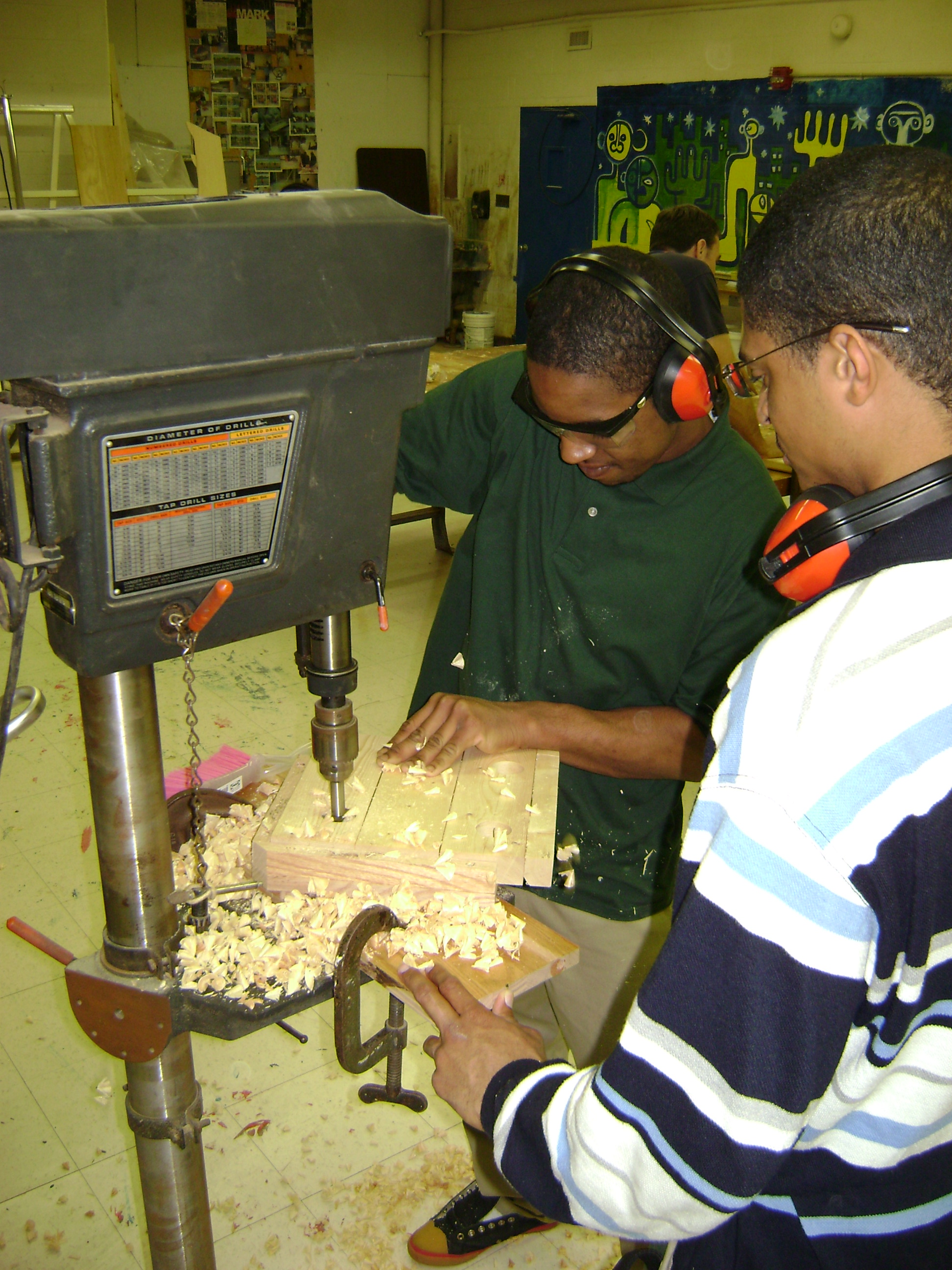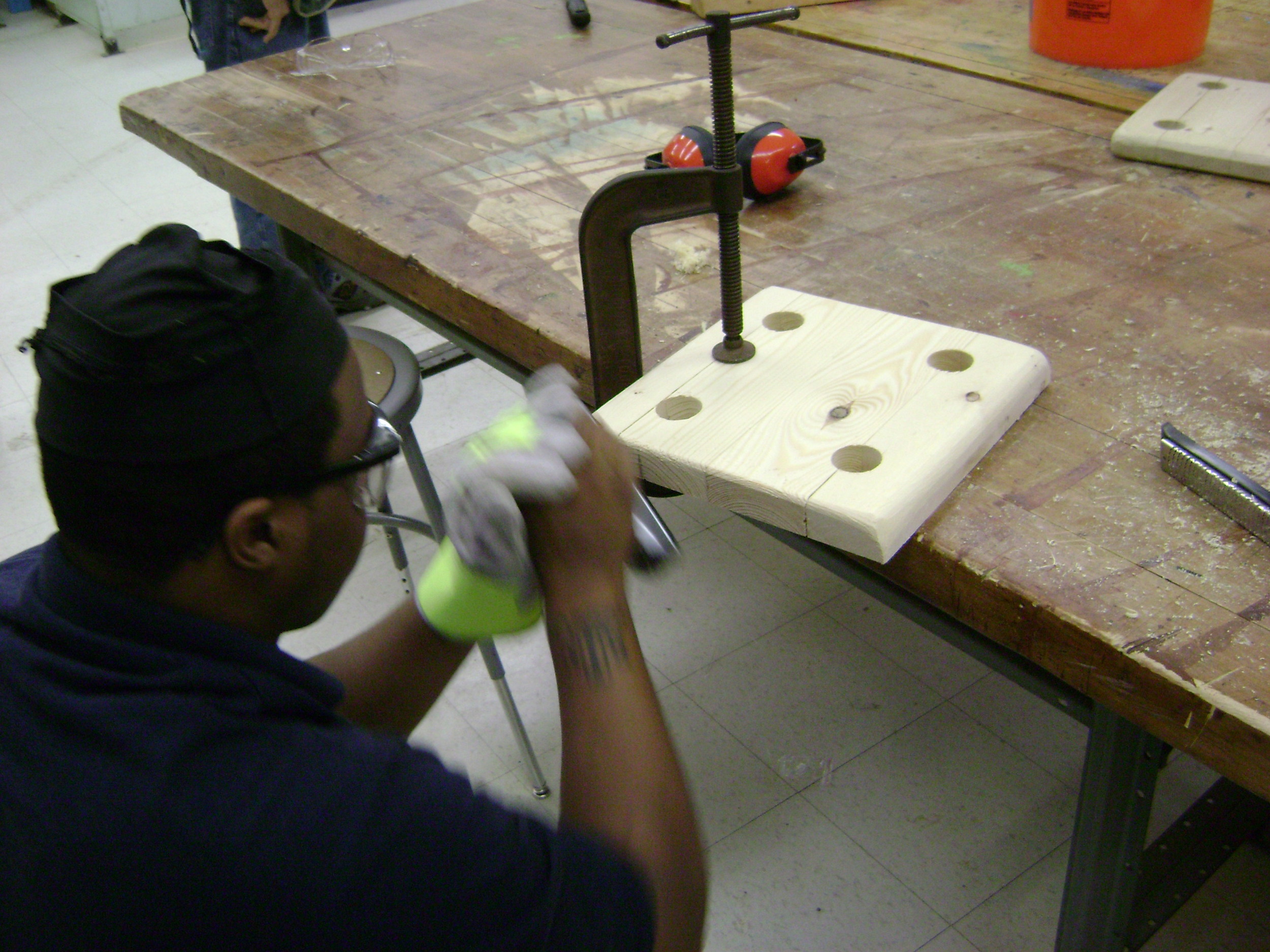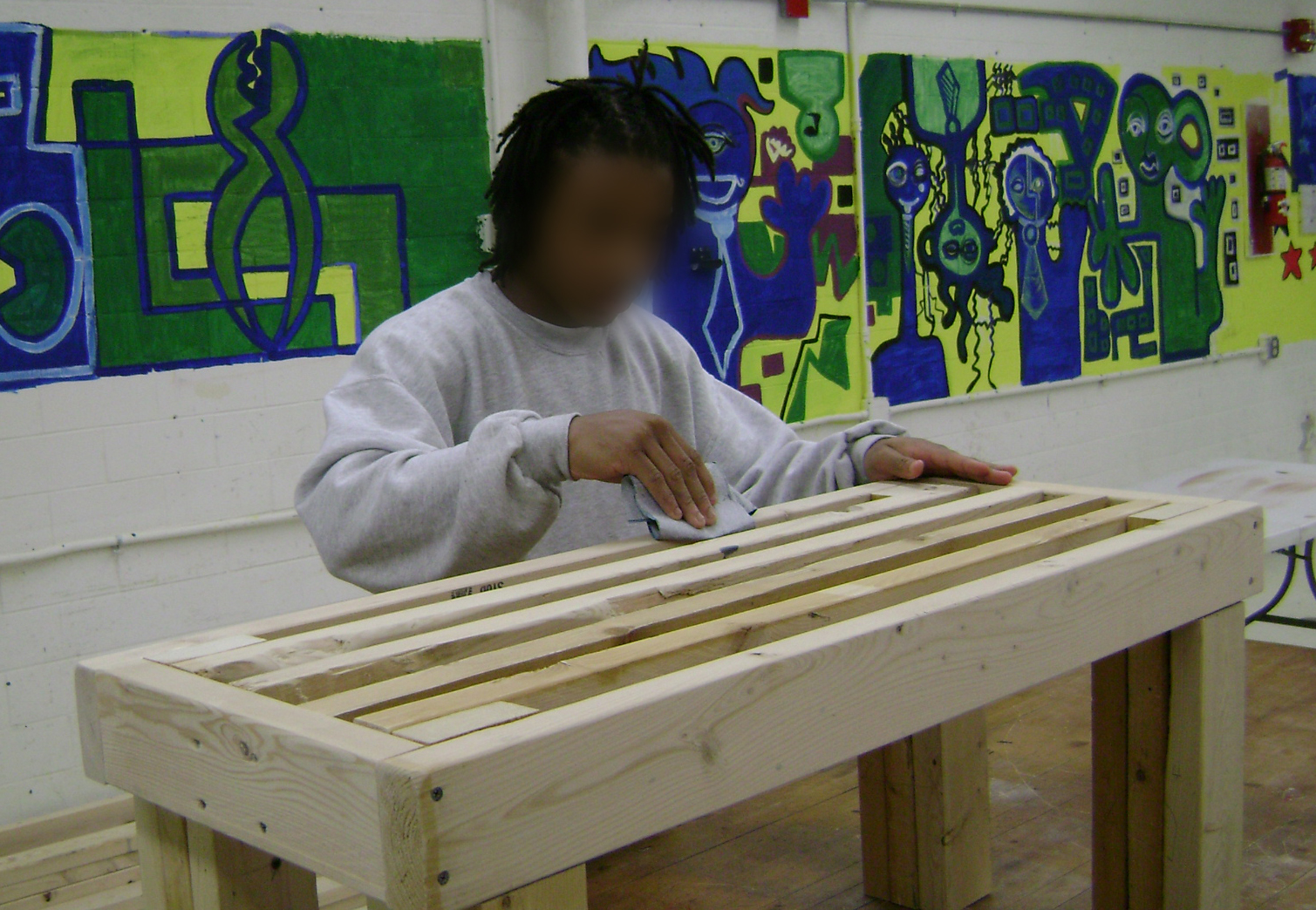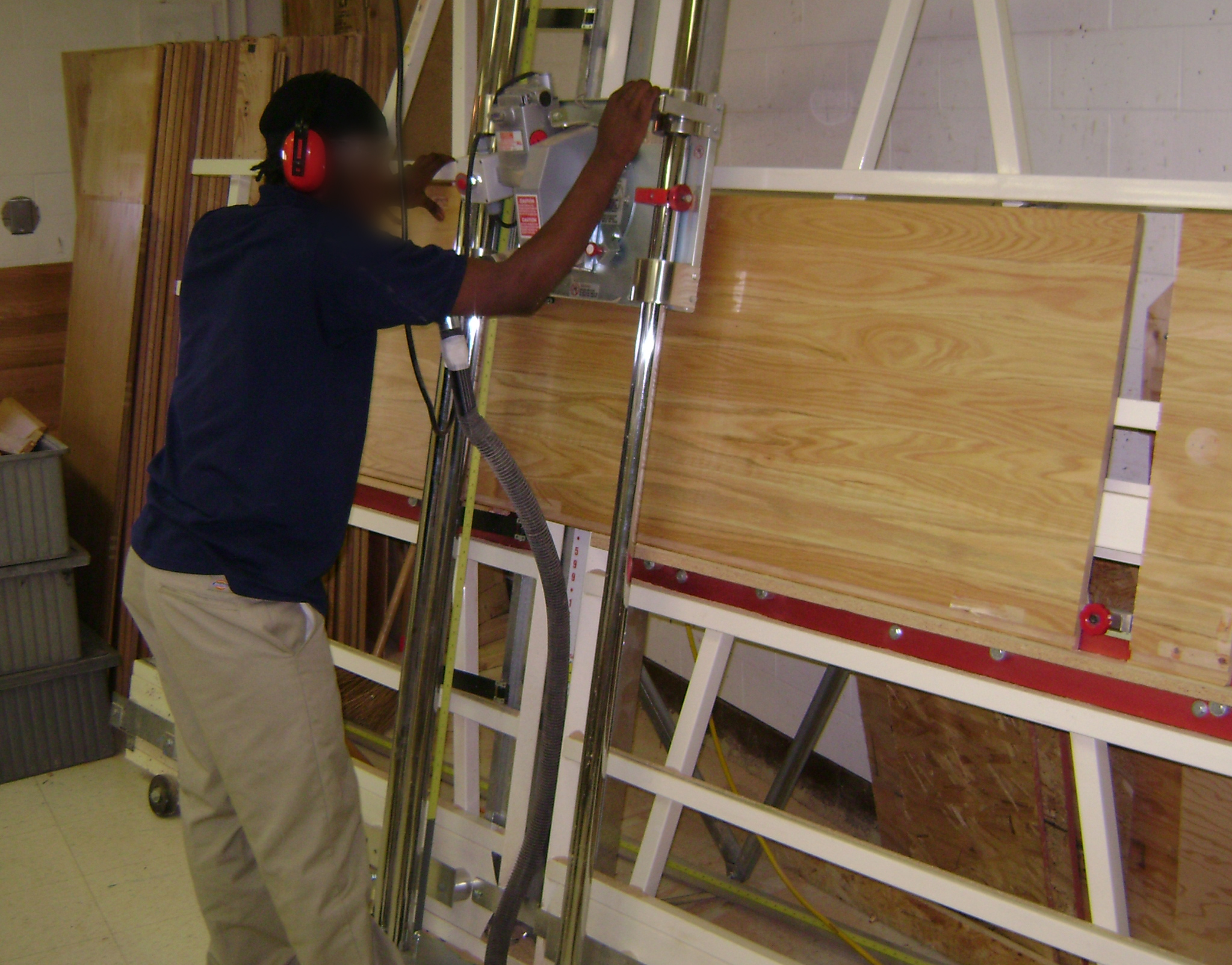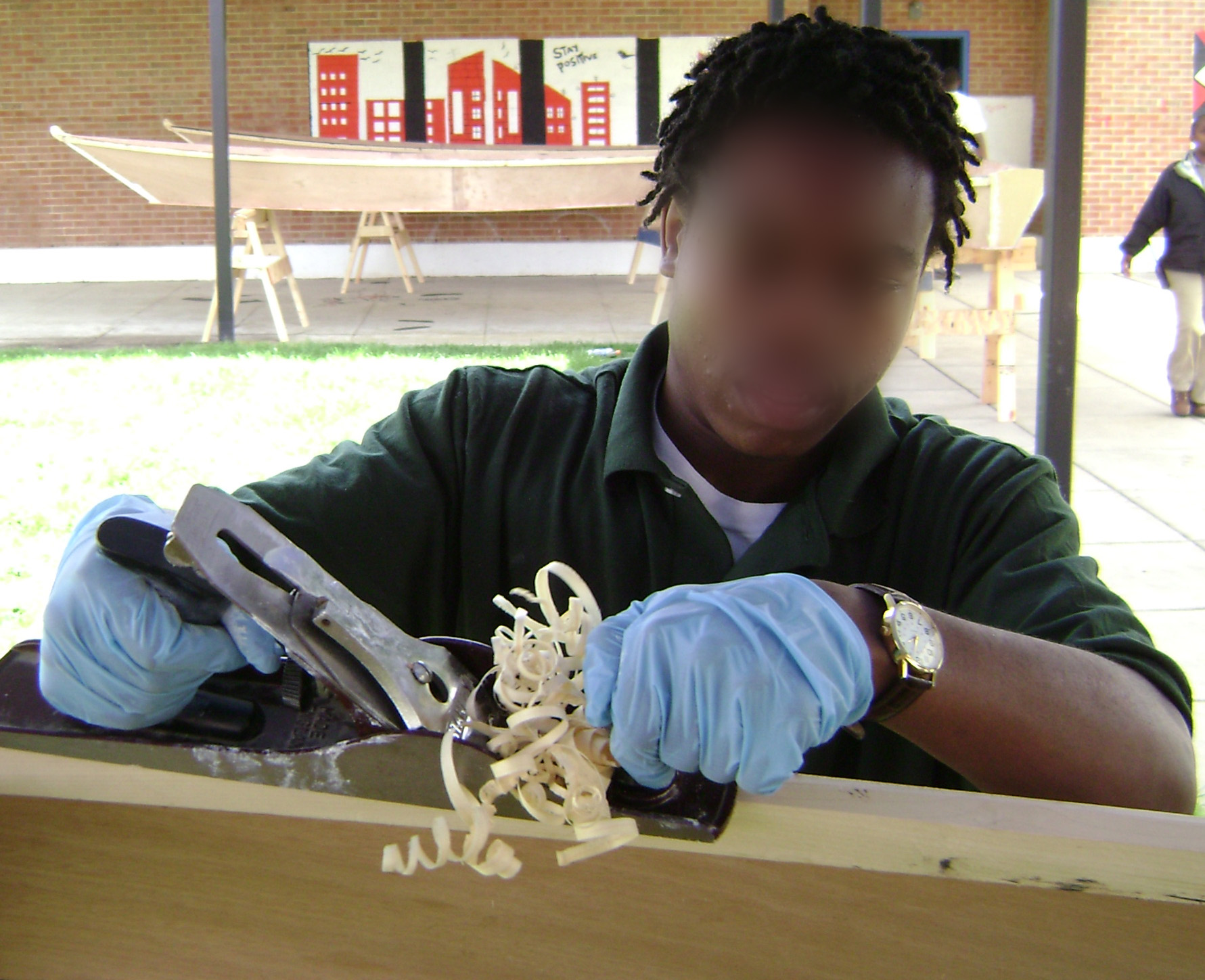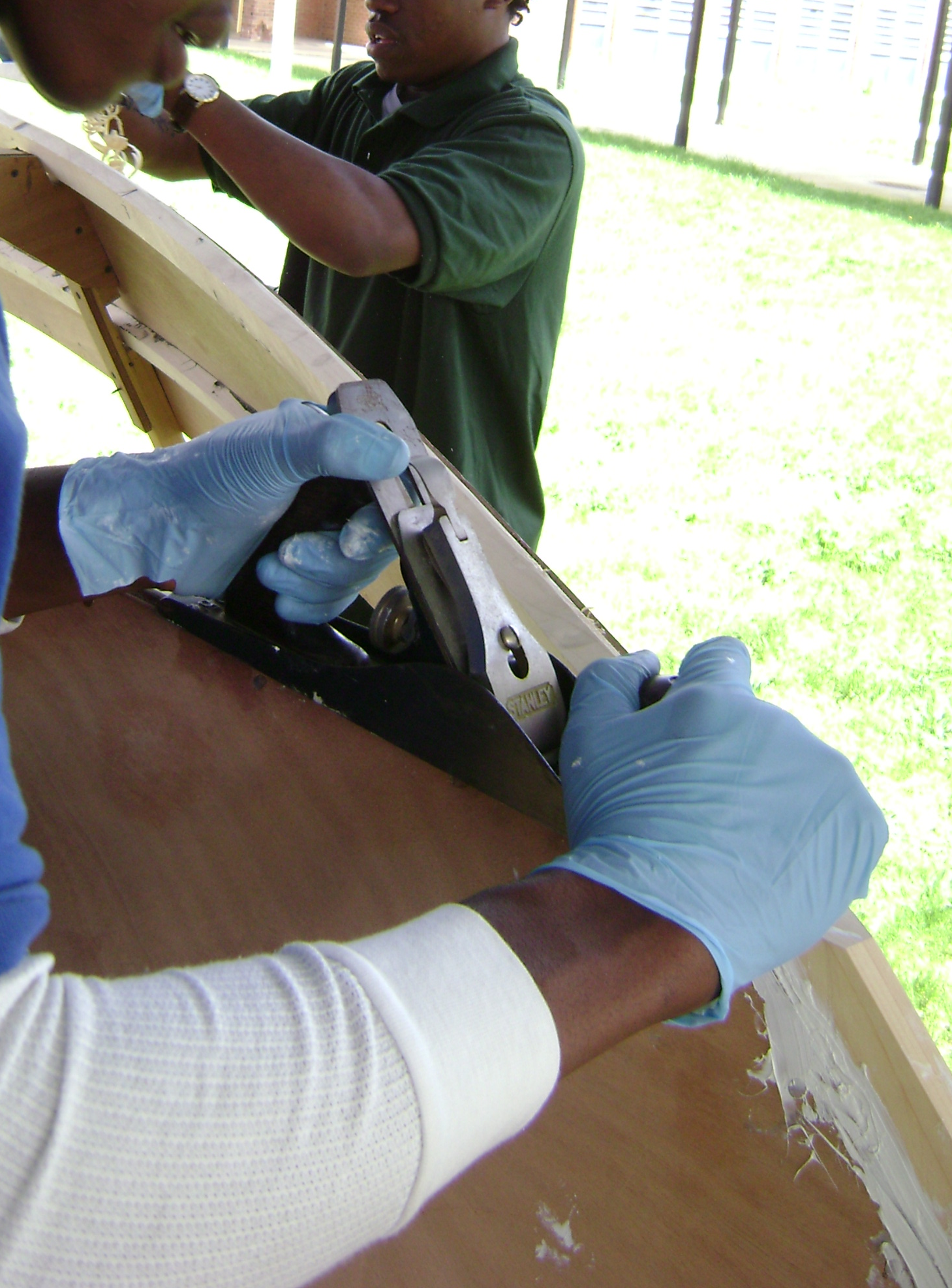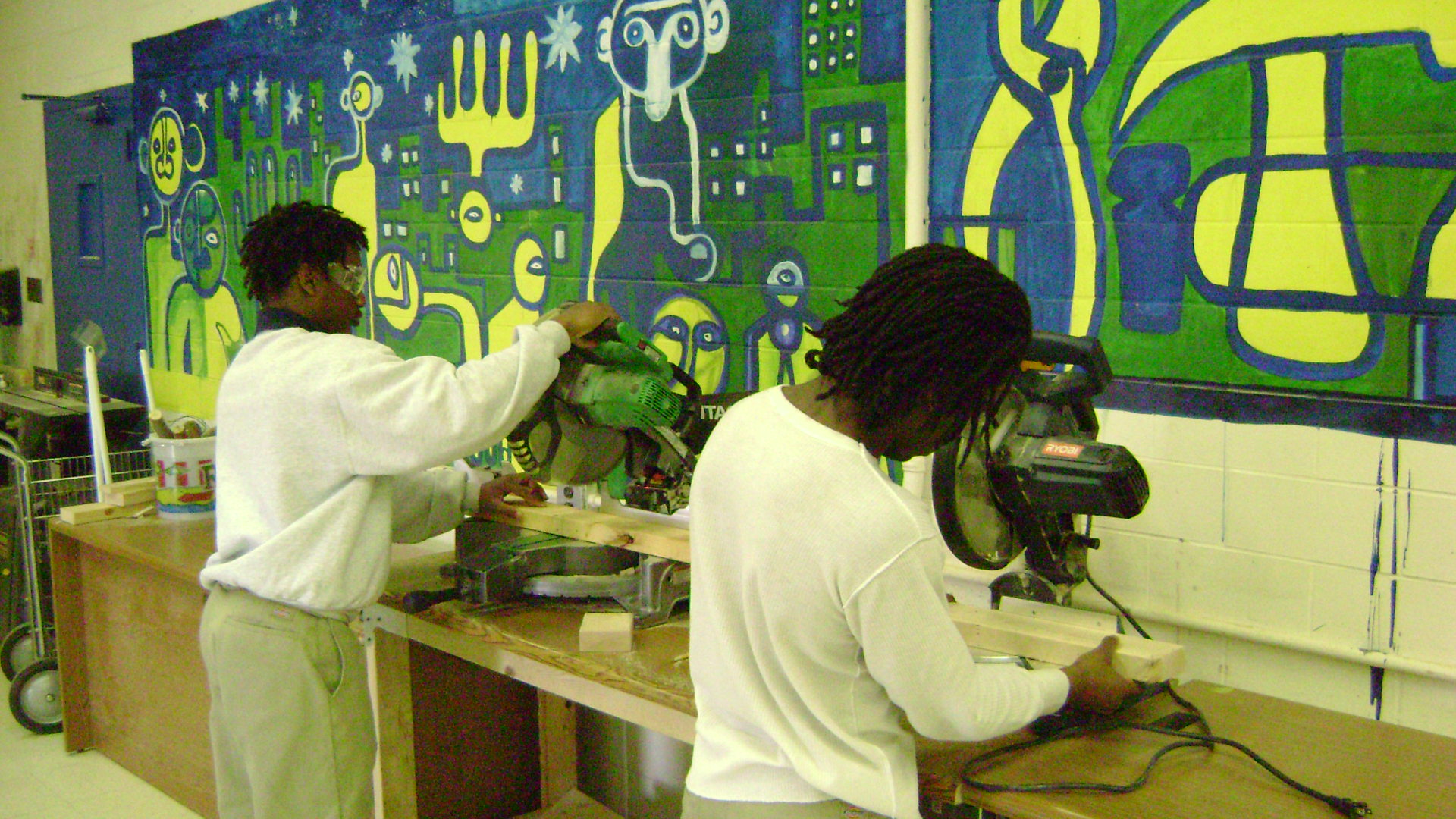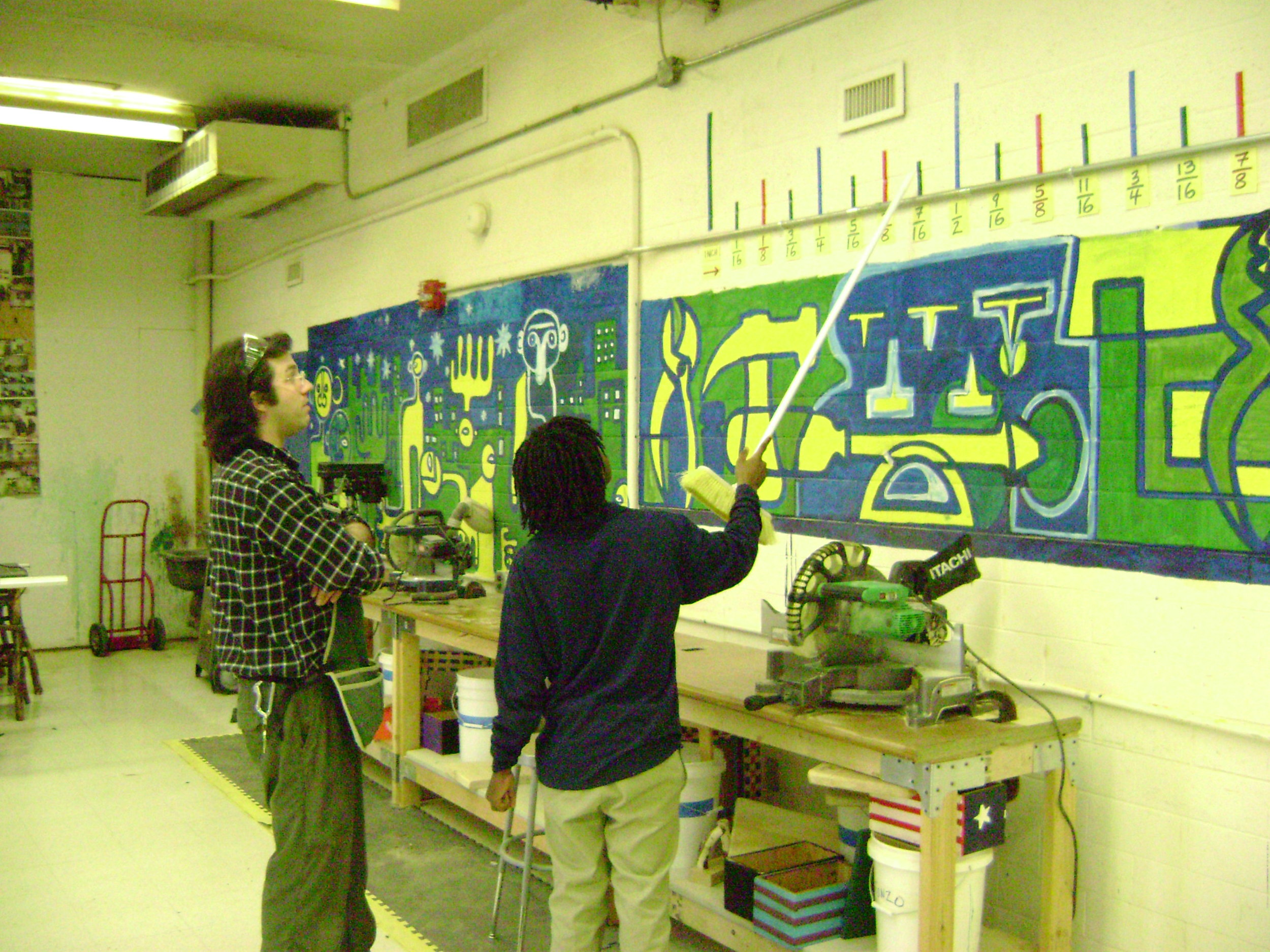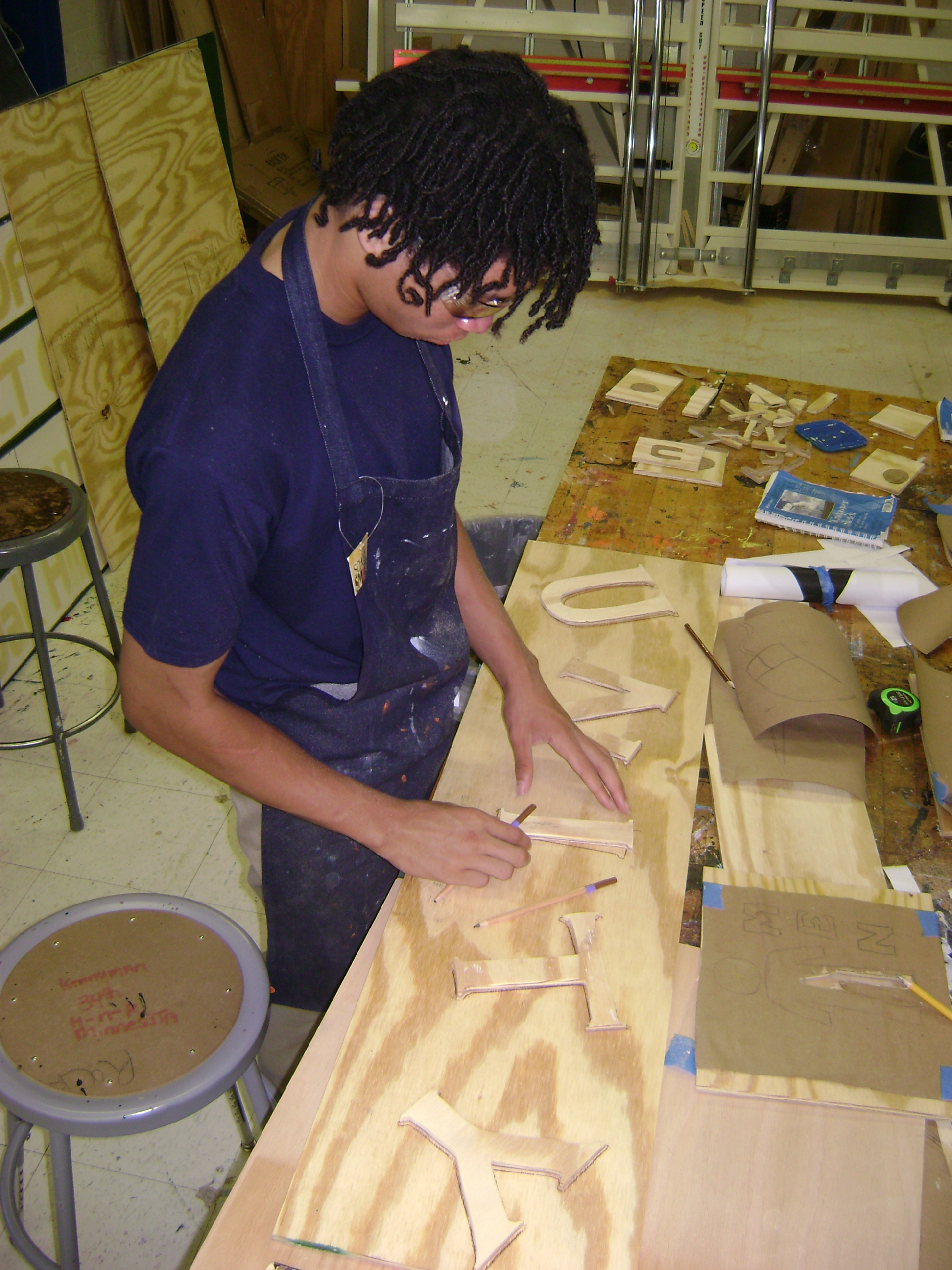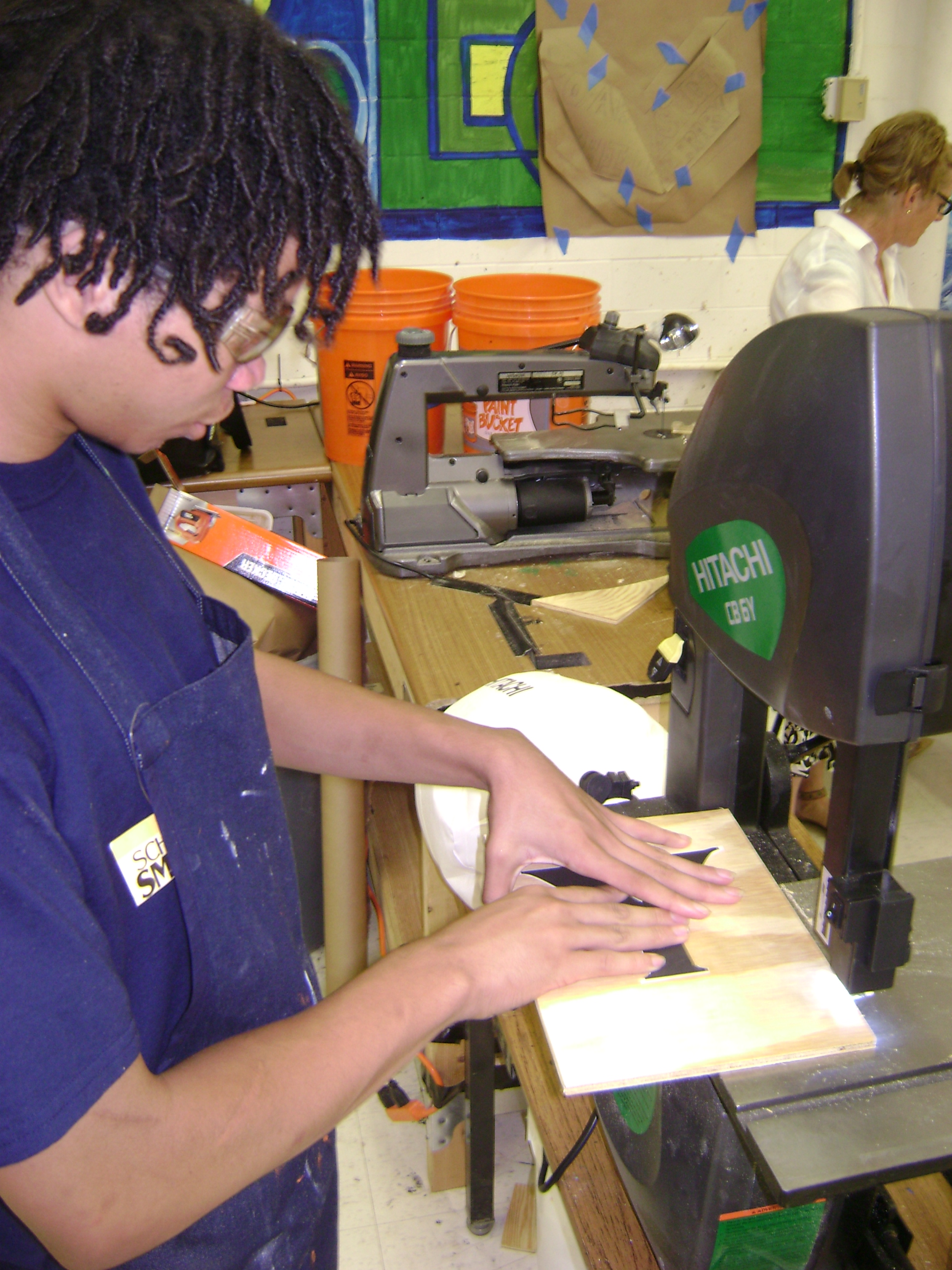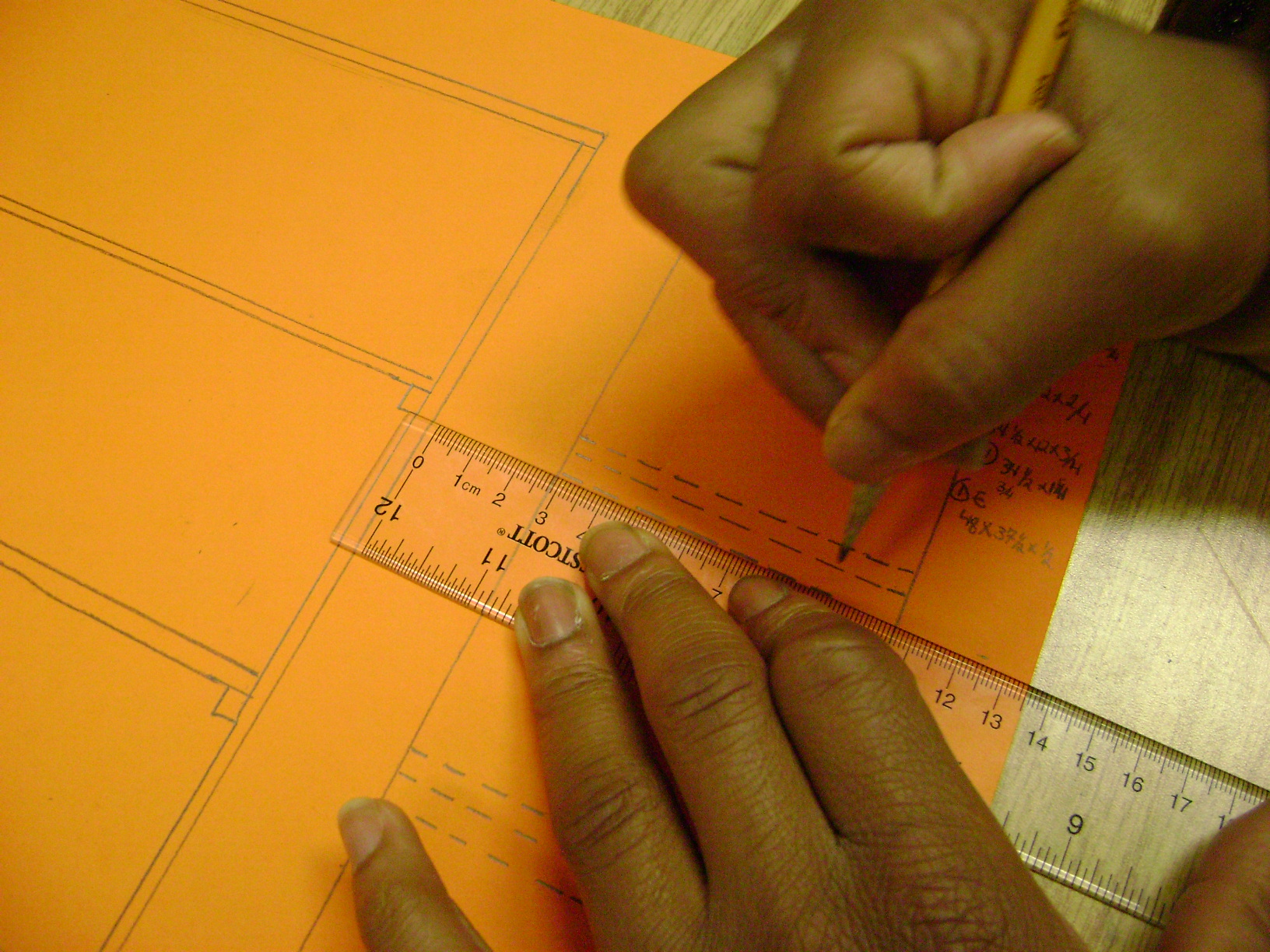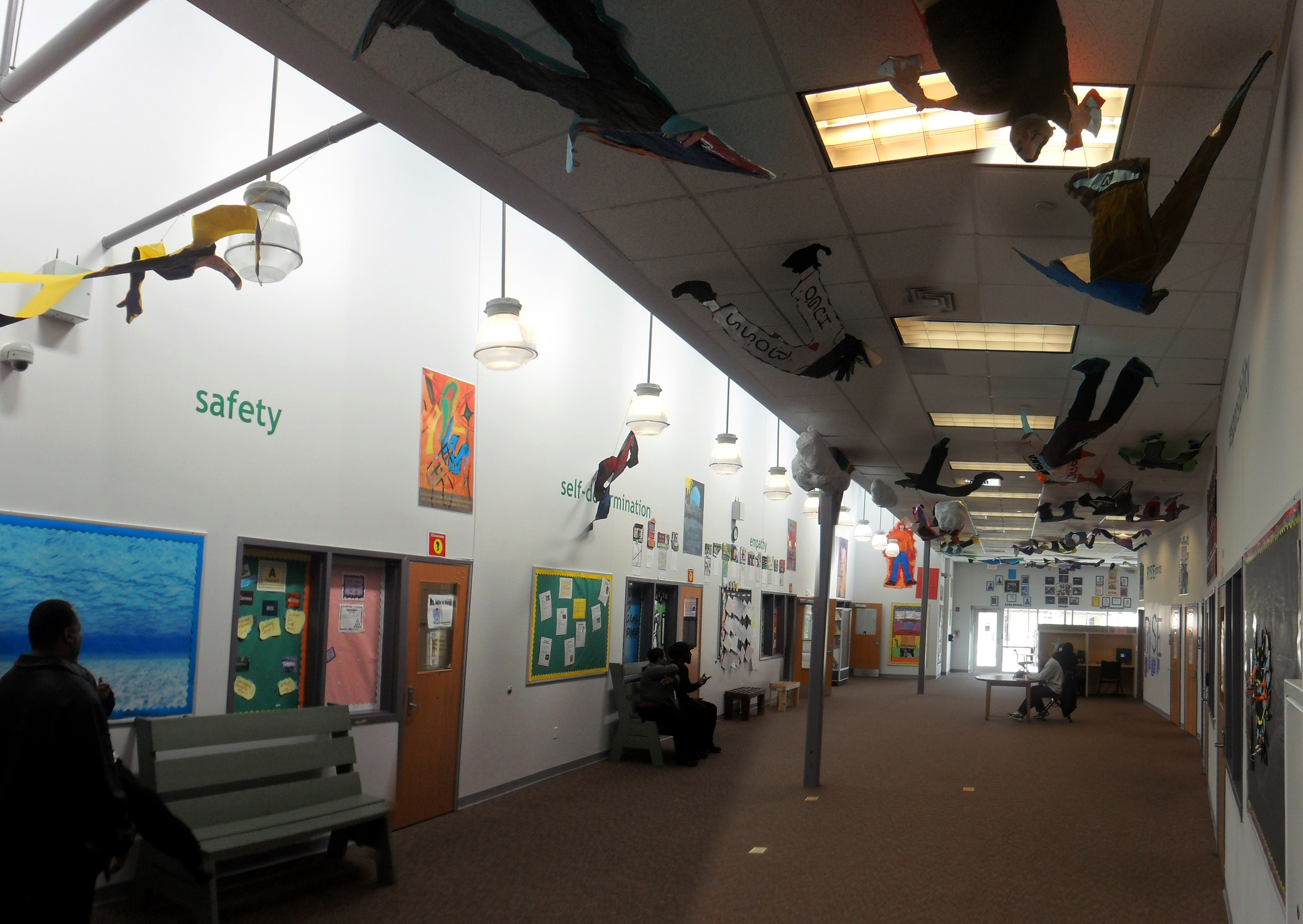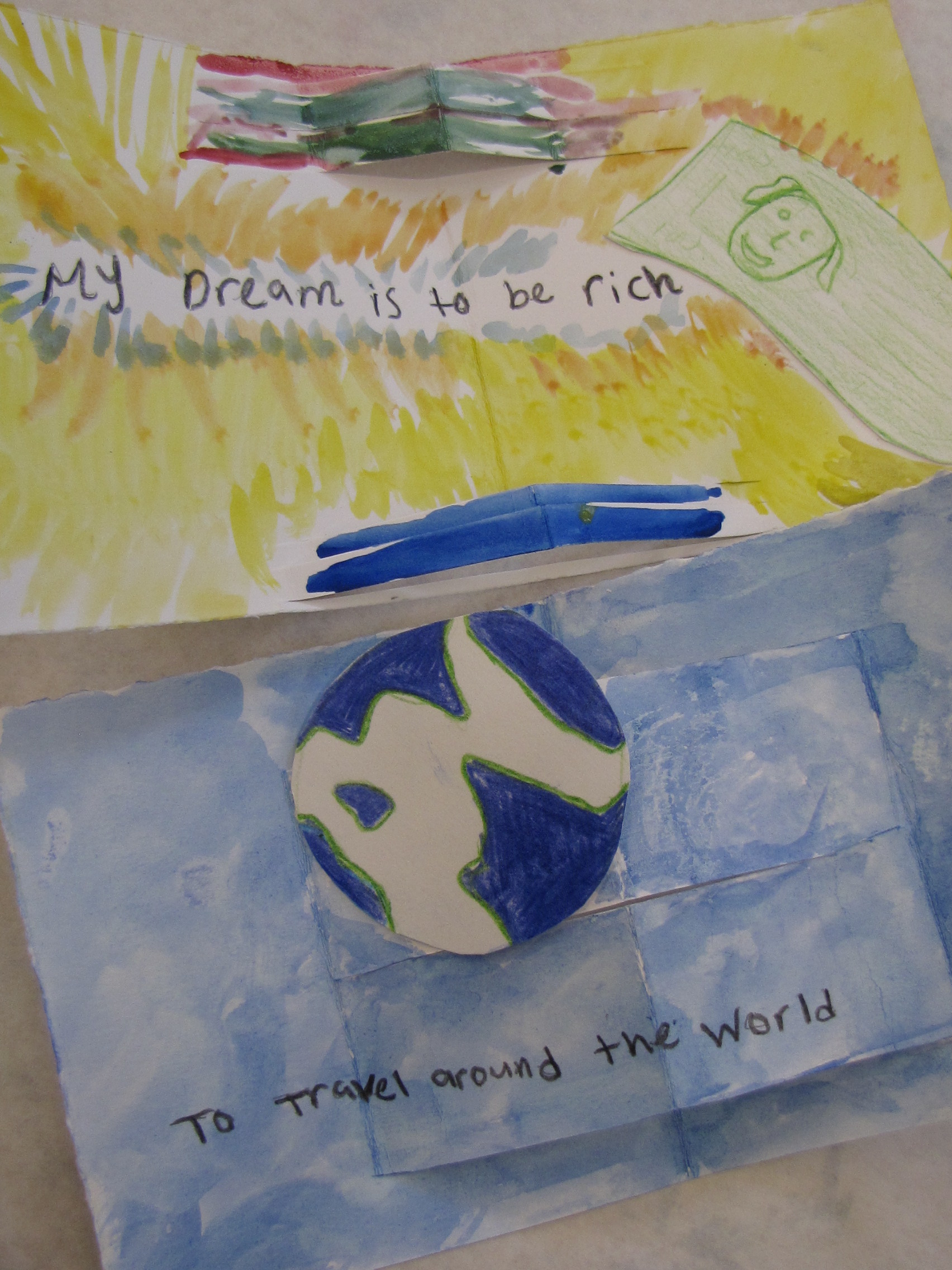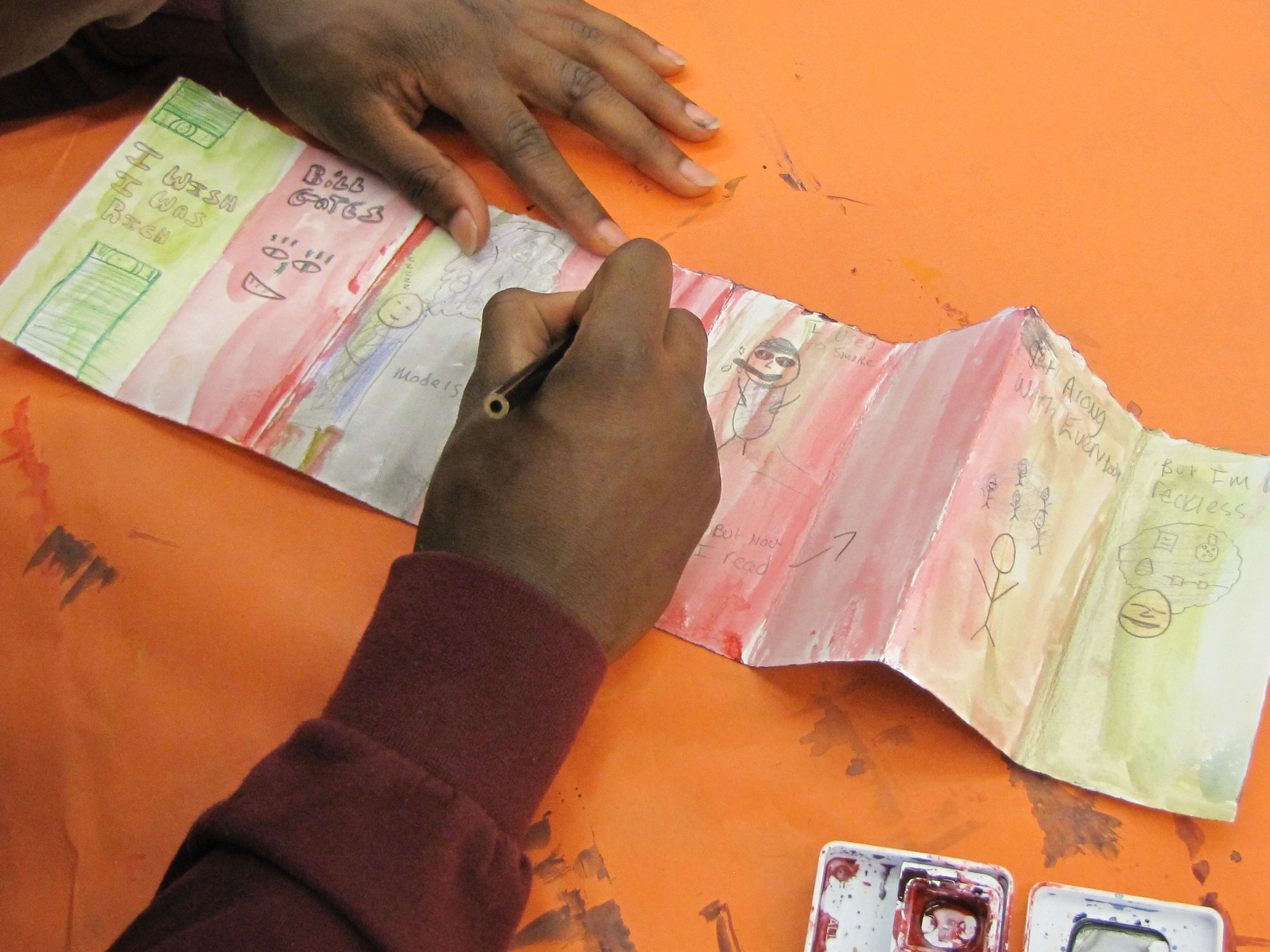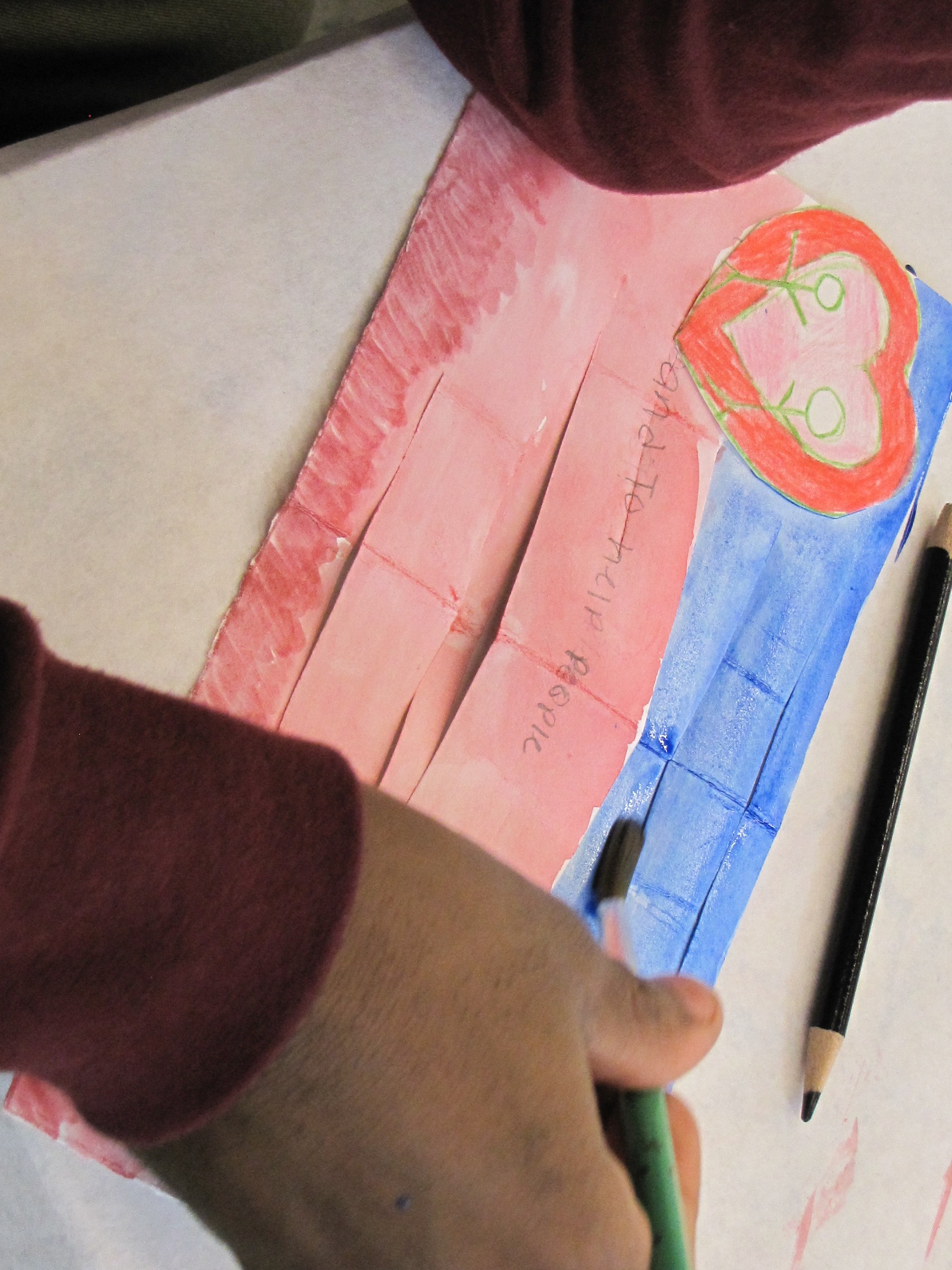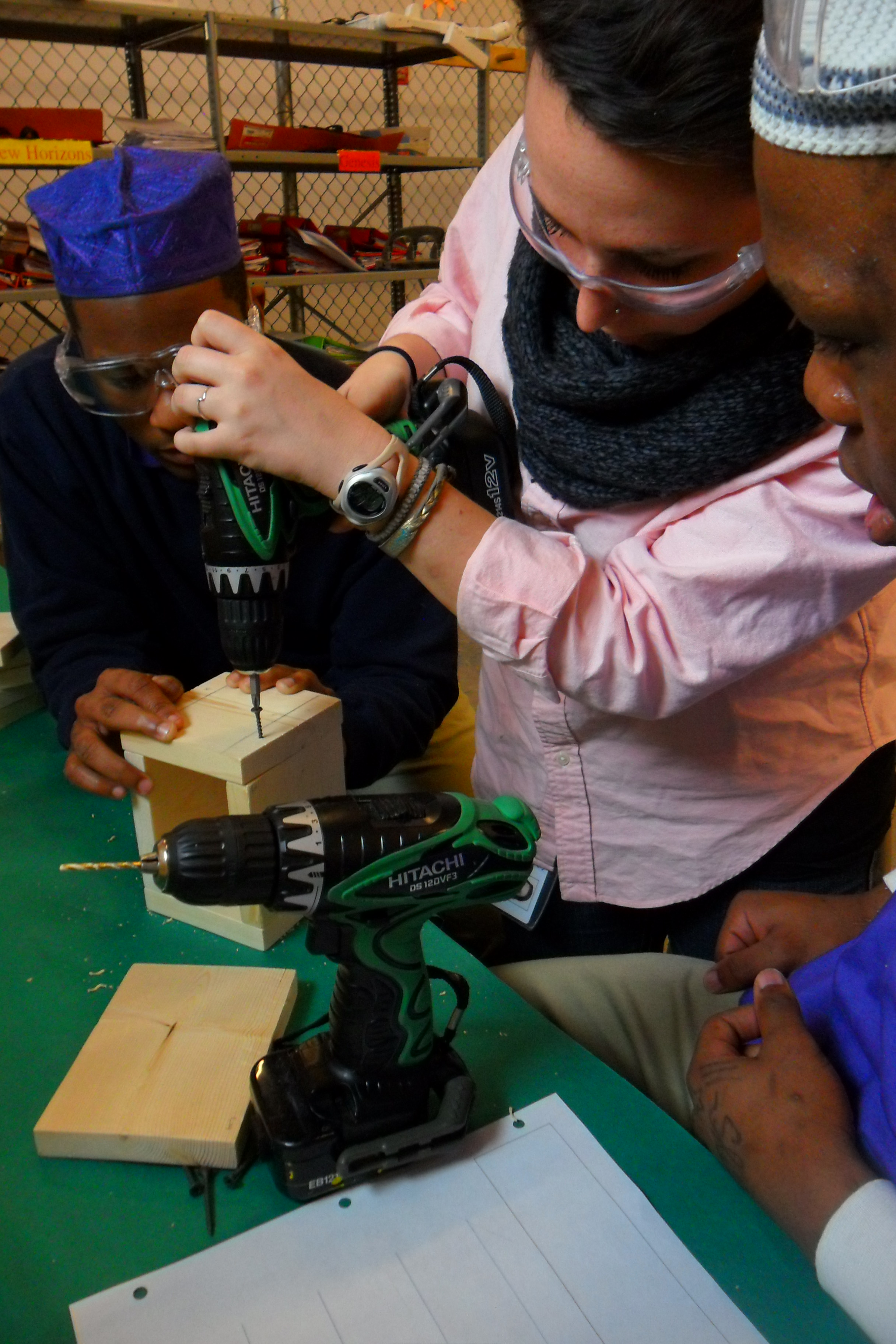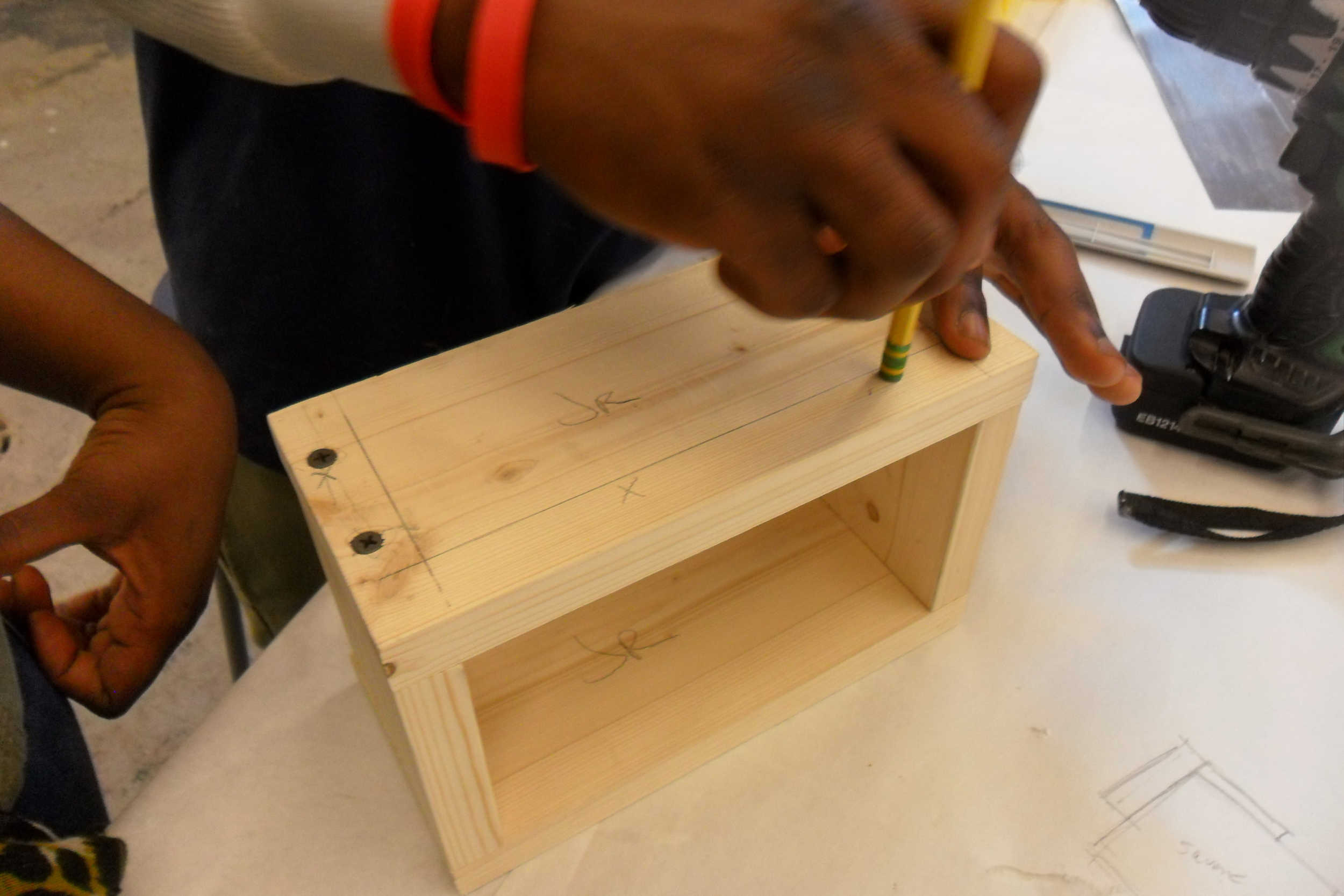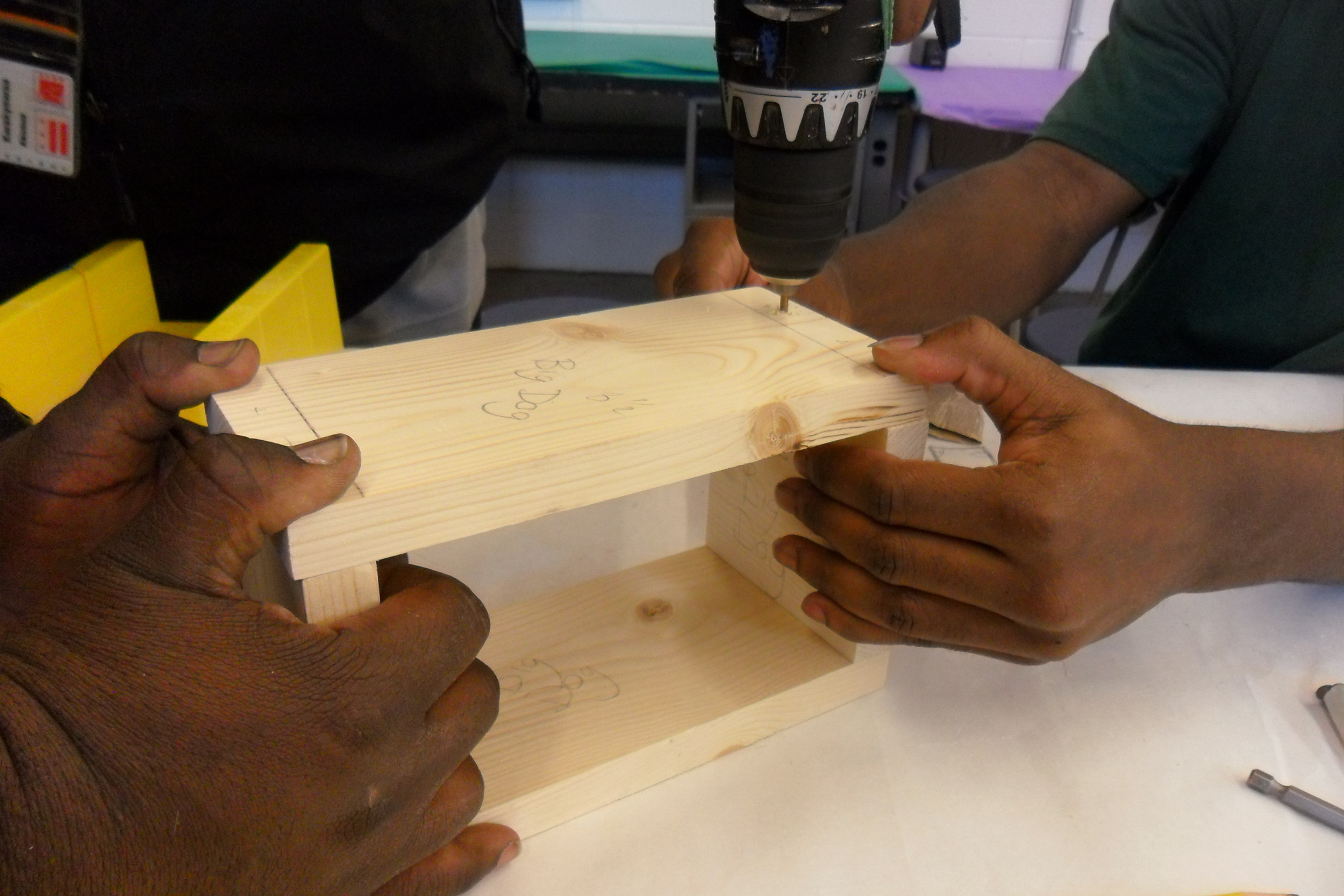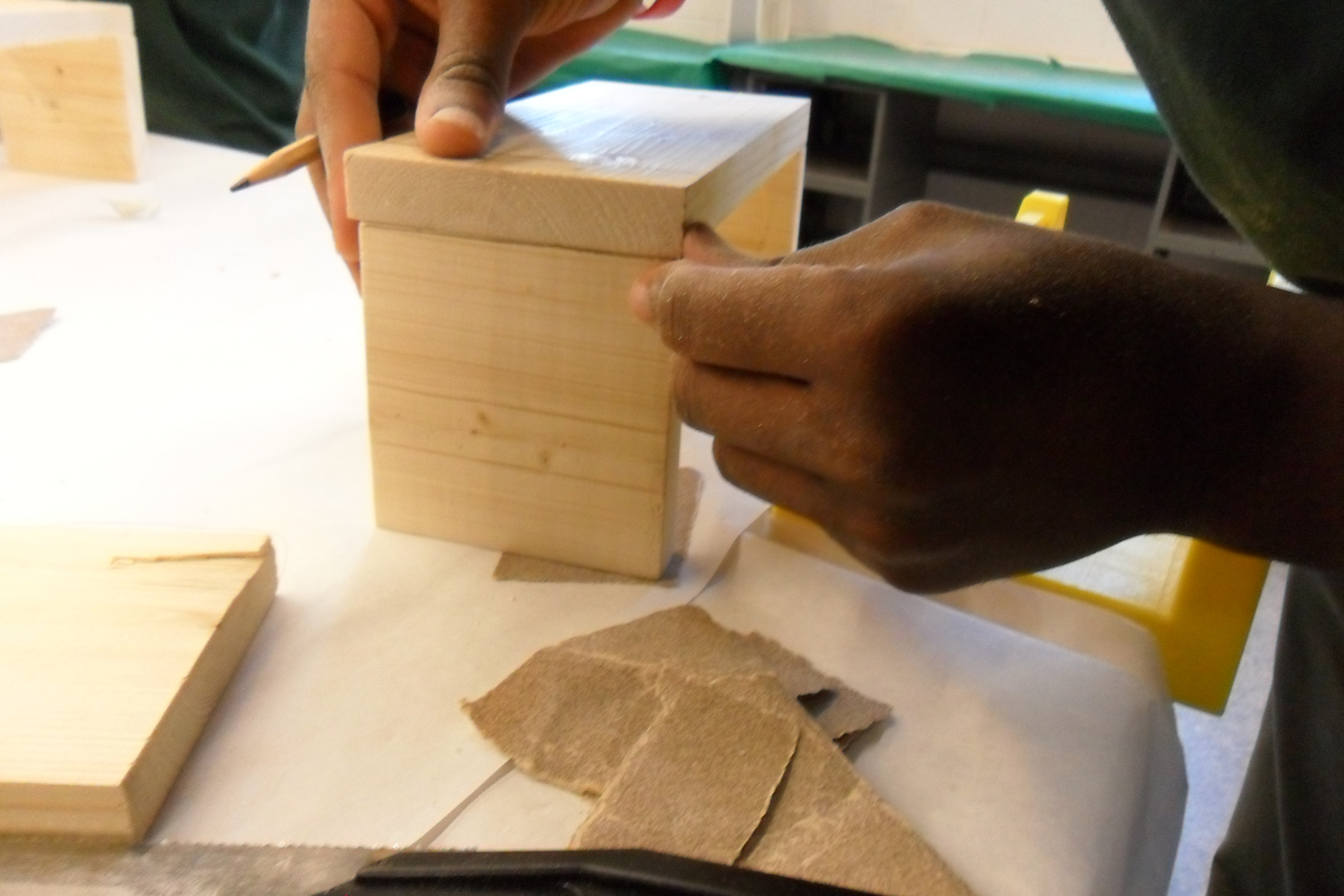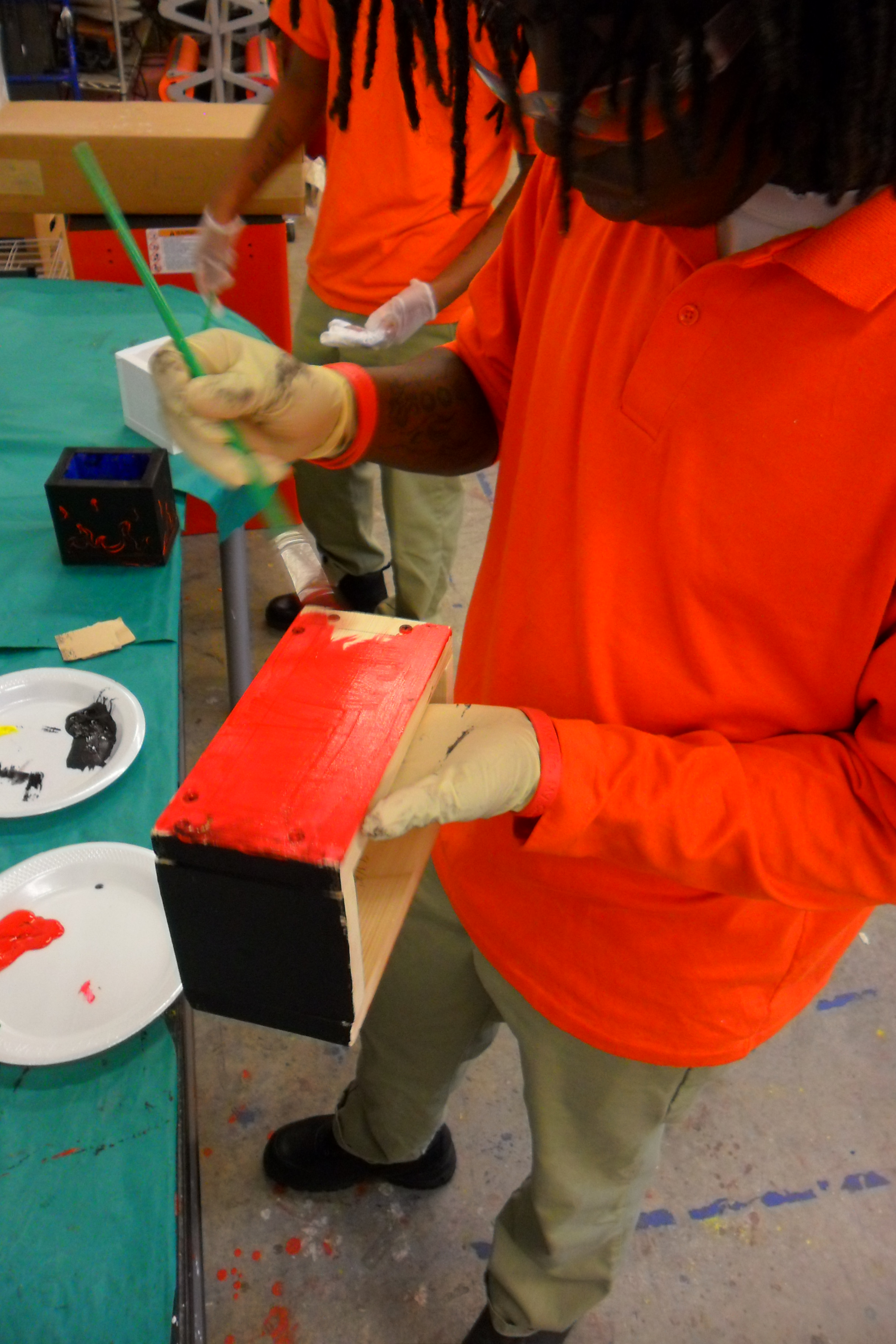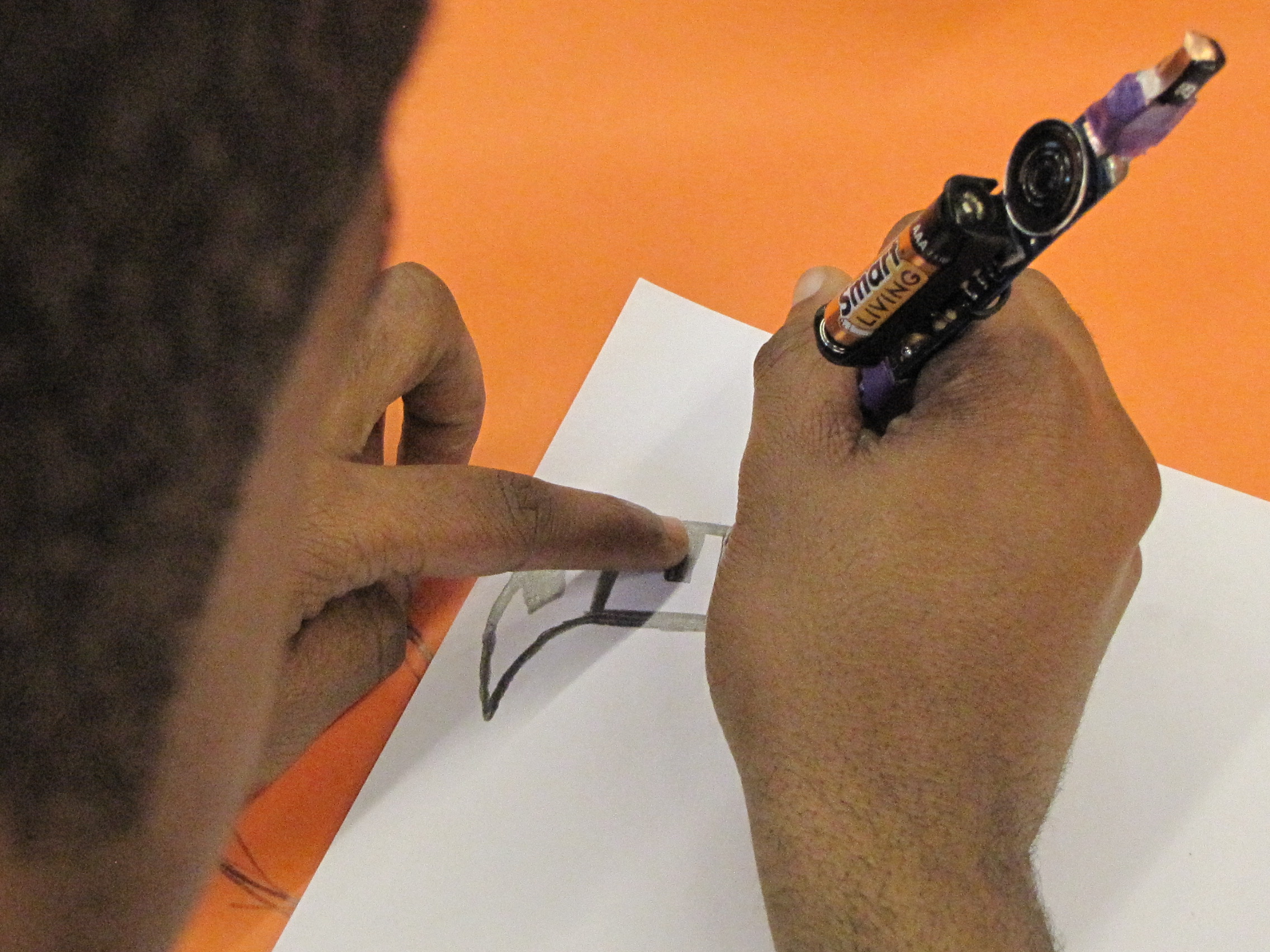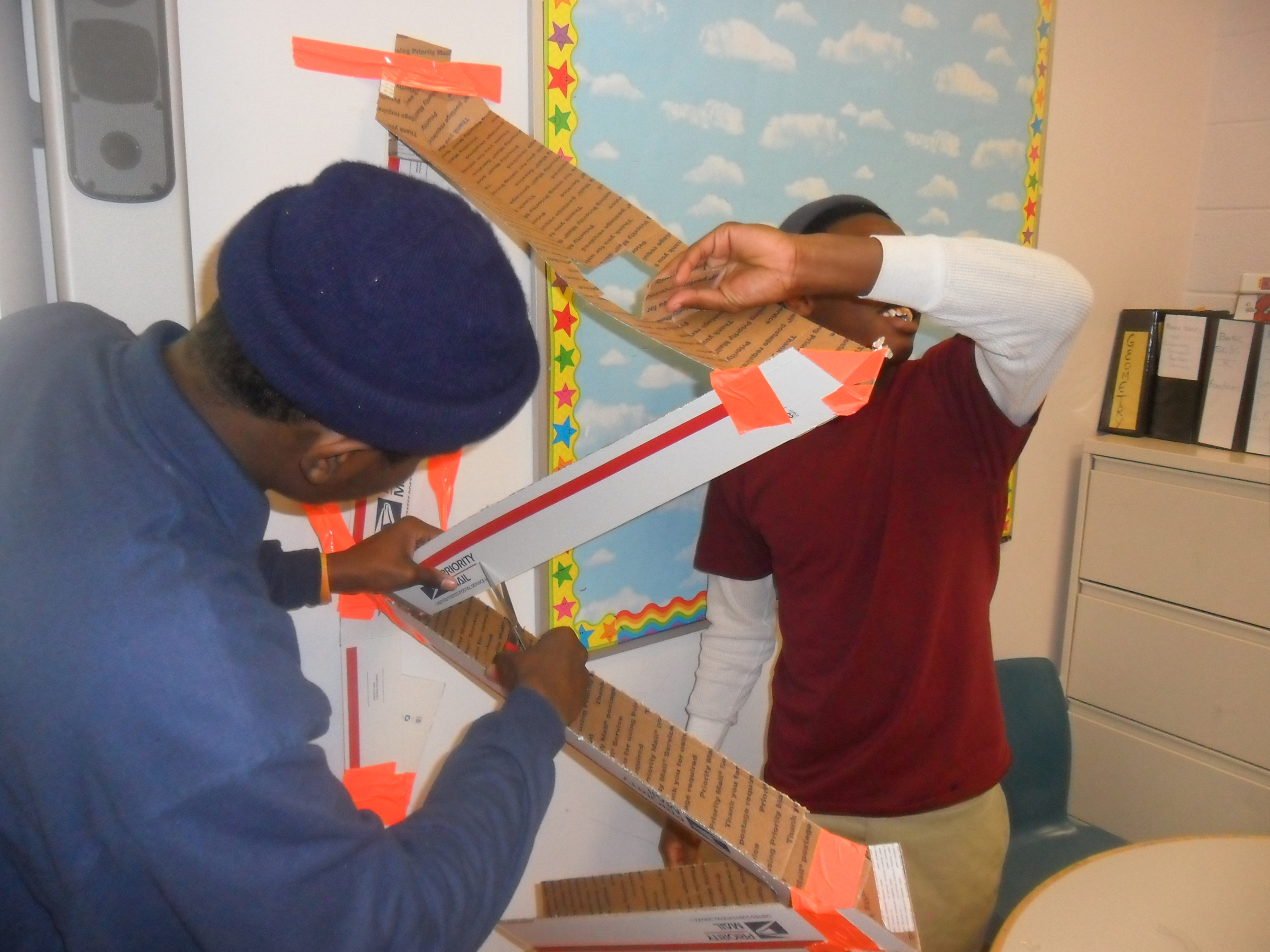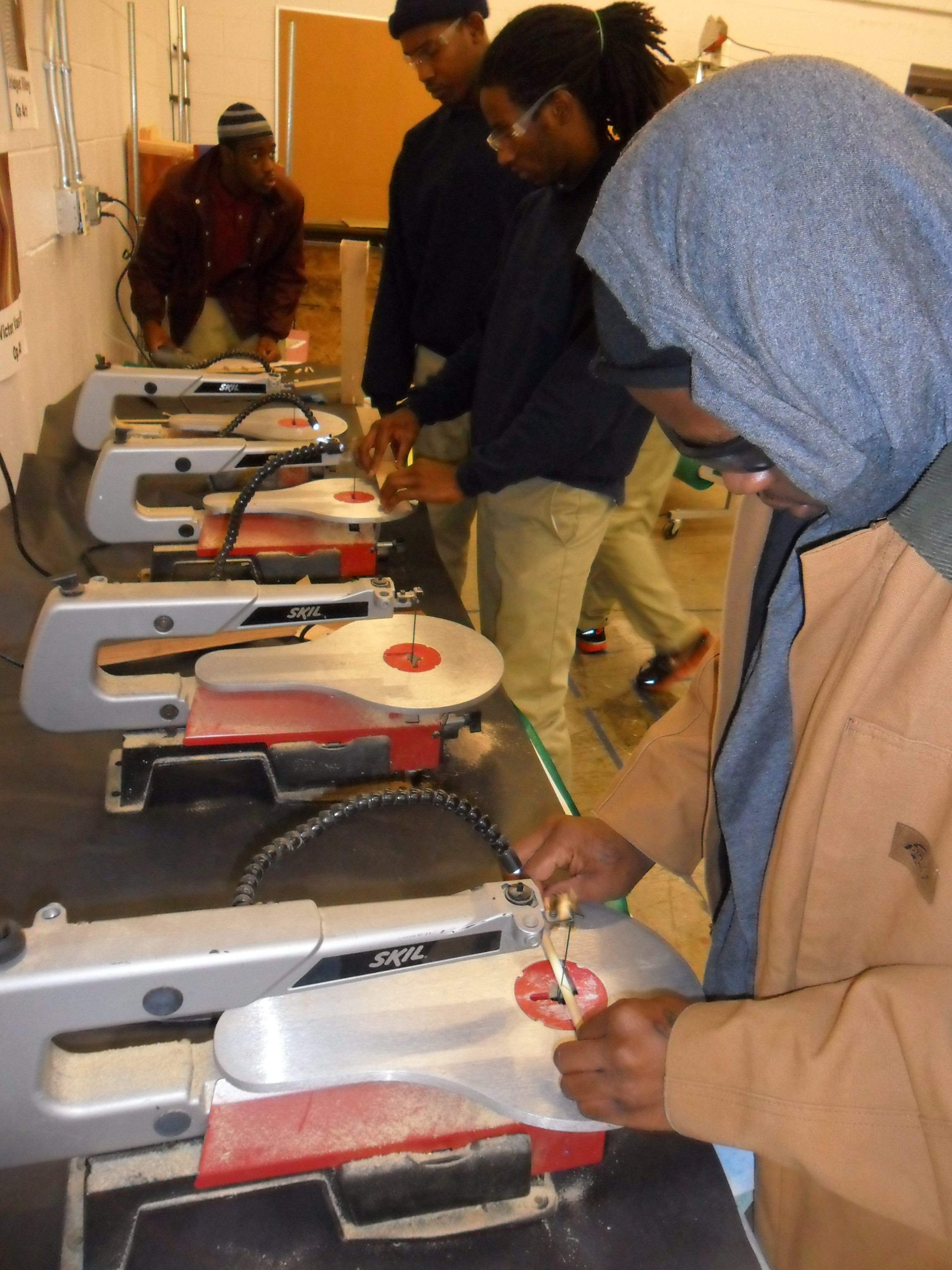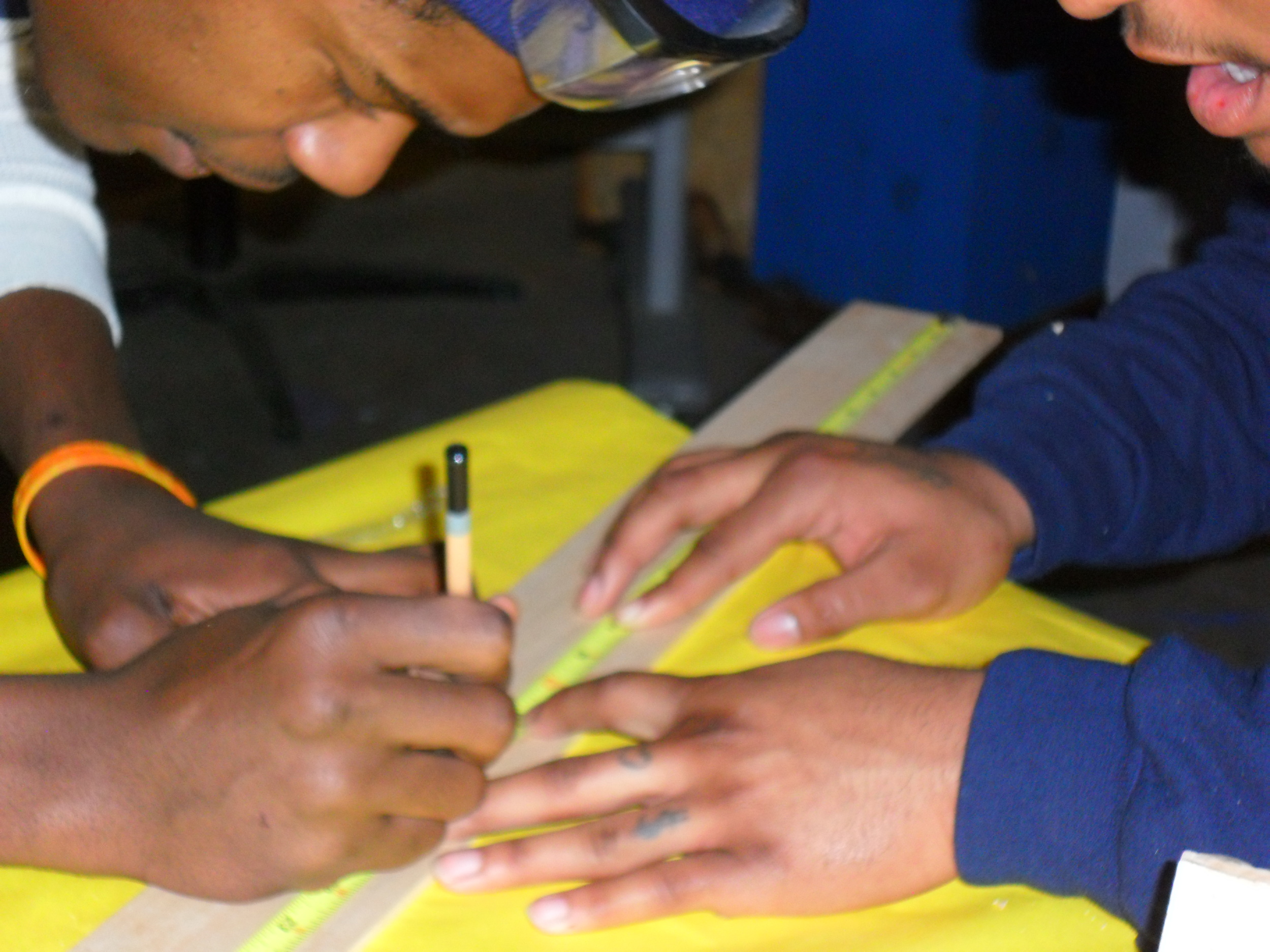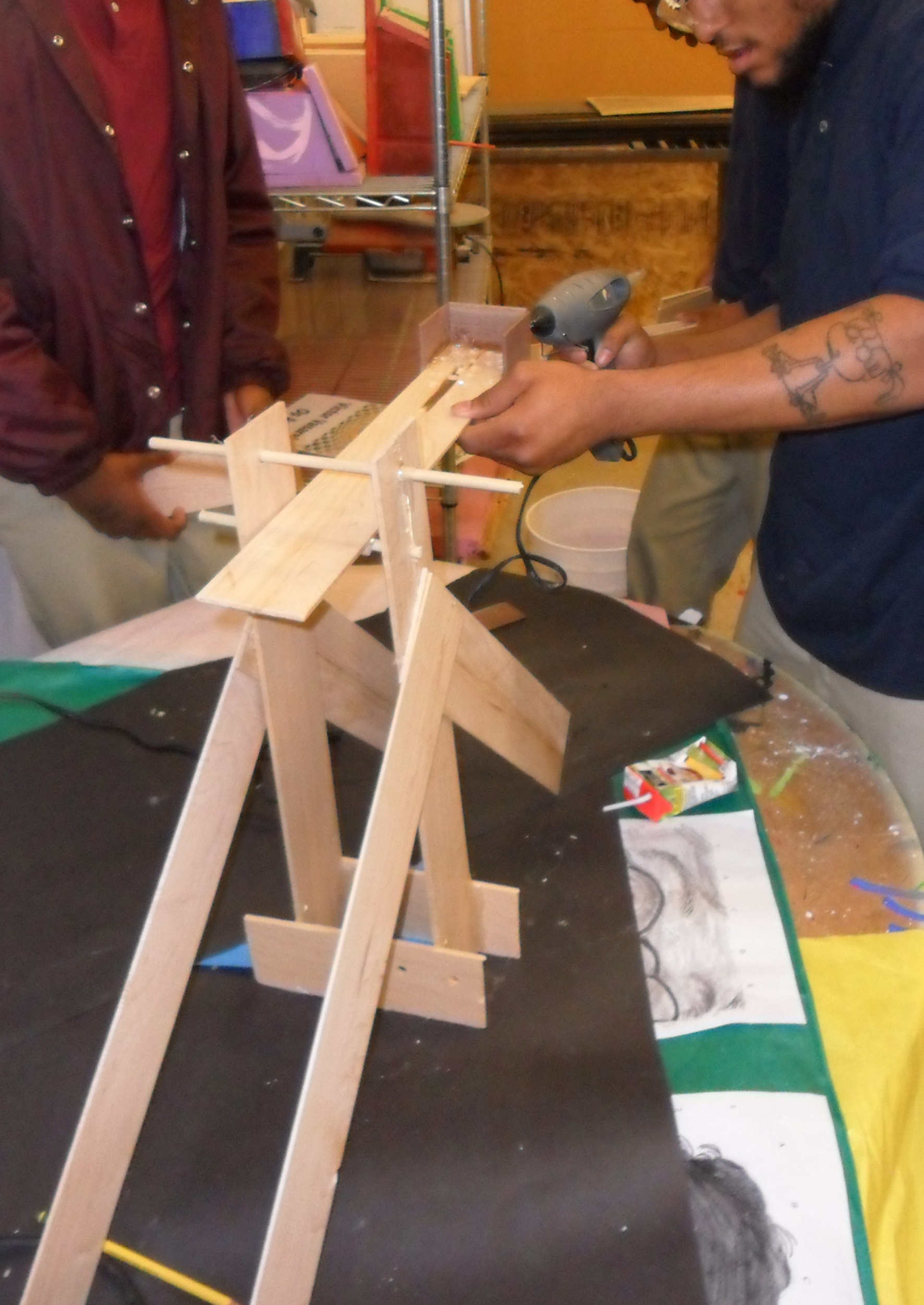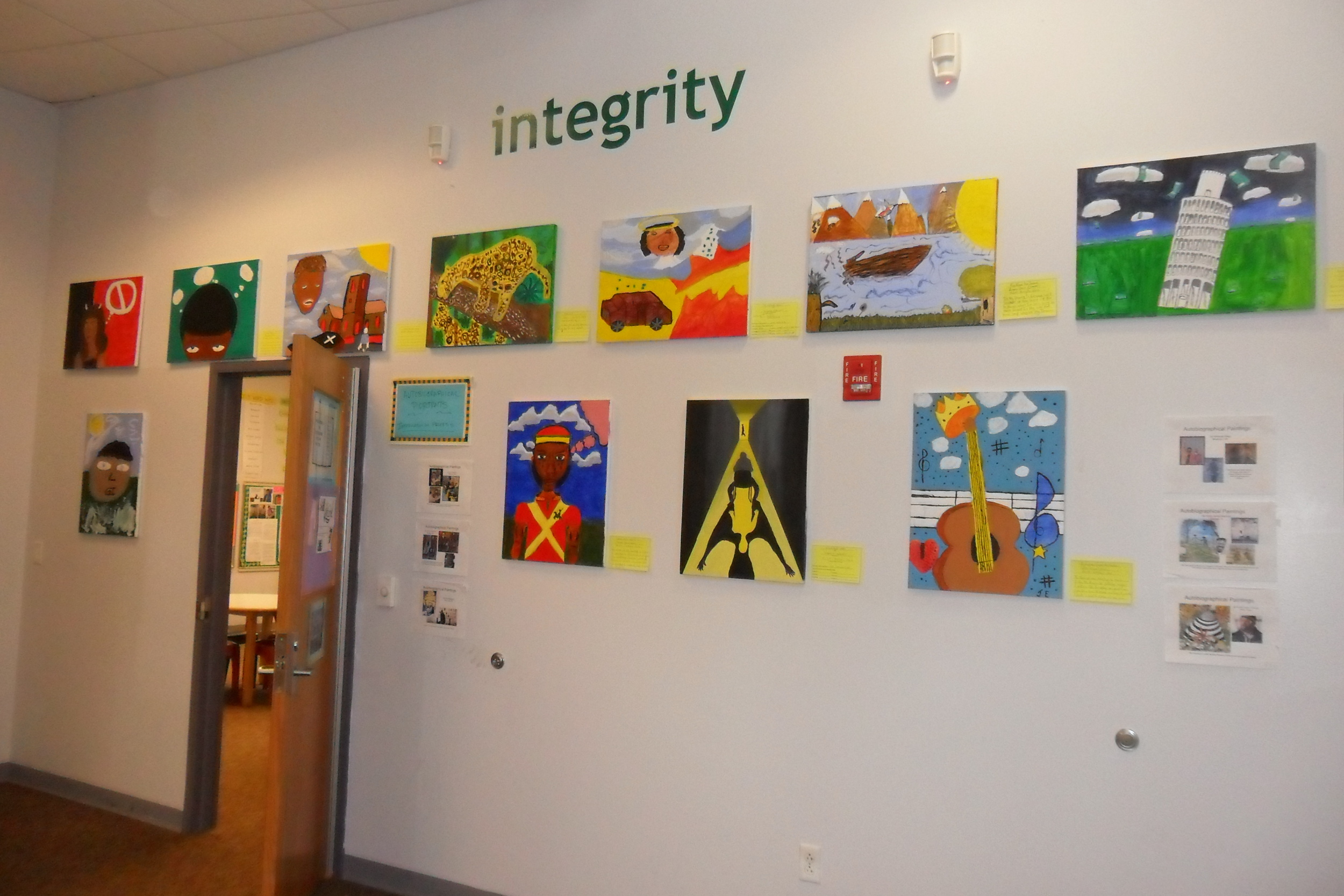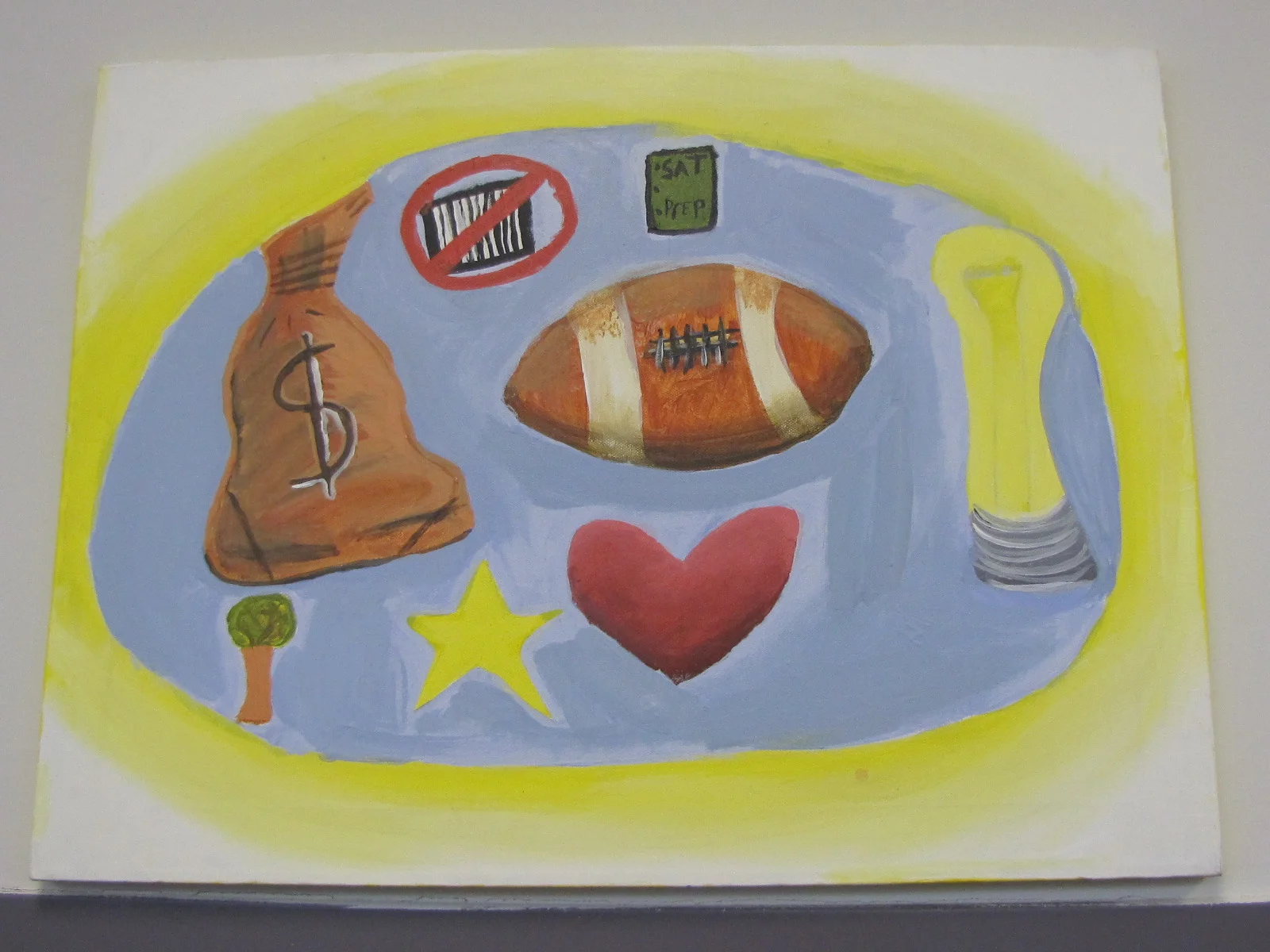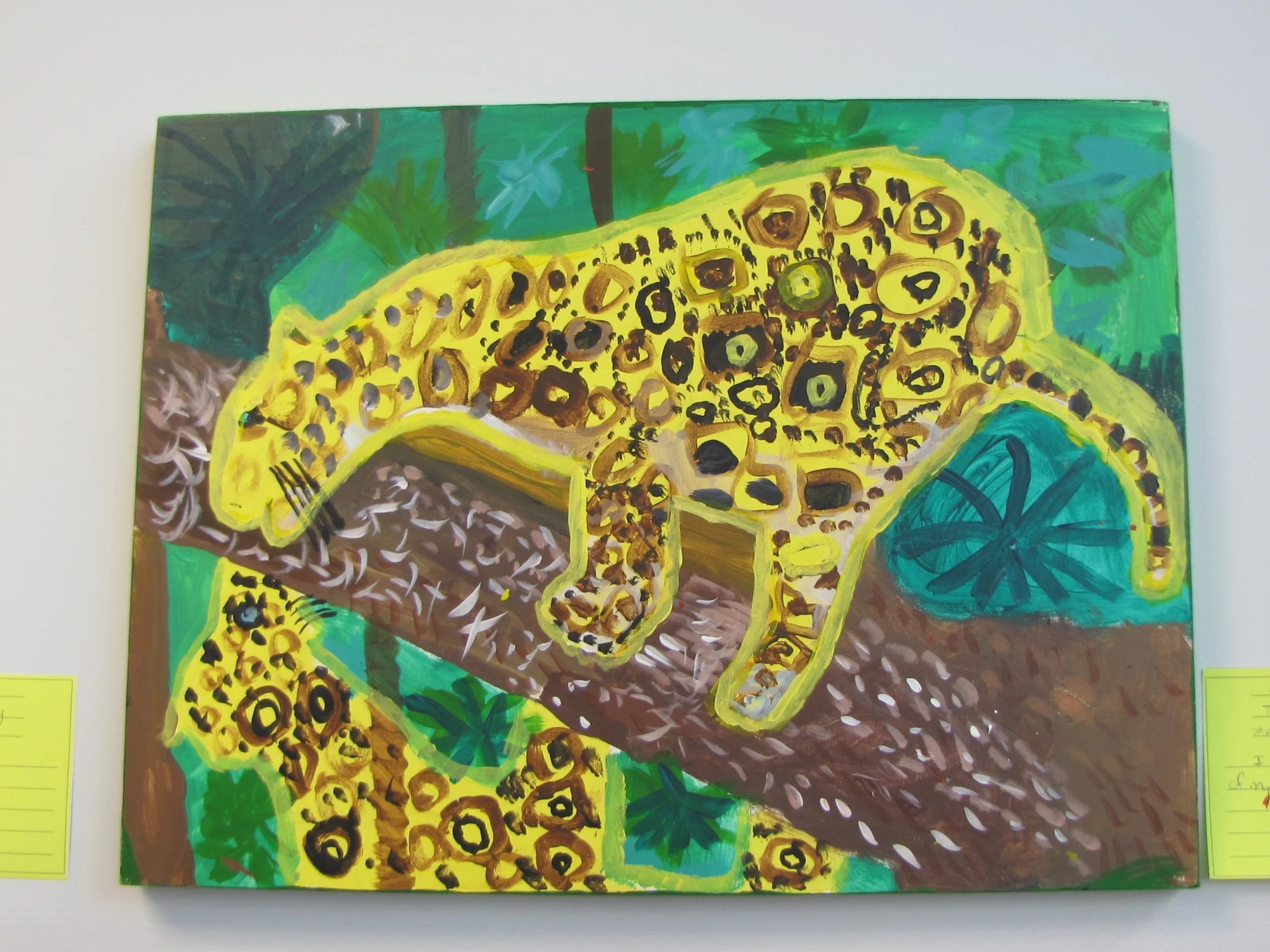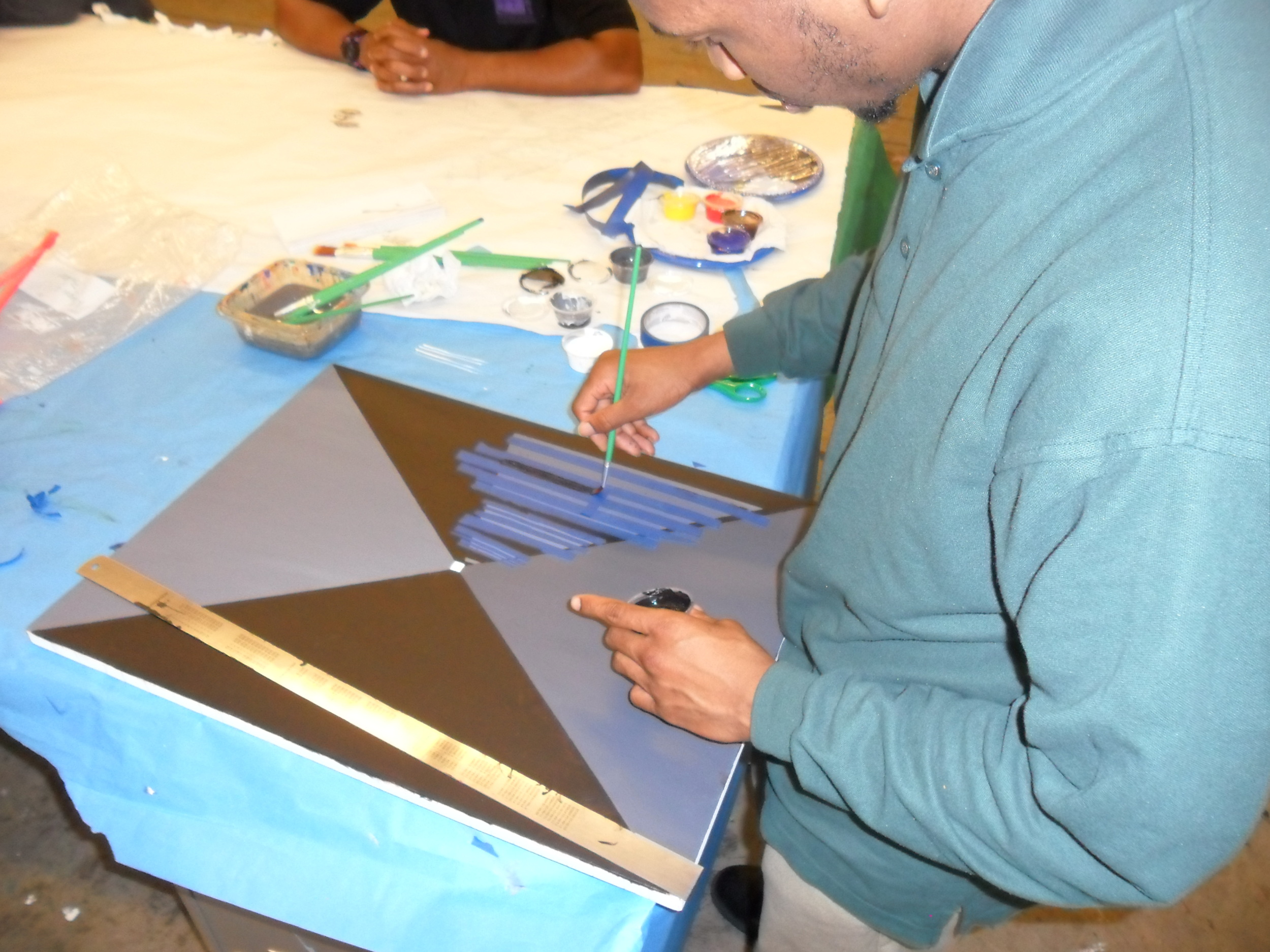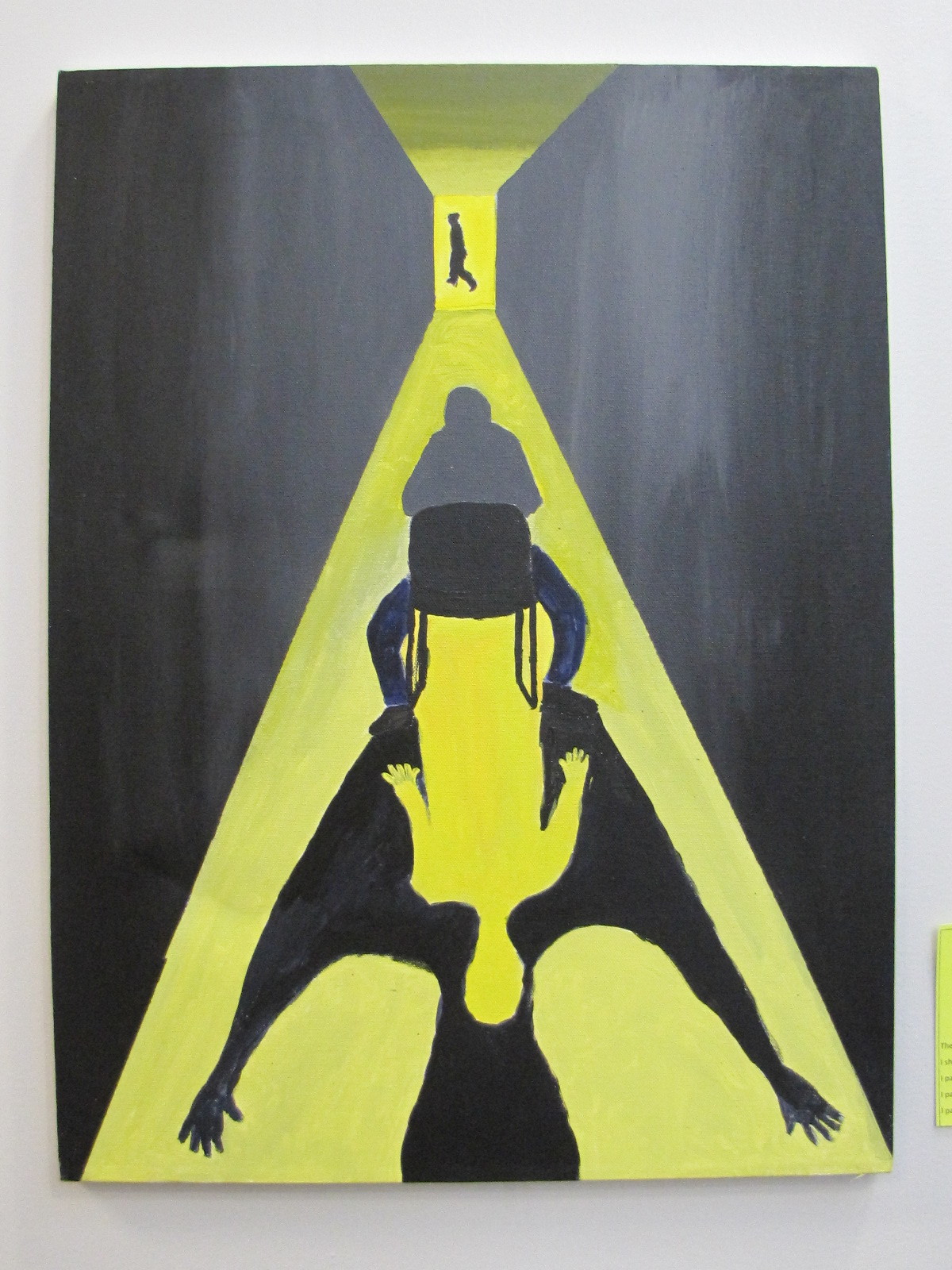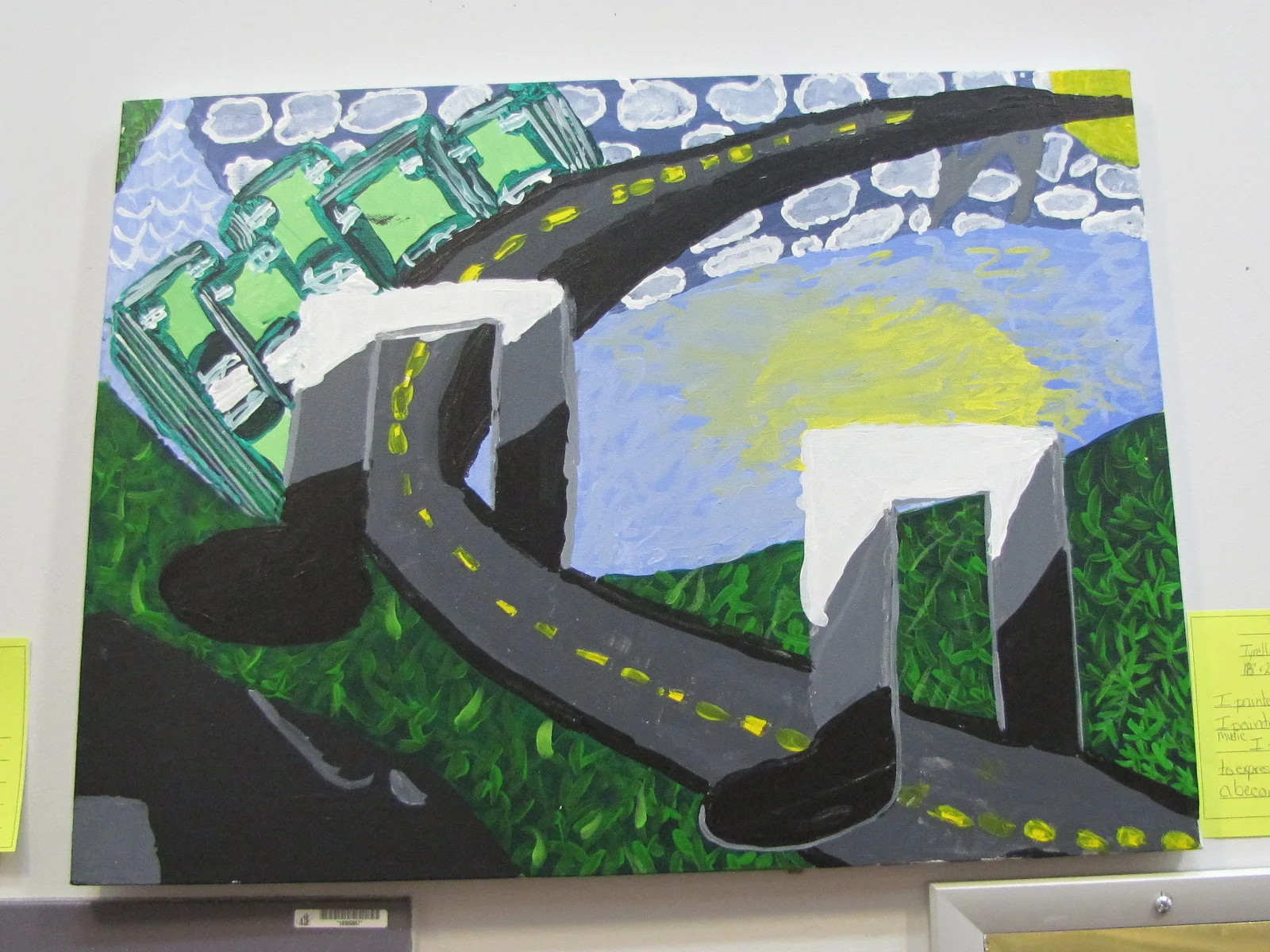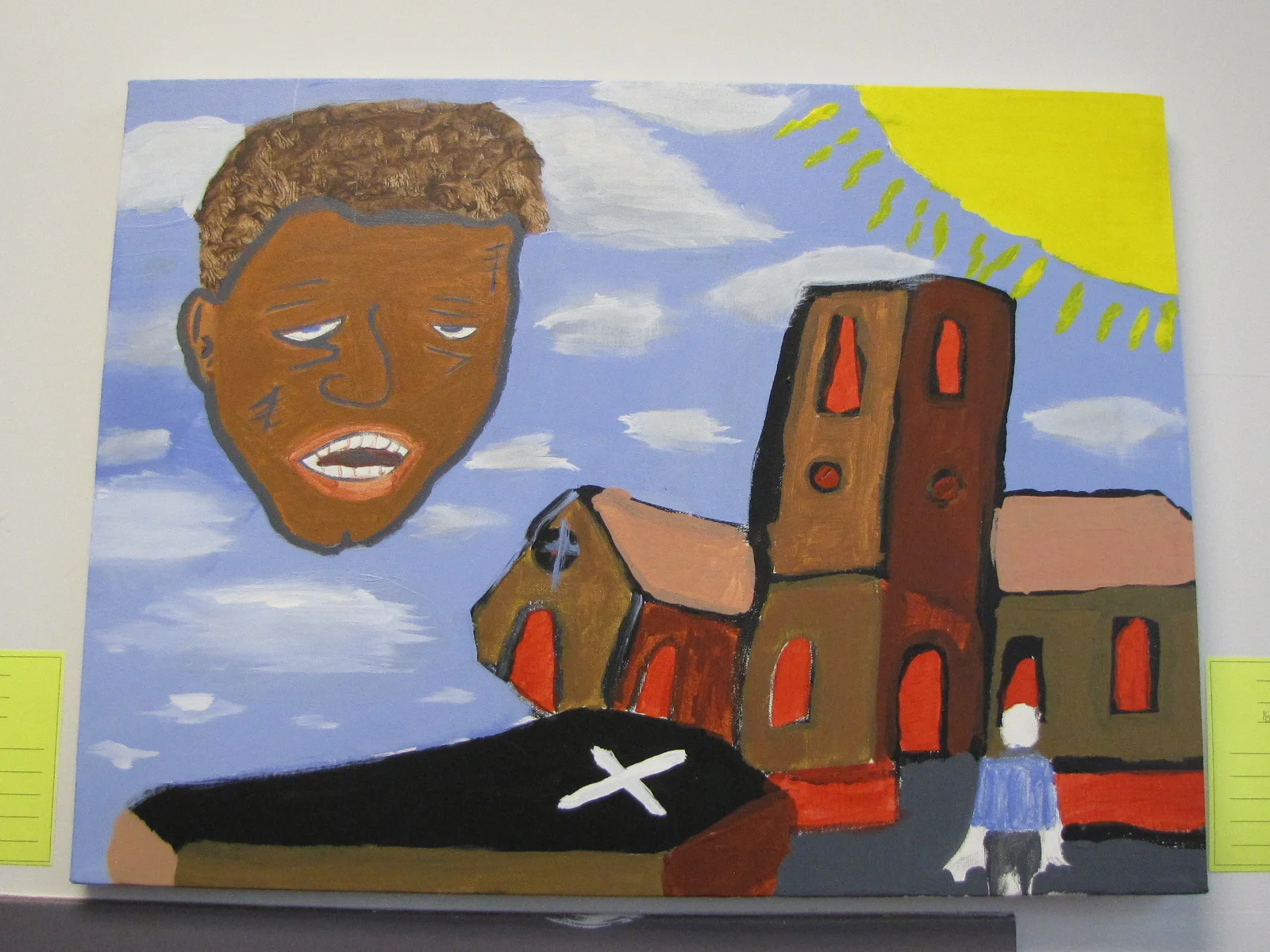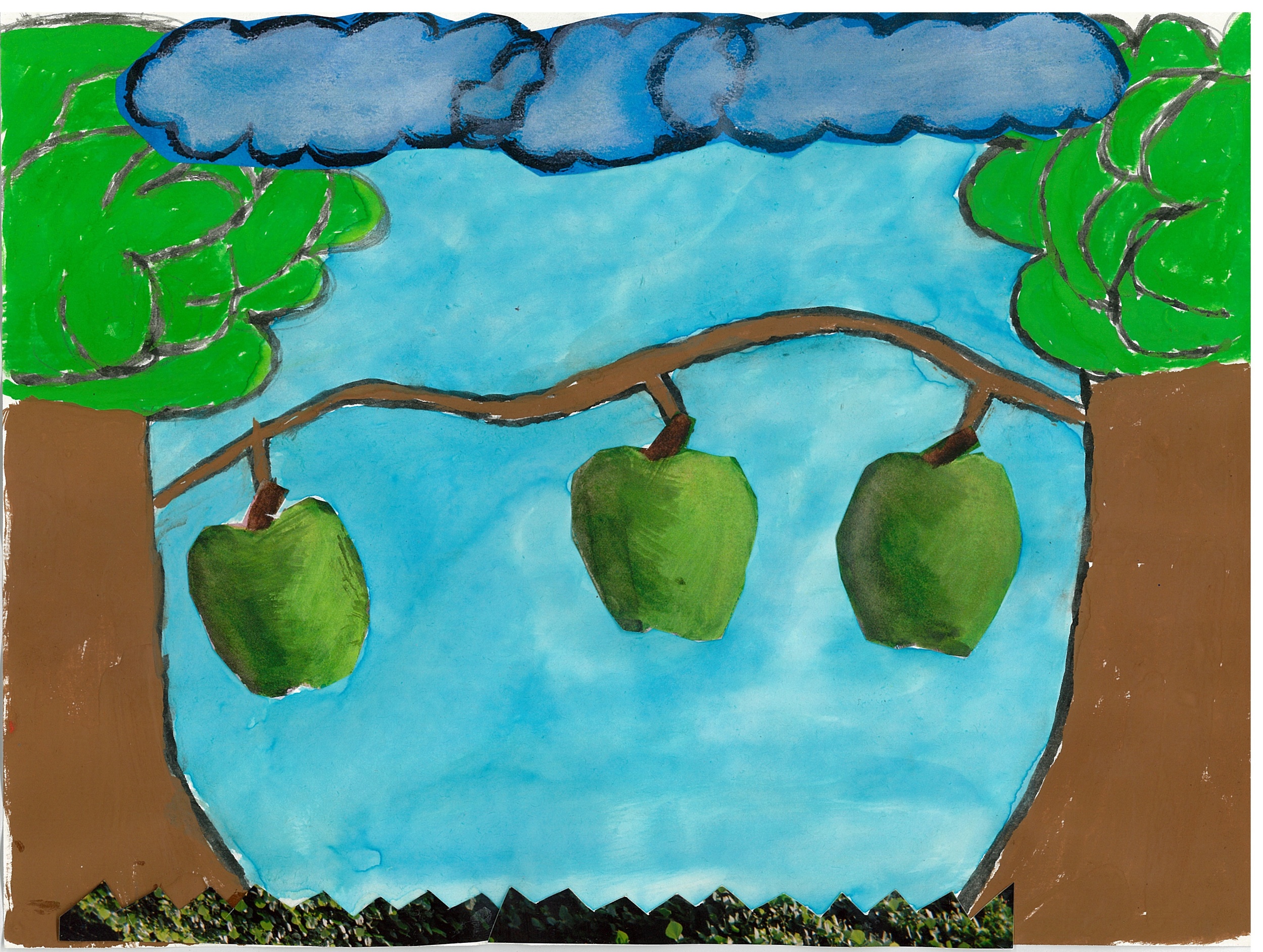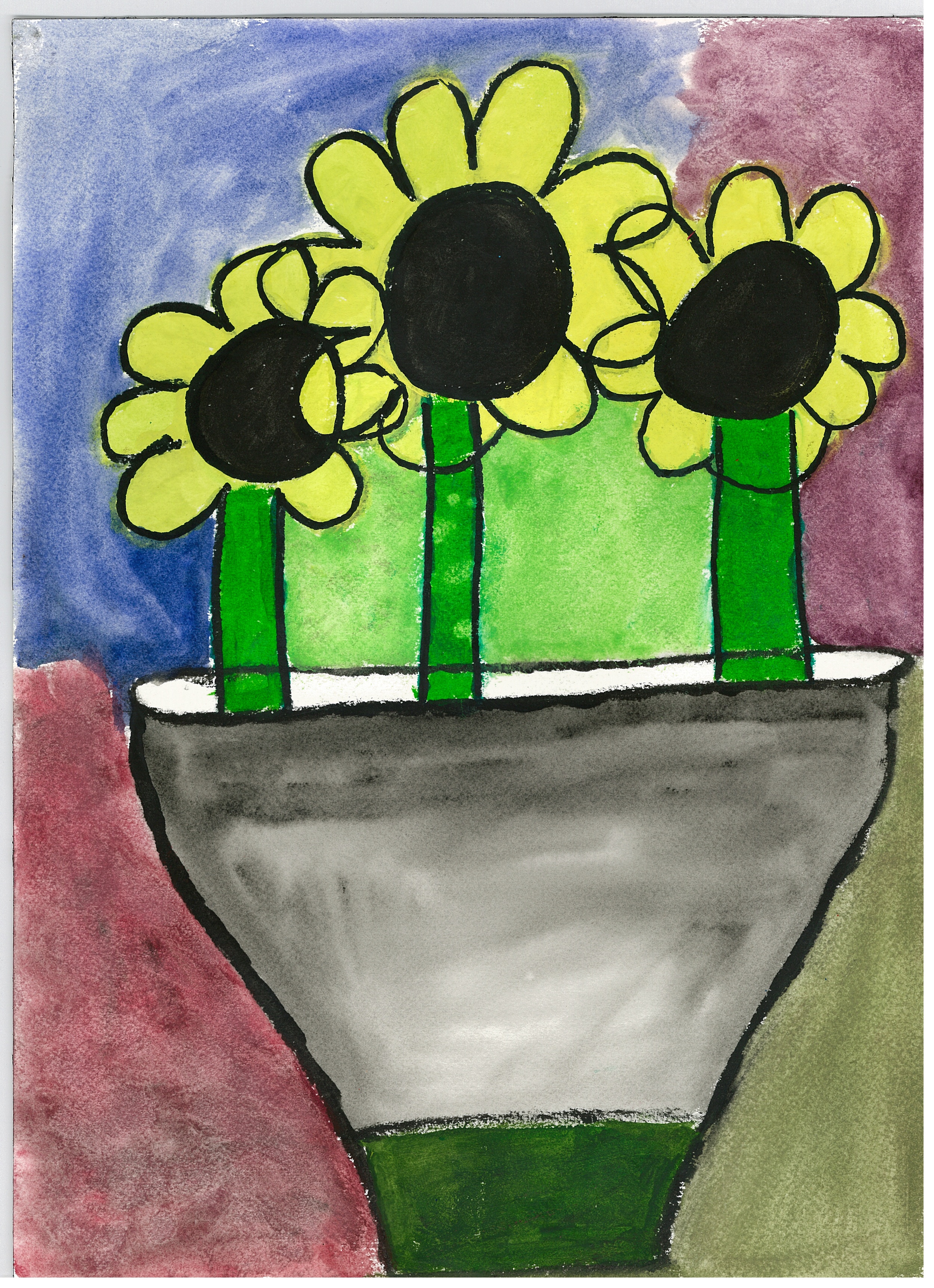New Beginnings
New Beginnings
Yes, those are handguns, that is a cutoff saw, and I am chopping them into pieces. In fact, the top left photo is a very large caliber machine gun. And yes, this is a project for work - and as of this writing, I work in a juvenile correctional facility. I'm a technology teacher this year. Two years prior, an art instructor; prior to that, our Career Institutes programs were active, and I was the Director. One of many projects - including construction, electronics, tinkering, furniture building, outdoor education, GED instruction, and shop math - the Guns to Roses project stands out as a high point of my experience with the See Forever Foundation's Maya Angelou Academy at New Beginnings Youth Development Center.
In 2010, John Mein, who was the special projects liaison and all around go-to guy at the DC Department of Youth Rehabilitation Services, had a great idea: Given the number of young people that we serve with gun charges, we needed to leverage our one-on-one approach to vocational training and challenge their concepts of guns as instruments of power. We imagined a project where the participants could physically transform firearms into sculptures, and by changing the form and meaning, reclaim power for themselves. He invited me to help facilitate the project - starting with collecting equipment, visits to artist-blacksmiths, and convincing members of our leadership teams that this experiment was worth a shot.
Over the course of a year we carefully planned and tested a series of small activities that gained popularity and support, We built the most successful into an integrated craft metalworking program that specifically targeted young men at the facility who had a history of involvement with firearms - either as a perpetrator or a victim. With our group of blacksmith apprentices on the ready, and our carefully acquired forges, anvils, cold working tools, welding tools, and homemade shop furniture, John made his magic happen. The DC Police Department opened their property room doors and allowed us to break several hundred confiscated handguns, rifles, and other firearms down into parts for sculpture. We chopped, forged, and smashed them. Most were heated red hot, and their receivers were completely destroyed with several blows of a heavy hammer. Some pistols, made of pot metal, puddled and steamed out poisonous gasses; others, too large or heavy to heat through, had their barrels and firing mechanisms welded shut. Everything else - composite pistols and wooden shotgun stocks - was chopped into parts, and composite parts shredded. When all had been rendered into rough bits and pieces, all were packed tight in locked steel job boxes, and loaded back to New Beginnings in Laurel, MD.
This was a project that did more than challenge the status quo - we were in a jail, after all. It challenged the participants to think beyond their boyish fascinations and urges to play "guns". It created concern amongst the staff who - although they received preparation and an operational plan was well in place - were not fans of guns as material in a piece of artwork. One component escaped our workshop, and was quickly found in the gymnasium, sending the facility into a high state of alert. We buttoned our production process down tight, recounted all of our materials and tools, and with a team of committed and talented young craftspeople, successfully created a series of sculptures - all of which are on display at the facility. You're greeted by one every time you enter the electronically locked double doors of the secure side of the facility. The students designed a life cycle - a tractor green handgun caterpillar climbs a tree, and transforms into a plasma cut and wrought iron butterfly, surrounded by roses, flowers, reeds, cattails, and delicate, twisting branches. Another, a boy running through a field of roses, is made completely of blue steel handguns and rifle barrels - their power clearly and intentionally redirected into a positive, joyful expression of freedom.
Prior to New Beginnings, there was Oak Hill. I was part of the original team that was selected in 2007 by the See Forever Foundation to transform a fenced "school" (already inside the razor wire perimeter) with inconsistent instructional services and few students into a high performing, content rich, scholar-centric program. During my time with See Forever, Oak Hill was closed forever, and New Beginnings was opened. Our program - the Maya Angelou Academy - is an operational and youth development centerpiece of the facility, and has been recognized internationally as a school of excellence. It's evidence that young men - even those who had been thrown away to be raised by the justice system - are capable of greatness when provided with relevant and challenging curricula, highly effective instructors, and an atmosphere of consistently high expectations.
